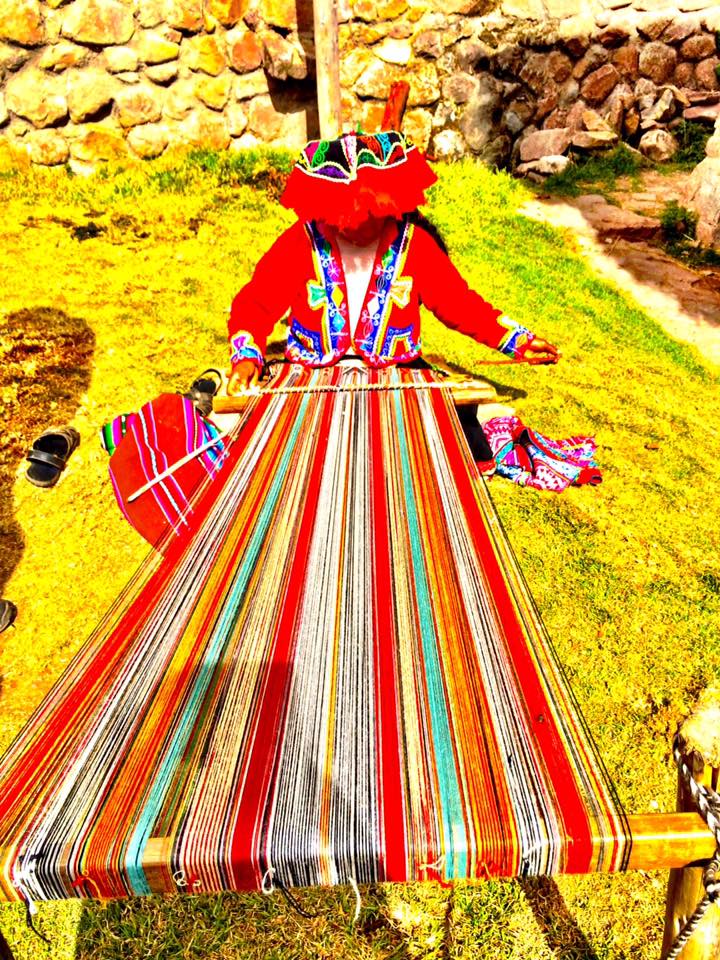
If you are planning a trip to Peru, Machu Picchu is likely the reason you are visiting. In order to do that, you must visit the Sacred Valley, and, as Chad and I learned in the five days we spent there, there is much more to the Sacred Valley then just Machu Picchu.
We arrived in the Sacred Valley on a domestic flight from Lima to Cusco. We flew Avianca Airlines coming in, and if we could do it over, we would’ve gone with LATAM (formerly LAN Airlines), as we experienced an inexplicable FOUR HOUR delay (as in Avianca NEVER provided an explanation for the delay or why their later scheduled flights to Cusco and other flights to Cusco on LATAM Airlines continued to depart as we sat there waiting), which cut into our touring schedule for our first day in the Sacred Valley. When we finally got to Cusco, we were greeted by this as we stepped off the plane:
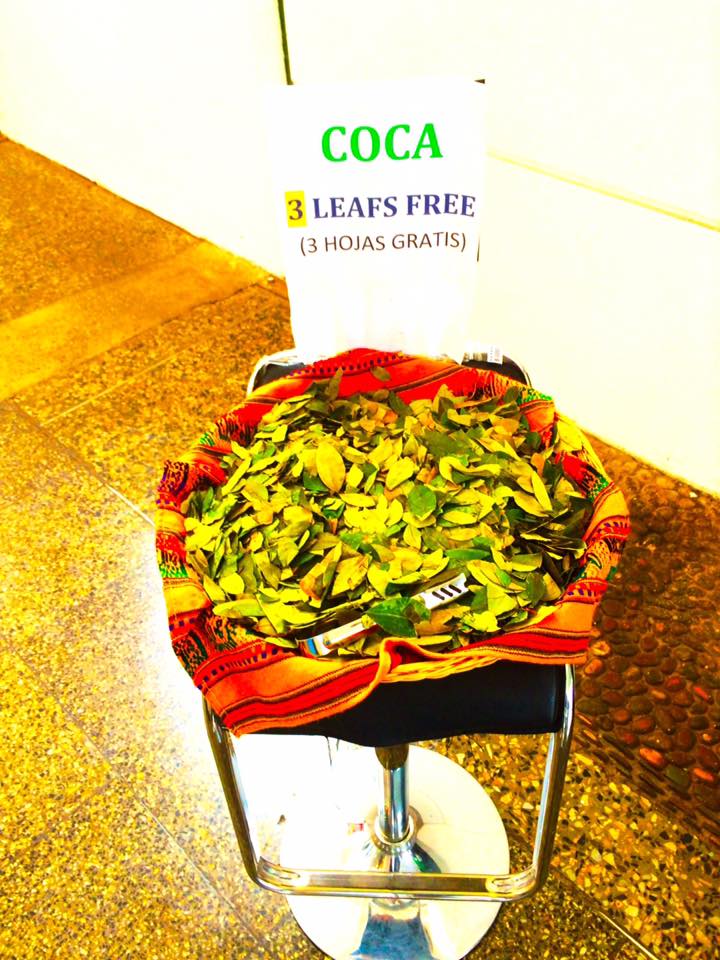
Cusco sits at an altitude of 11,200 feet above sea-level, so one of the main concerns when visiting Cusco is altitude sickness. Chewing on coca leaves and drinking coca tea are supposed to ease the symptoms of altitude sickness. The significance of taking three coca leaves is that the Peruvians believe that three coca leaves bring good luck. However (and I am NOT a doctor, I am not giving you medical advice, and you should consult your doctor about this), you should be aware that consuming coca may cause you to test positive for cocaine, as the drug is the derivative of the plant. That being said, Chad and I had no issue whatsoever with the altitude (and did not consume any coca products), other than being a little winded when we were climbing the millions of stairs necessary to reach almost every historical site of significance. This is due to the lack of oxygen at that altitude. If you are worried about the altitude, there is a medication called Diamox (Acetazolamide) that you can be prescribed and can take with you for the trip, but if you are allergic to sulfa-based drugs (like I am), you cannot take this, either (again, please consult with your doctor). Otherwise, the best advice, especially if you are staying in Cusco upon arrival (which I do not recommend), is to take a nap as soon as you get to your hotel, take it easy for the first day (as in, don’t start your Inca Trail hike (if that is what you are doing) on day one), drink plenty of water, and avoid alcohol and drug use. The recommended itinerary is to immediately head to the lower altitude of the Sacred Valley, like Pisac, Ollantaytambo, Urubamba, or Aguas Calientes/Machu Picchu, and then make your way back up to Cusco, which is precisely what Chad and I did.
Day 1
Our first stop en-route to lower elevation was to Awana Kancha (ah-wan-ah-kahn-cha), a small camelid farm dedicated to the animals and intricate textiles produced from their wool. You can see and (sometimes) pet the resident llamas and alpacas and see locals weaving using traditional techniques and dying methods. There is also a shop on the property that sells the woven textiles made on the property.
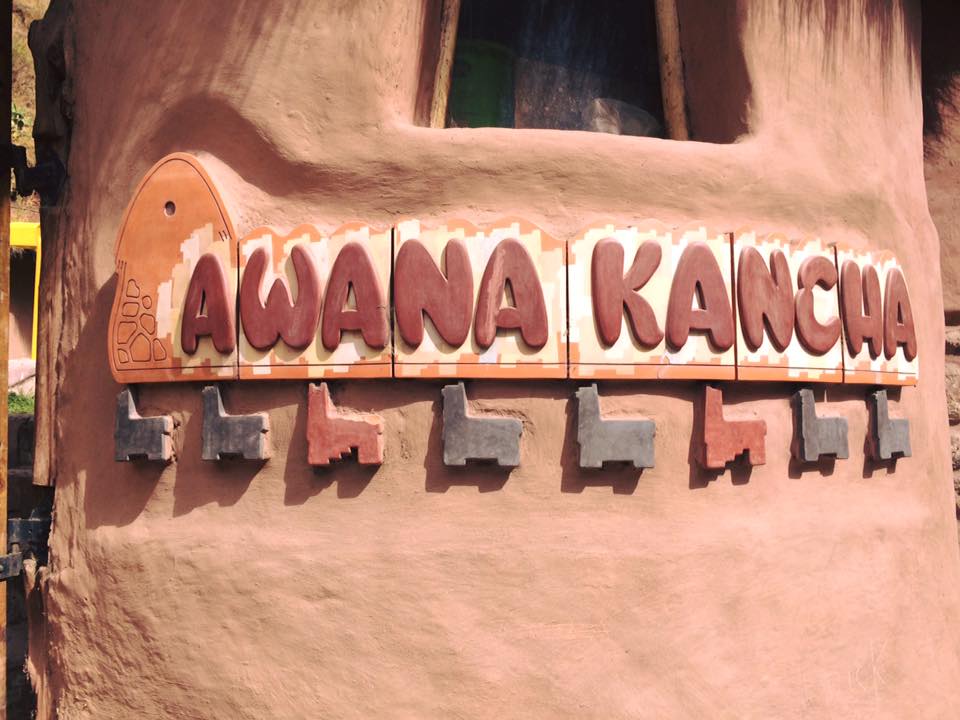
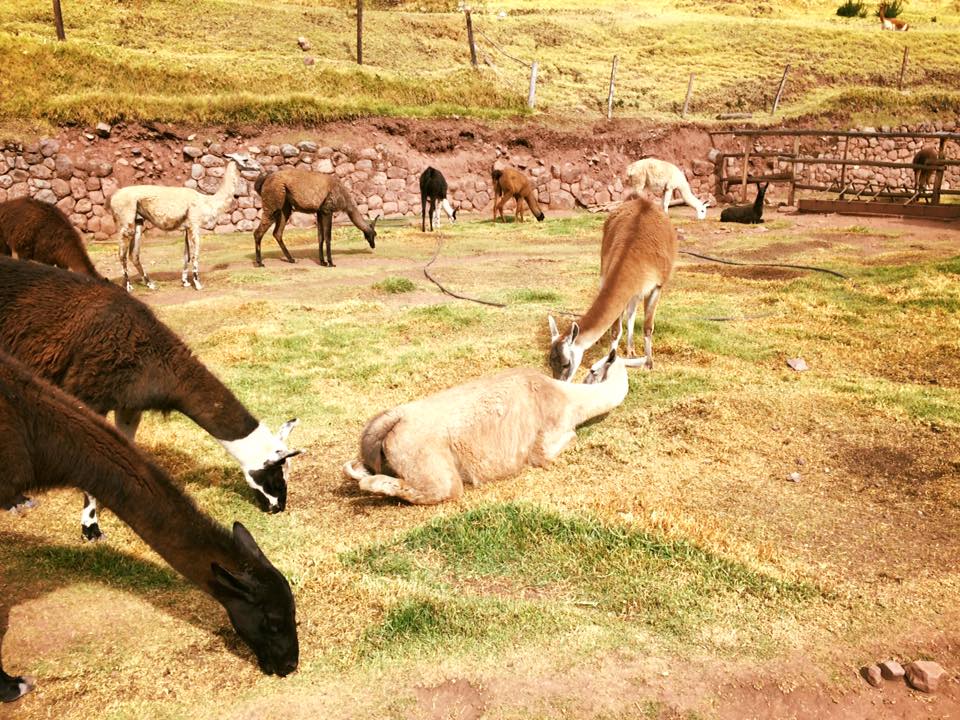
We learned the difference in quality between the wool of a llama and an alpaca and saw the traditional method of making colored dyes for the wool using natural plants.
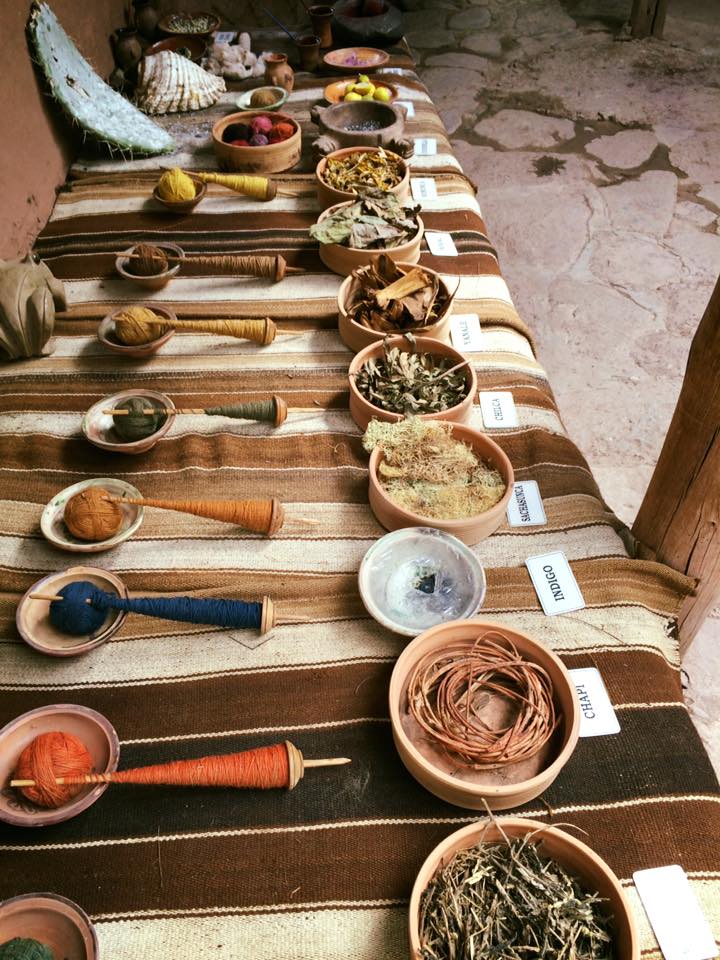
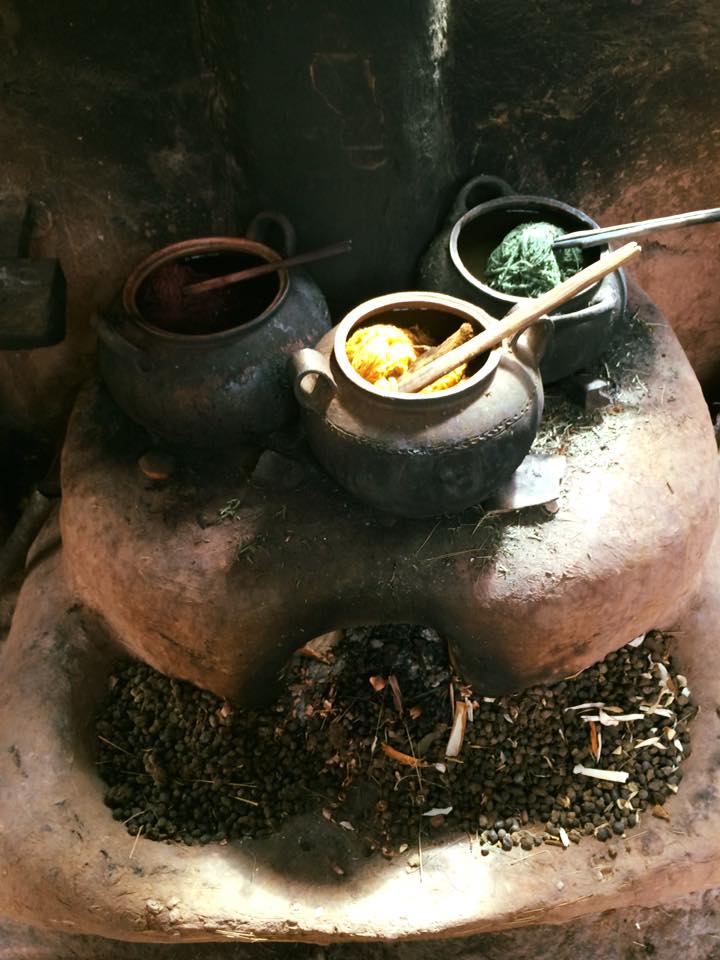
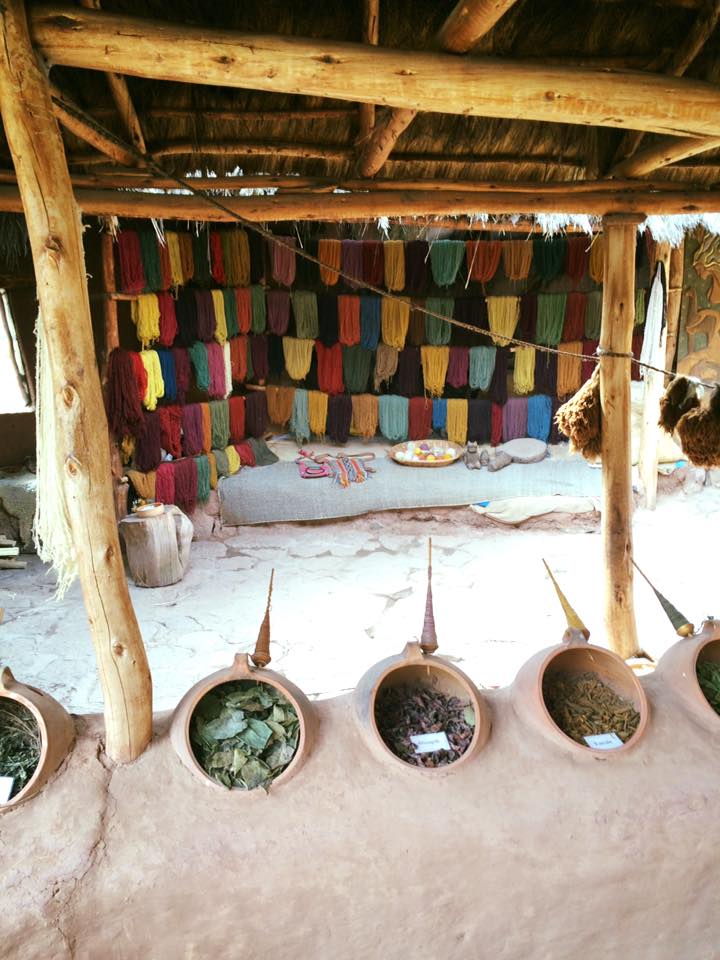
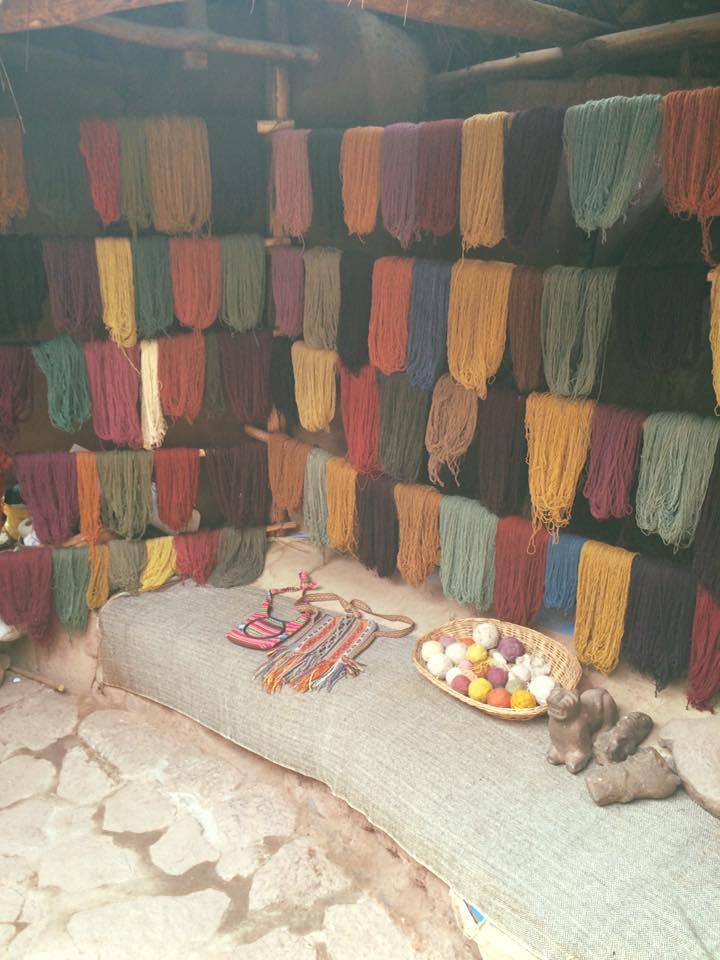
Next we watched the local women weave while looking after their children and chewing on coca leaves.
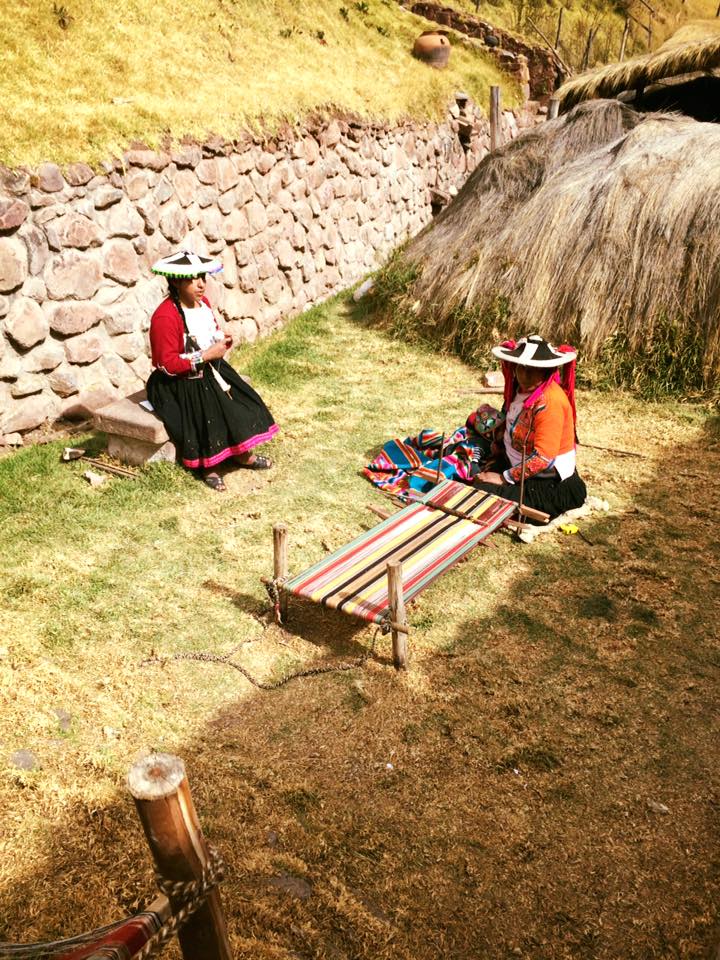
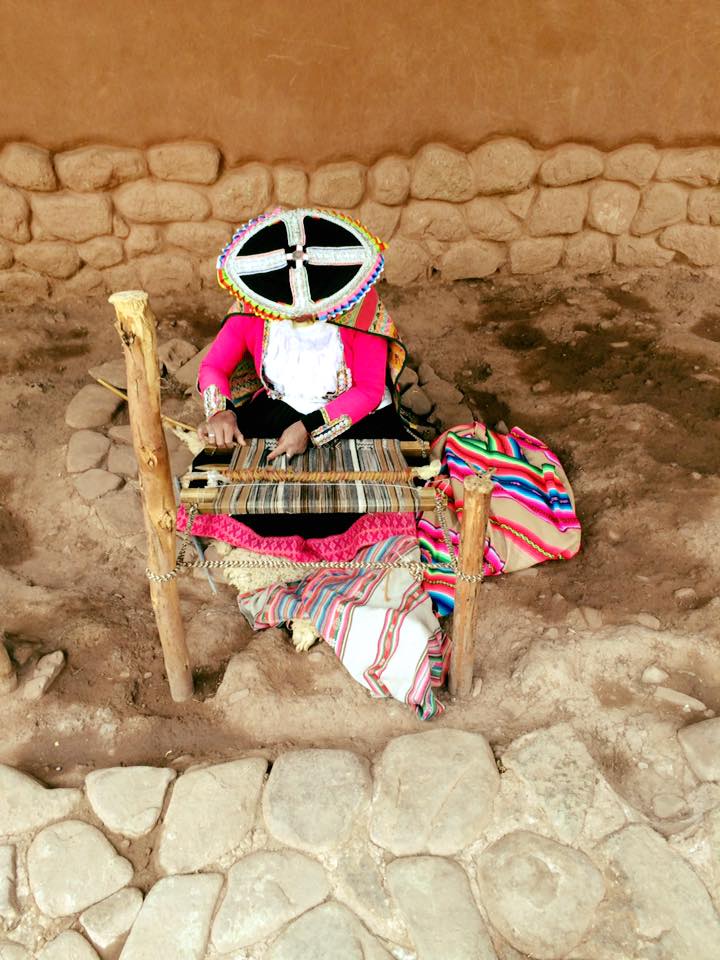

We also learned about all the different varieties of corn, potatoes, and quinoa (including a new variety of quinoa that was recently discovered) that are grown in Peru.


After our visit was over, we headed to our next stop, Pisac. Because of our flight delay, we had to skip our visit to the Incan site by the same name (well, actually, our guide misinformed us that they were closed, which turned out to be untrue), but we were able to make it to the Pisac market. In hindsight, I would have opted to go to the ruins and skip the market, so if you are faced with a similar choice, opt for the ruins. The market is very touristy and filled with locals chasing you to buy their crafts or otherwise begging for money. If you are going to shop the markets, bring cash (the Peruvian equivalent, called Soles- La Nueva Sole, to be exact- which you can get from a foreign currency place or your bank before you leave (the cheapest option) or at the airport, your hotel, or designated exchange houses) and be prepared to bargain. Never pay the asking price. You should pay about 75 to 80 percent of the asking price, and don’t be scared to say, “no thanks” and walk away. They will come running after you to make the deal.
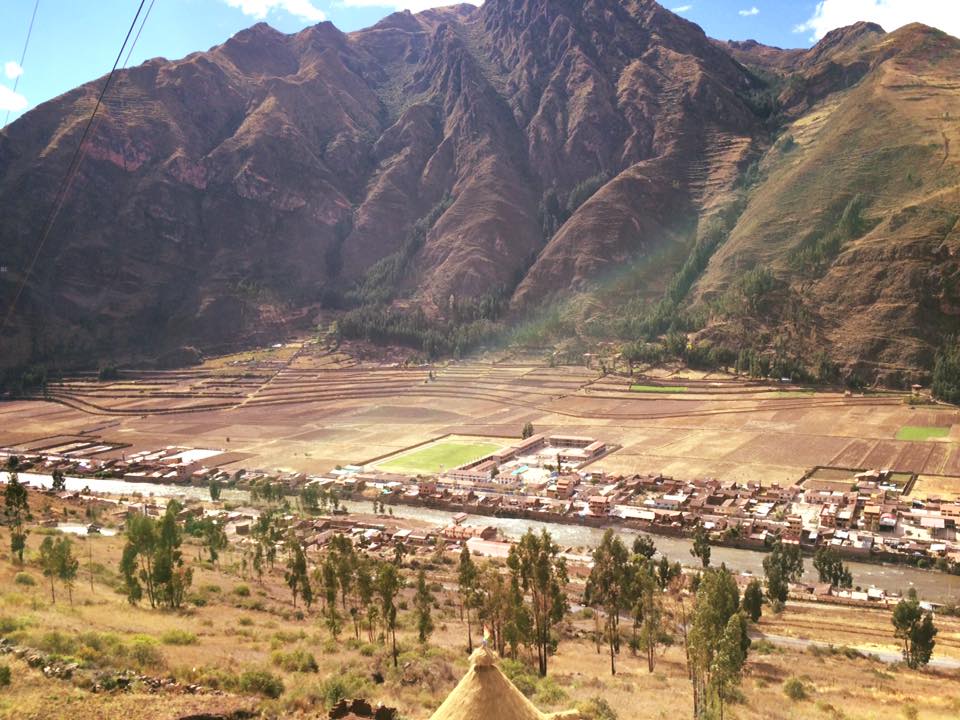
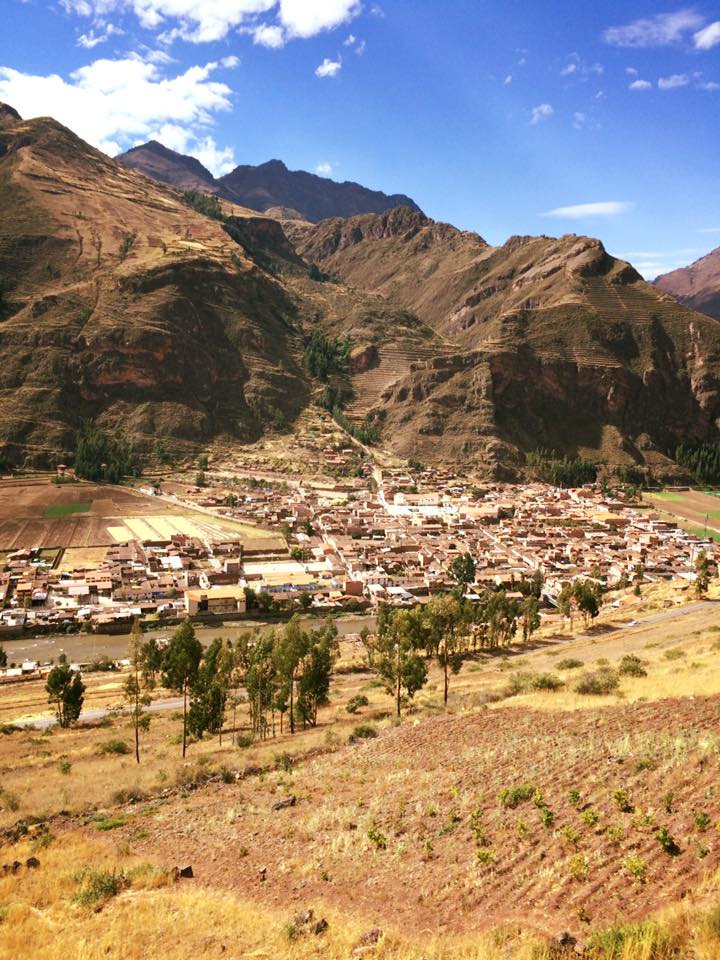
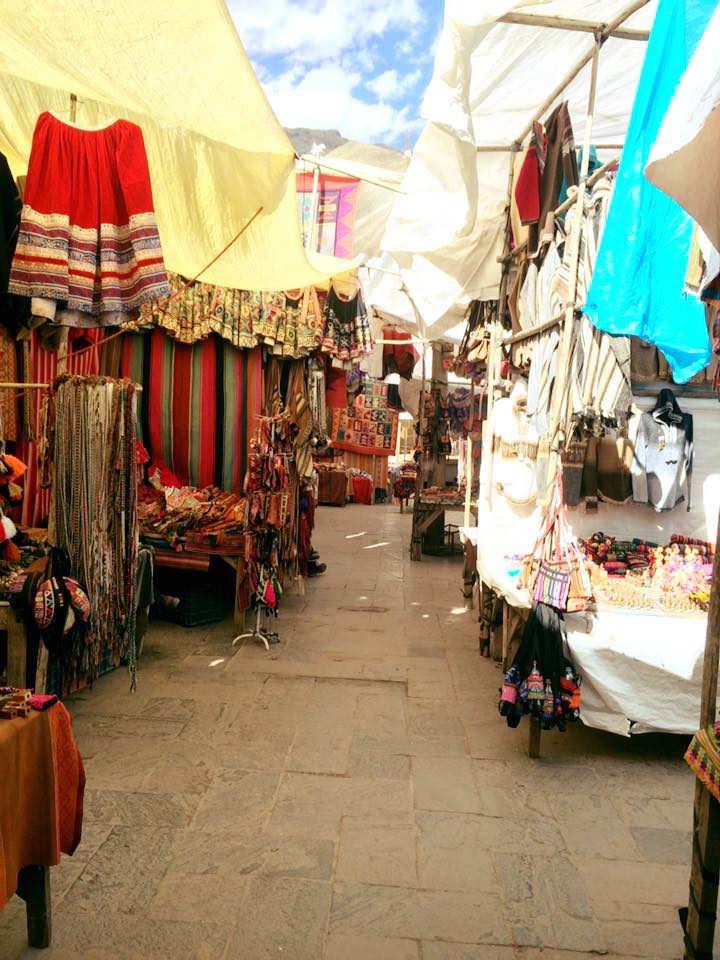
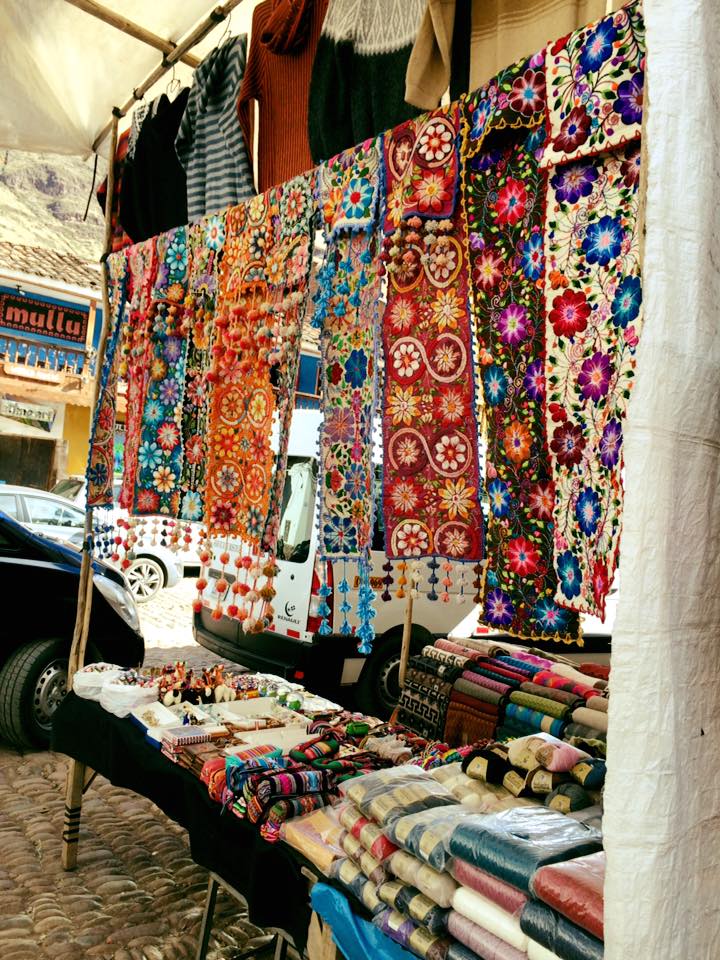
A note about this next picture. I regret taking it. First, I am a HUGE advocate of not exploiting women, children, and especially animals and of not supporting customs, activities, or sites during travel that do the same. That is exactly what is happening here, and I am ashamed to say that I violated my own rule without even realizing it until after the picture was taken. You will see these women all over Peru coming up to you asking you if you want to take a picture with their cute little lambs. I mean, who doesn’t love a cute baby lamb wearing a colorful yarn crown?!? The woman on the left literally yanked the lamb out of her bag by its neck! I was horrified! Then they hold the animal by its neck so you can take a picture of it. After you get your picture you have to pay the women, as in each woman. Usually 1 Sole does it, but they will try to get more from you, chasing after you to also pay the lamb! Honestly, I was (and am) mad at myself for taking this picture, and I urge you to please avoid taking pictures like this. The only reason I am posting it is to help you learn from and avoid my mistake.
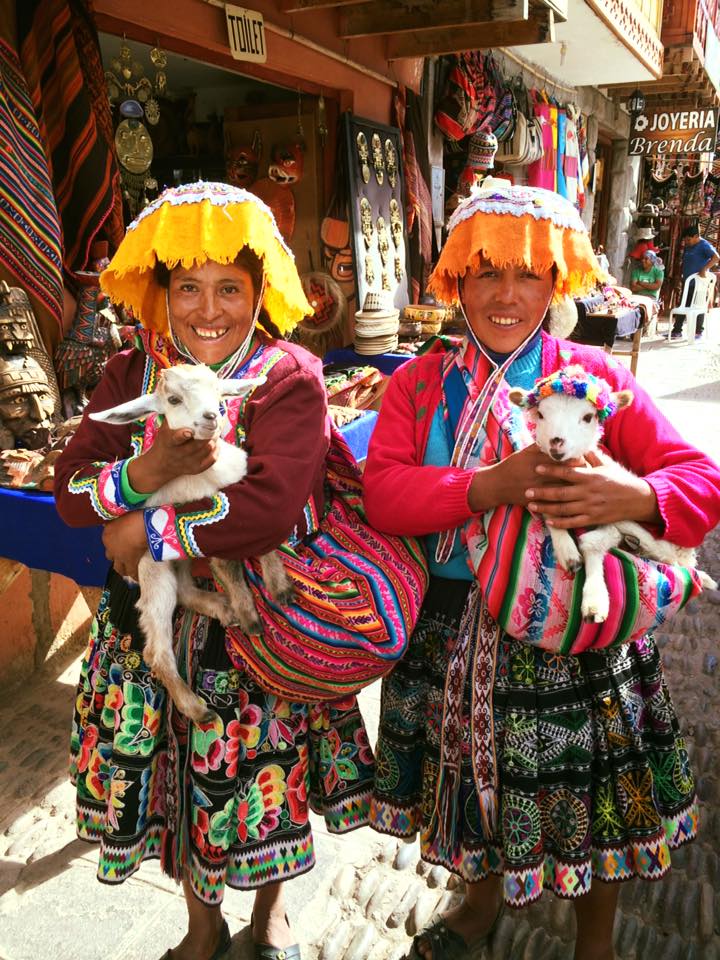
Another thing you should be prepared for while visiting Peru is the astonishing number of stray dogs you will find all over Peru, sleeping on the ground, running around in traffic, and eating garbage. They do not really seem malnourished, but this was still heartbreaking to see. I had been warned of this by a colleague who went to Peru before me and who knows how much I love dogs. As a result, I came prepared with dog treats to feed all the dogs in Peru. We also bought street food and fed it to them. All of the dogs we encountered we so very friendly, and I wanted to keep them all. Helping these dogs made me feel a little better about my lamb faux pas.
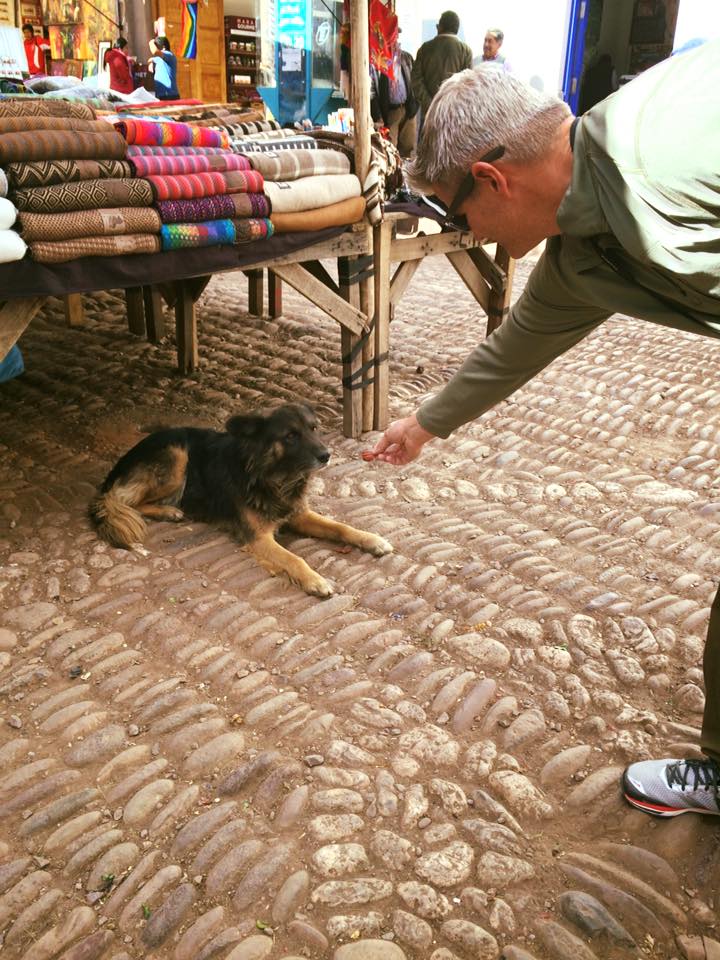
Our final stop of the day was to the Lamay community, where we visited a local orphanage that was home to over 50 girls ages two to fourteen. When Chad and I travel, we like to participate in at least one charitable activity that supports the local community. For Peru, we worked with our agent to find and support the Santa Rosa de Lamay Orphanage. On that end, our agent arranged for us to make a donation to the orphanage which would provide a school kit to every girl. We also asked the orphanage to provide us with a list of items they needed that we could bring from the States. Sadly, they asked us for toiletries for the girls; so, before we left for our trip, we made toiletries kits that we brought with us. We had several donations of toiletries from our family, friends, and from local business, and I would like to thank all my friends, family, and members of Leadership Broward‘s Class XXXIV who kindly donated their travel-sized toiletries to us. I would especially like to thank the Riverside Hotel on Las Olas Boulevard in Fort Lauderdale, Florida and Parker Dentistry in Hollywood, Florida, who generously donated tons of hotel samples and toothpaste and mouth wash for our kits. 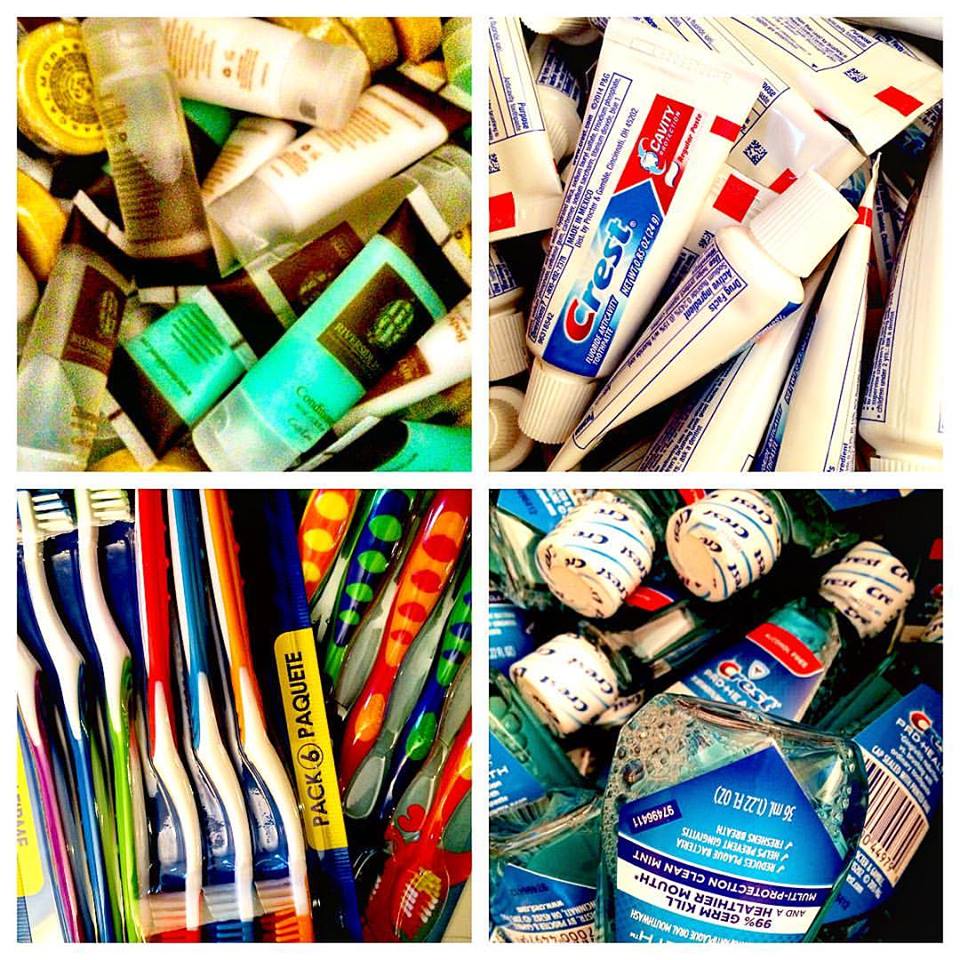
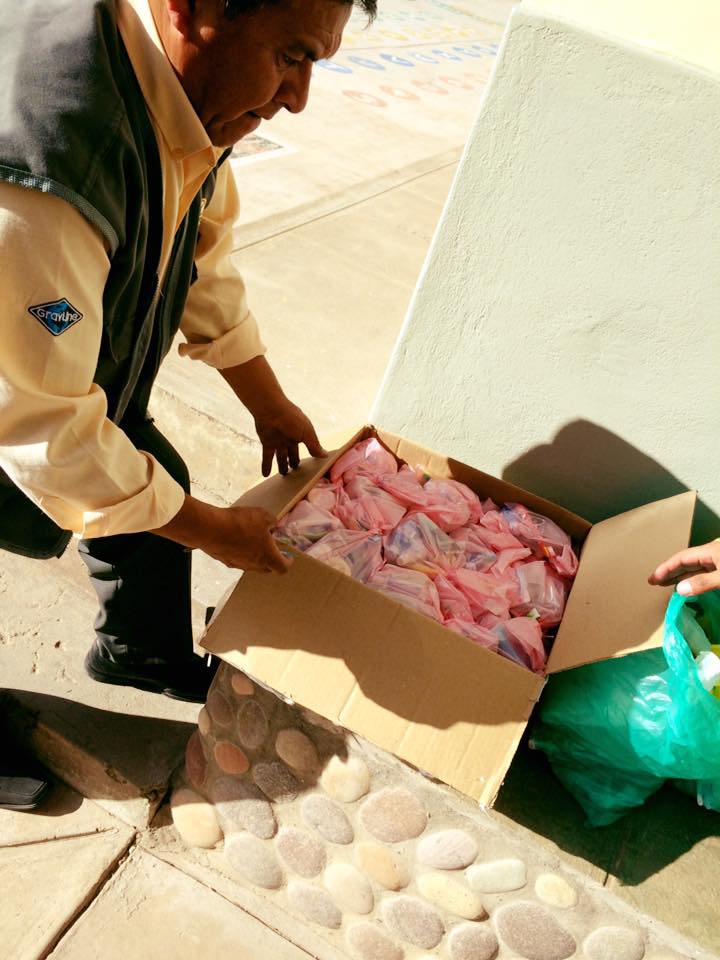
The orphanage sits on a beautiful piece of property with Andes Mountains as its backdrop. There is an outdoor play area, living quarters, a school house/recreation room, a bakery, a pottery room, a weaving room, and a shop.
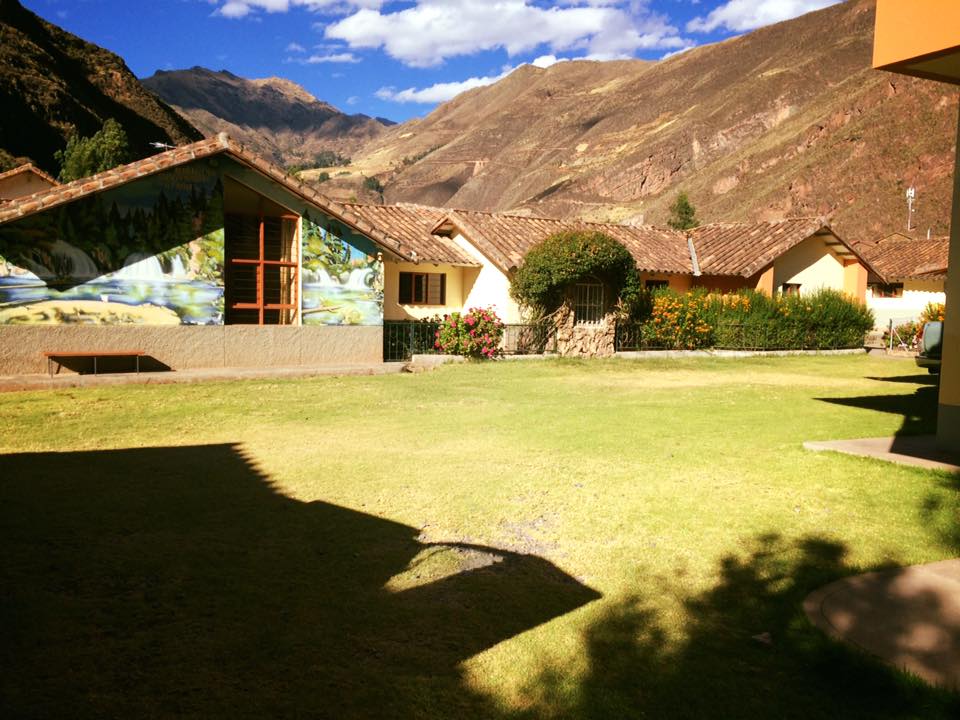
This was probably the most rewarding experience of our trip. The girls were so excited to meet us, running out to hug and kiss us and to hold our hands as they lead us into their home.

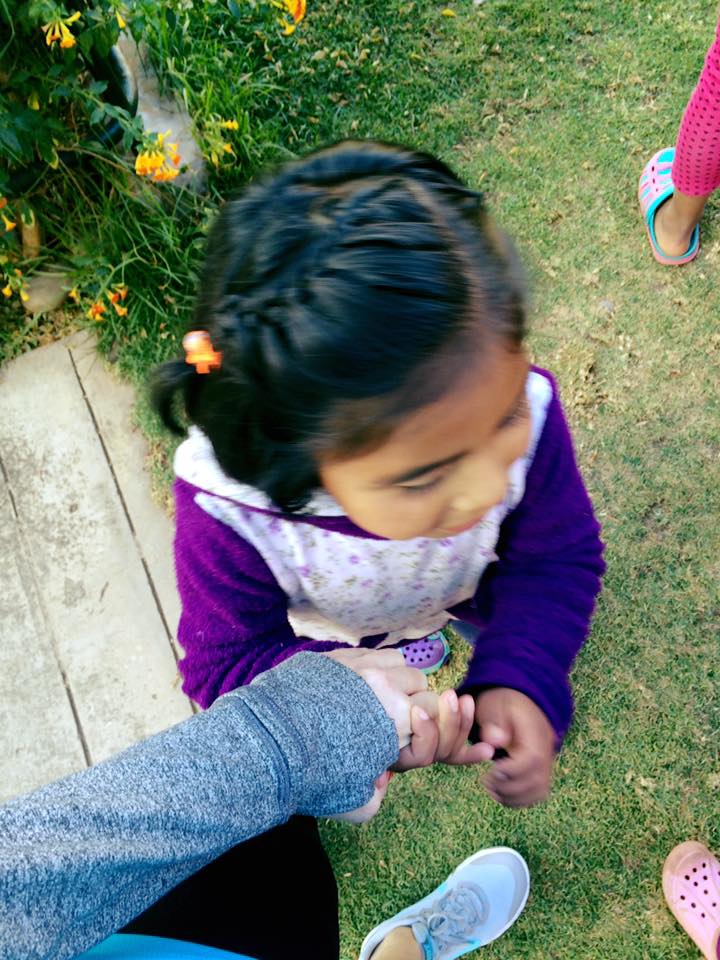
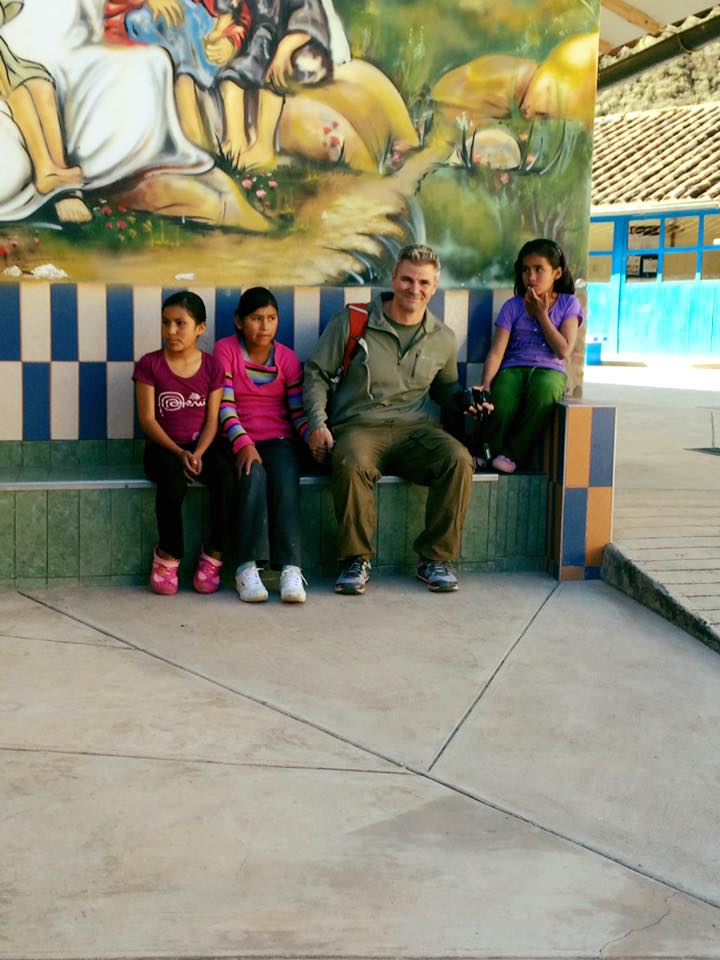
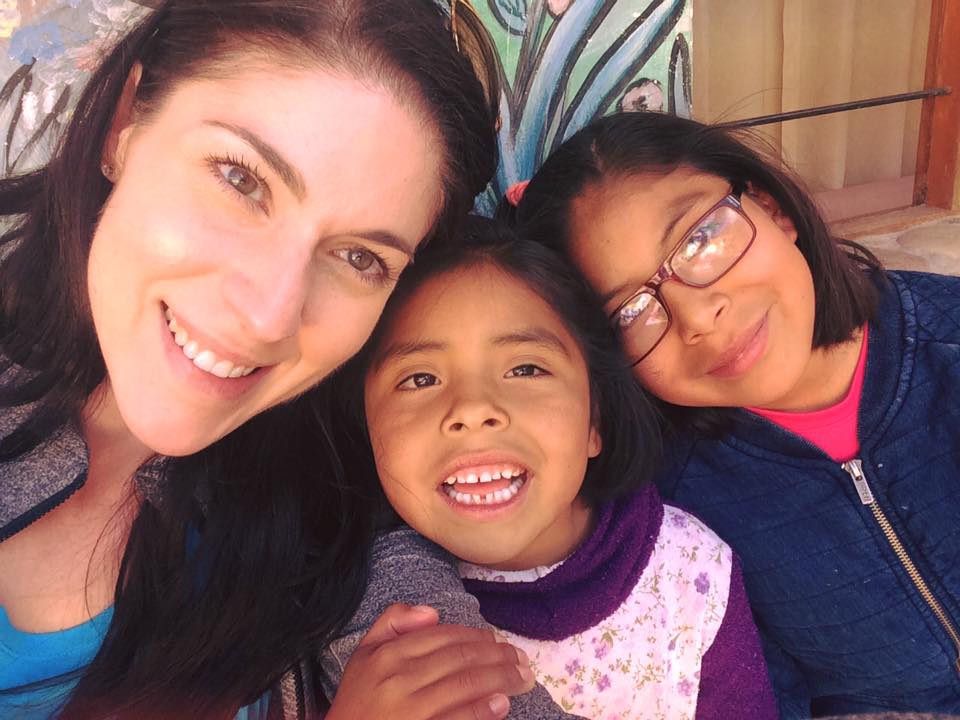
They were literally so grateful to receive pencils, notebooks, and toiletries.
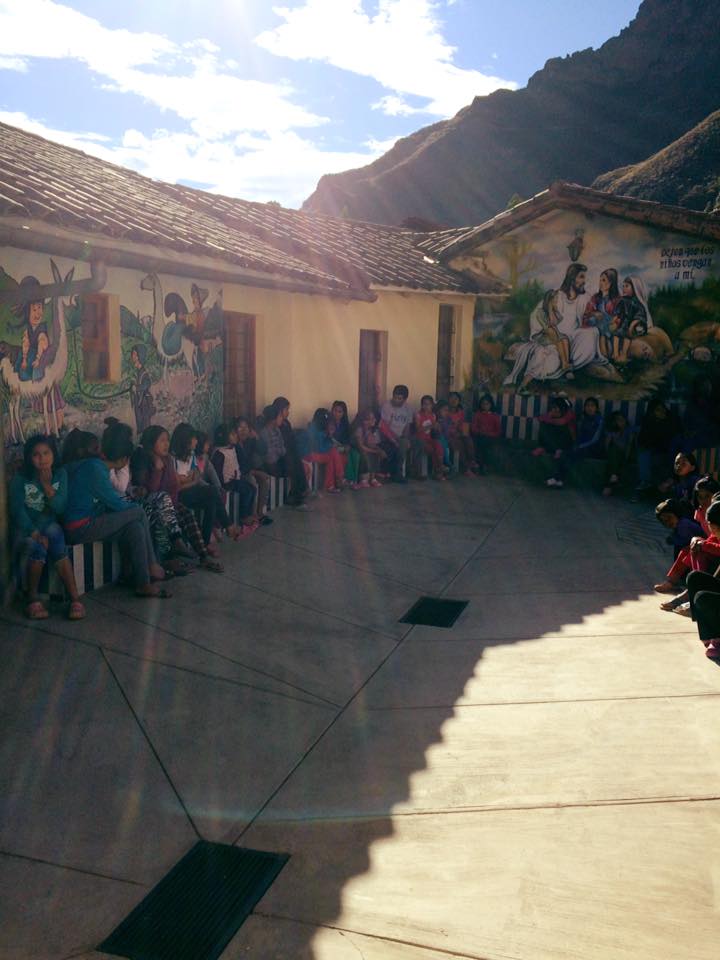
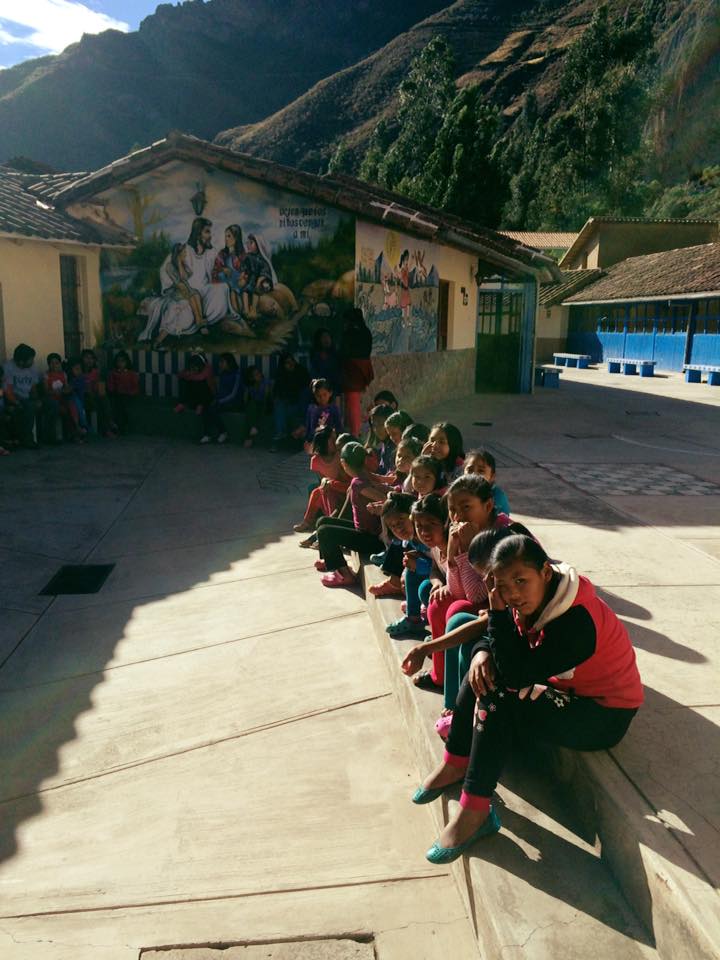
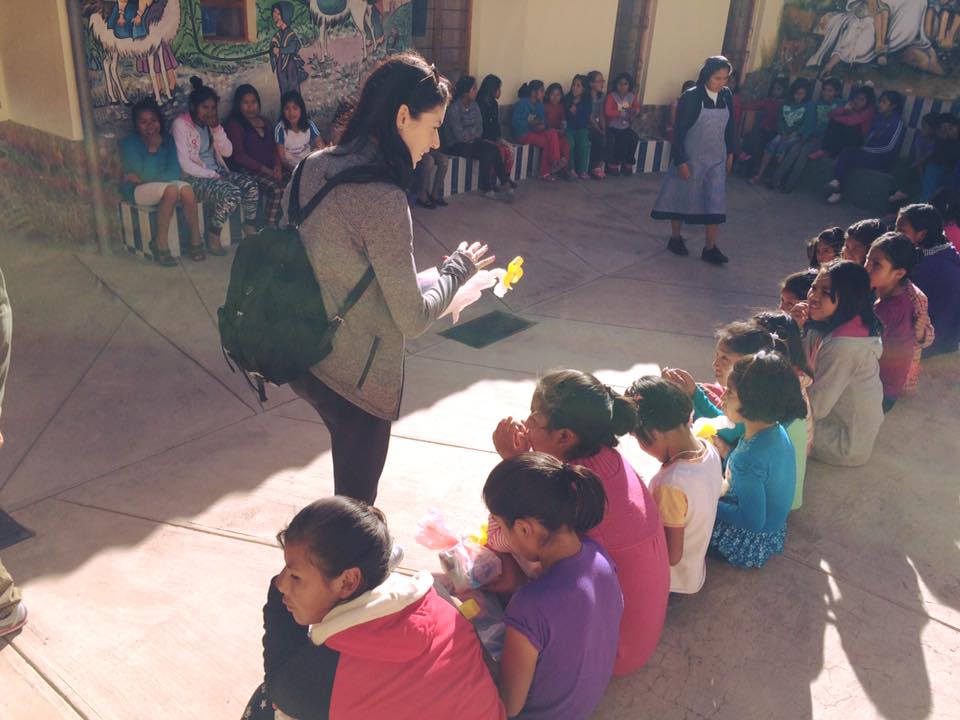
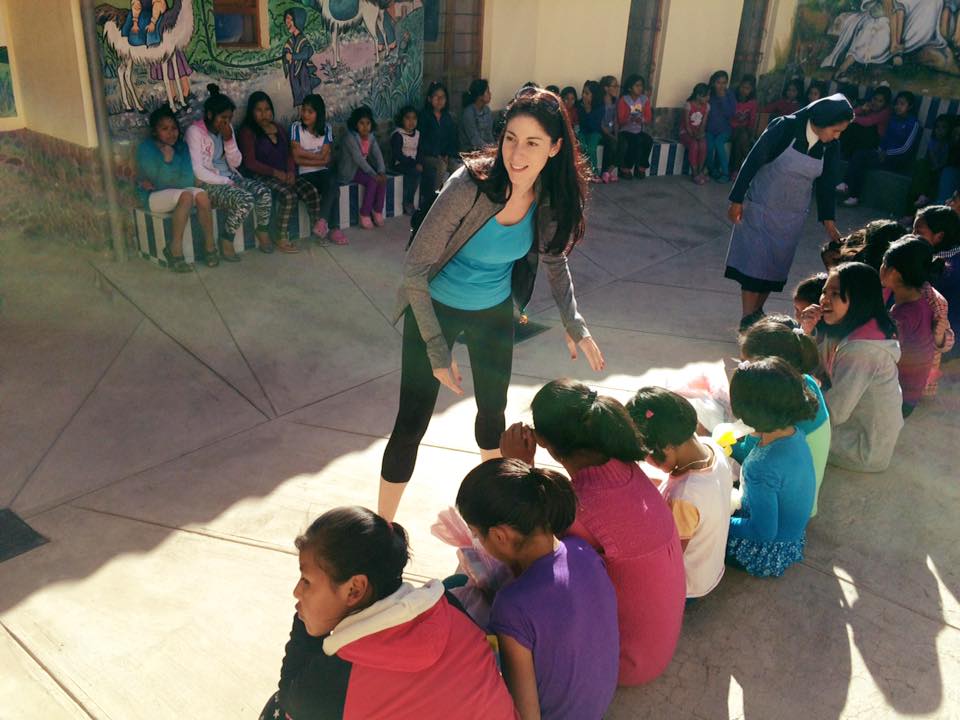
They sang us songs and gave us a tour of their school house.
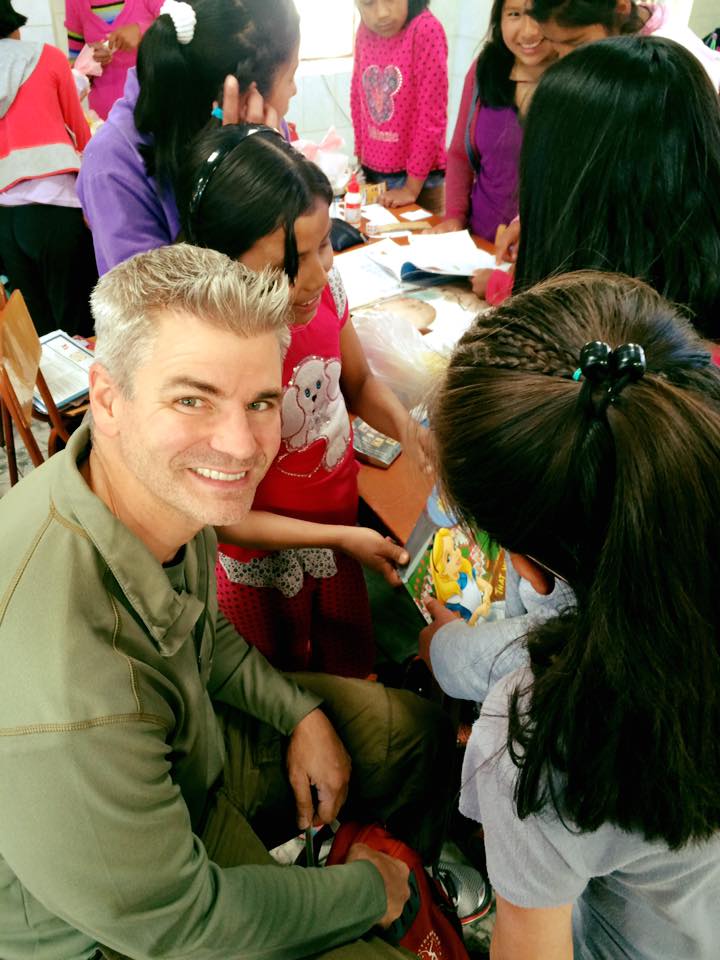
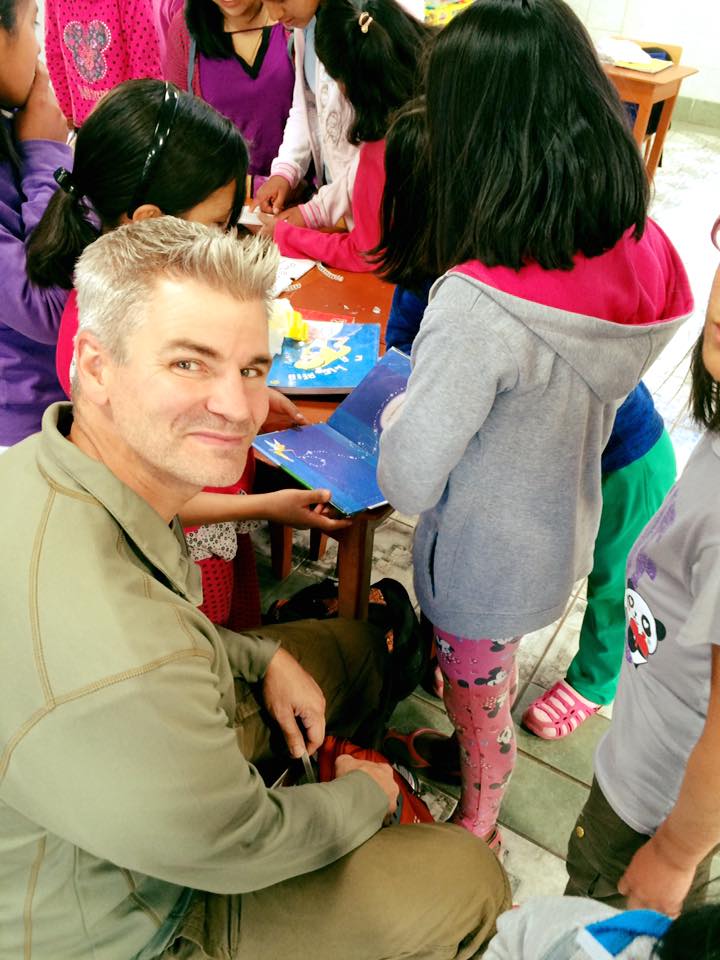
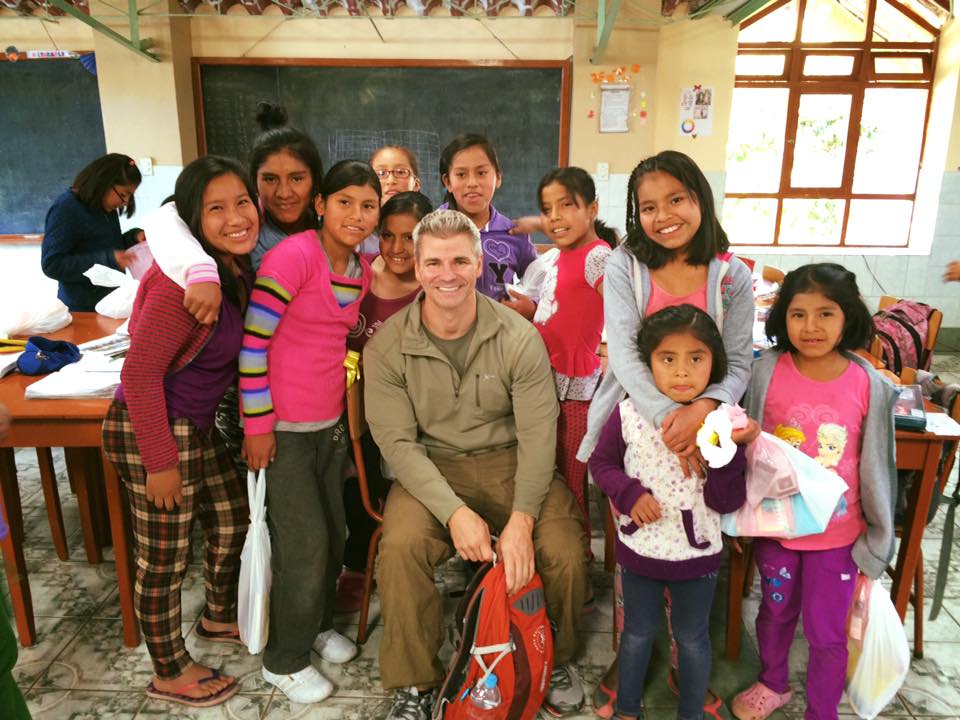
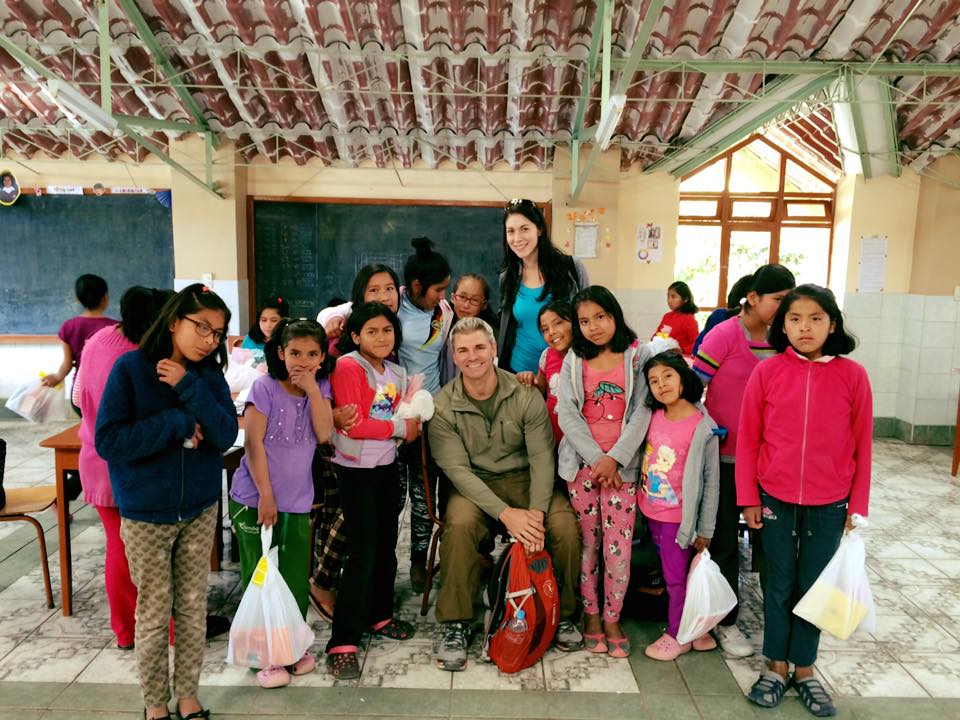
We learned that all of the girls learn to either bake, weave, or make pottery, and their goods are sold in the community to support the efforts of the orphanage, which, oddly enough, was started by a group of German dentists and is run by nuns.
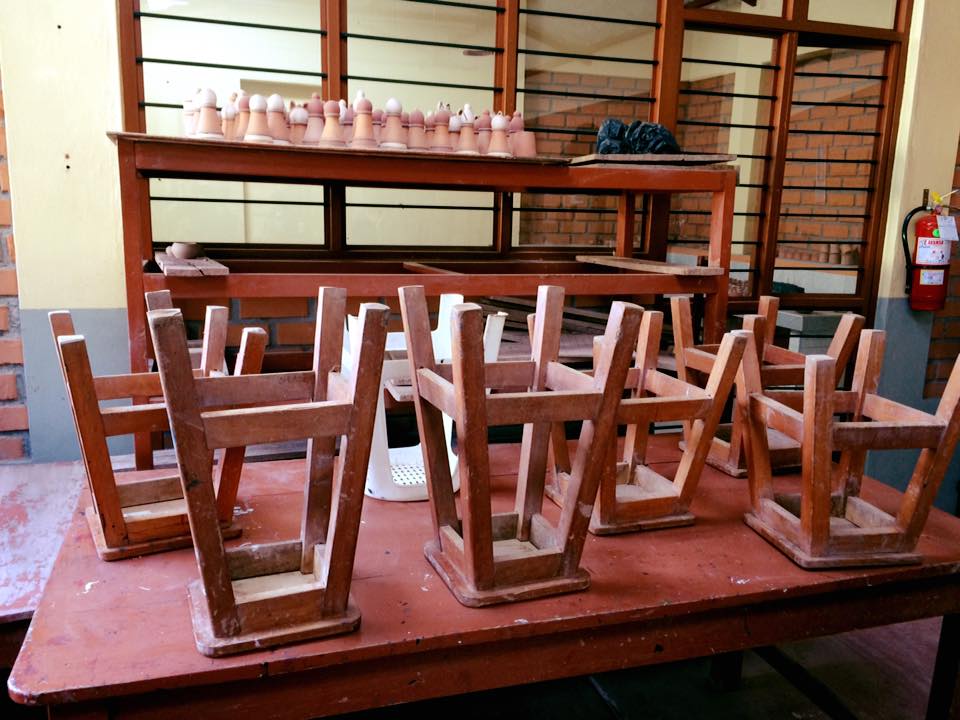
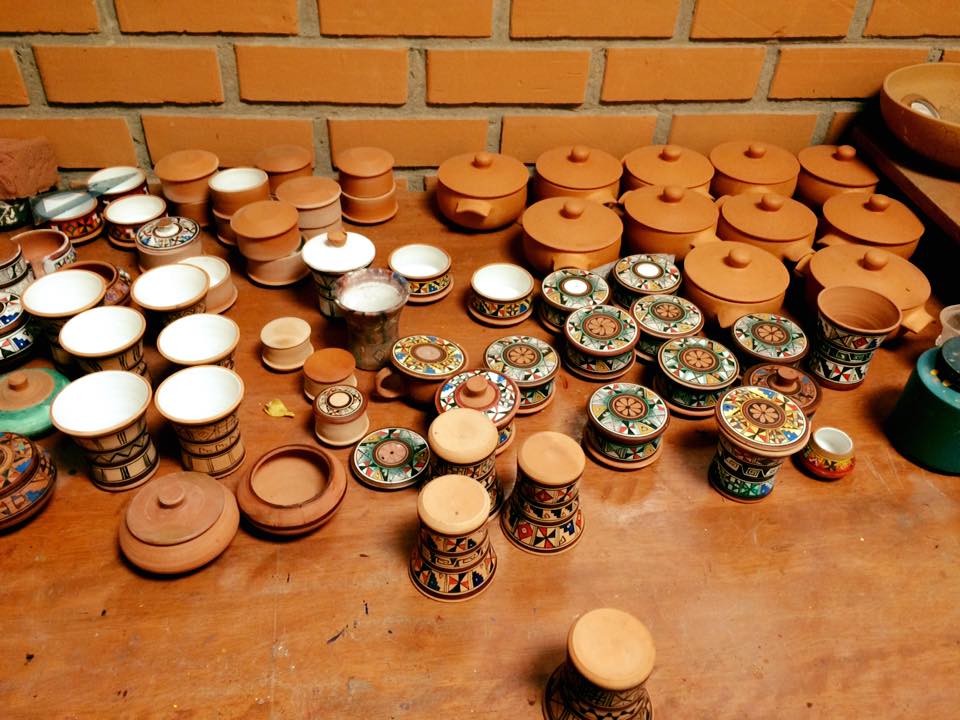
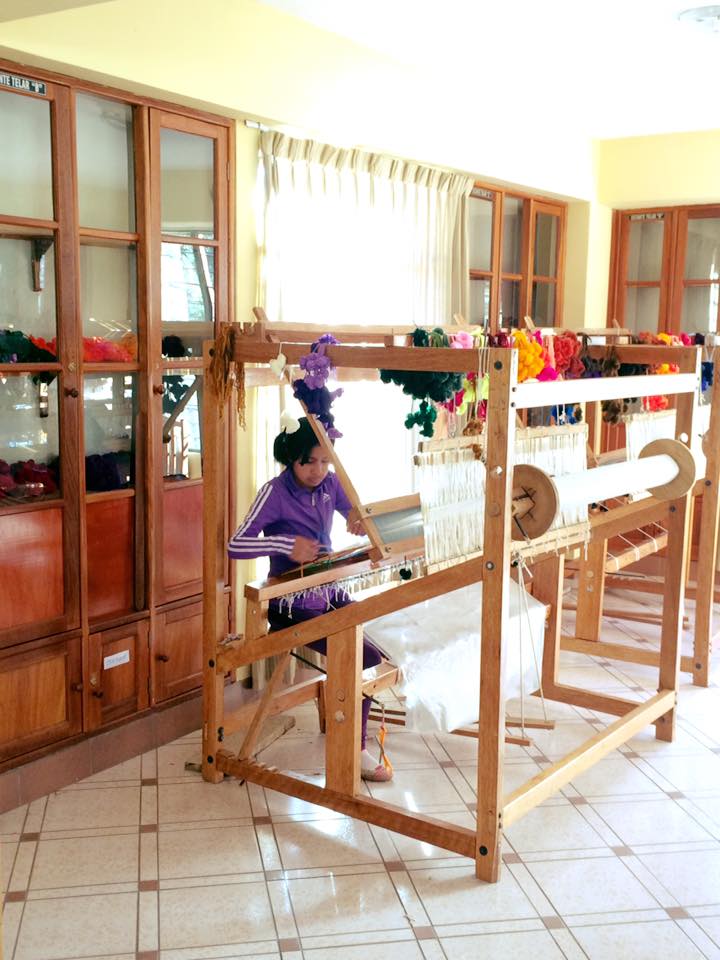
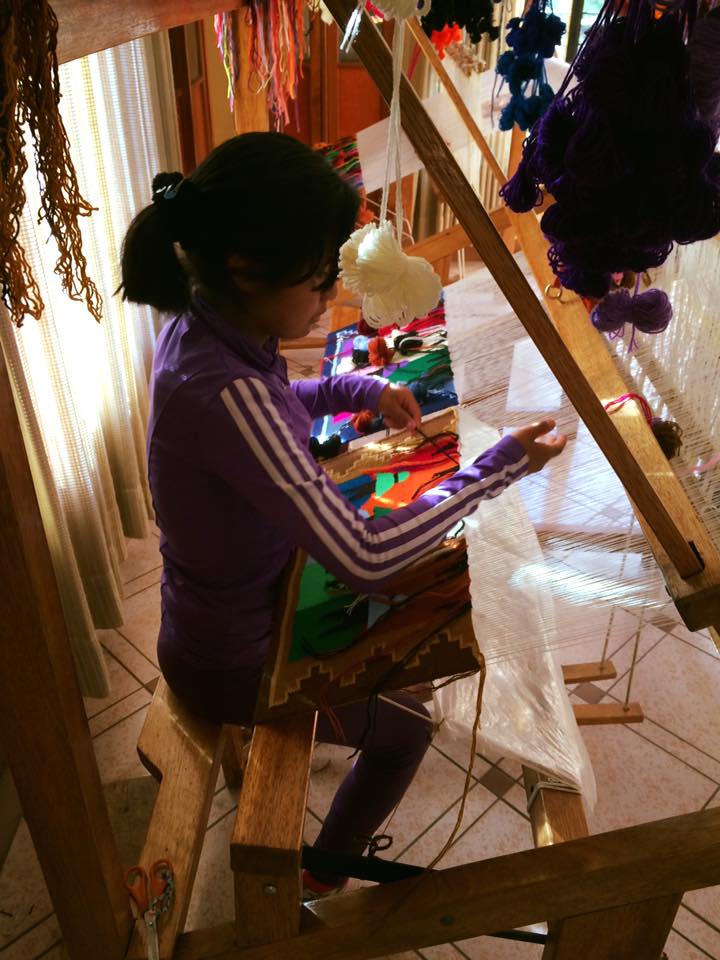
The saddest part was when we were leaving and all the girls were hugging us, thanking us, and waiving good bye. One of the nuns was so grateful that she cried as she thanked us, and a little girl asked me if she could come home with us. I literally felt so terrible about leaving, but we were both so glad we got the chance to make a small difference in the lives of these girls.
At long last, it was time to make our way to the hotel, the Aranwa Sacred Valley, which is a beautiful hotel, located on a huge, historic property. I liked this hotel because it was in a secluded little village and was very peaceful. It has two on-property restaurants, as well as a bar and sushi bar, an on-property museum, church, library, movie theater, gym, spa, and shops. It also has a beautiful pool and orchid greenhouse. The property is also home to roaming peacocks and llamas, which spit, by the way.
This is the view from our room:
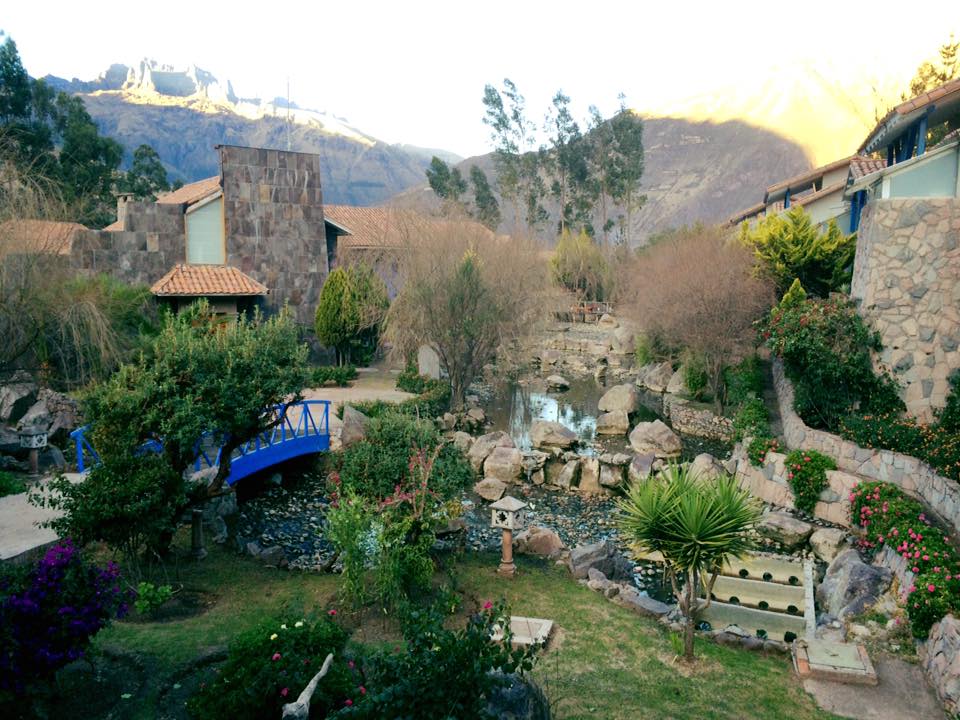
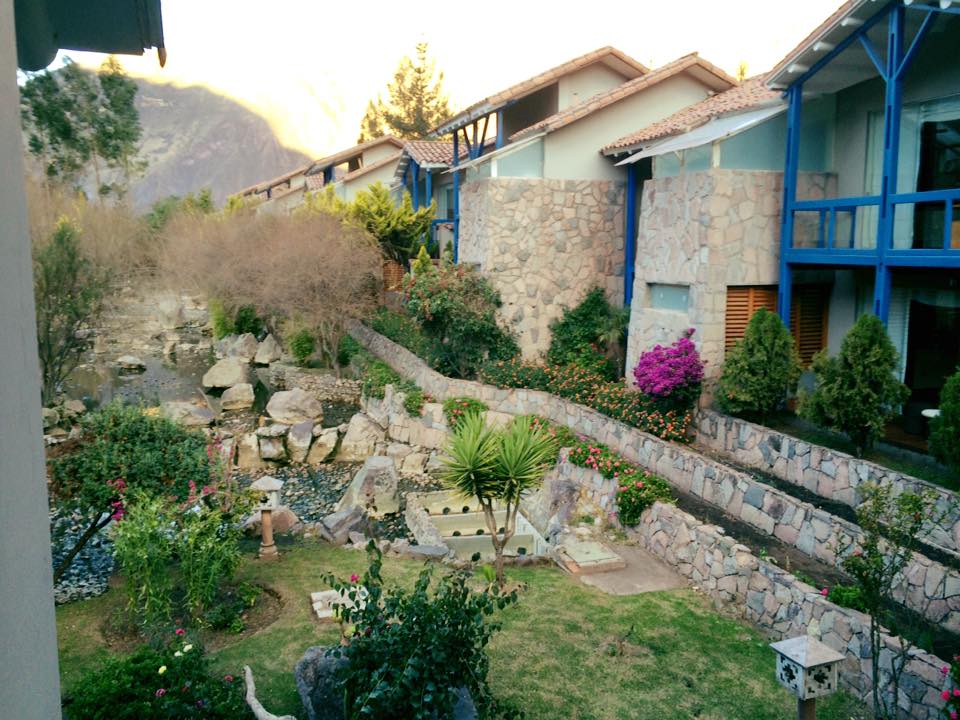
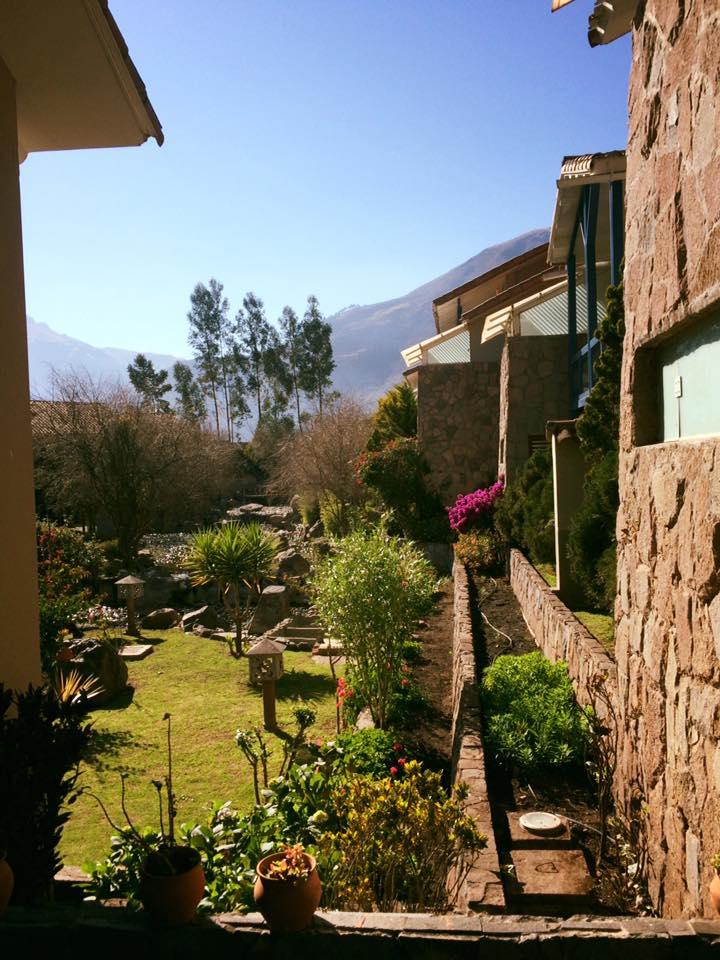
This is the pool:

Here are some more views of the property amenities:
Behind me is the movie theater. And, yes, that’s a cart which had fresh popcorn every evening.

This is the library, filled with travel books and novels:

This was part of the museum:
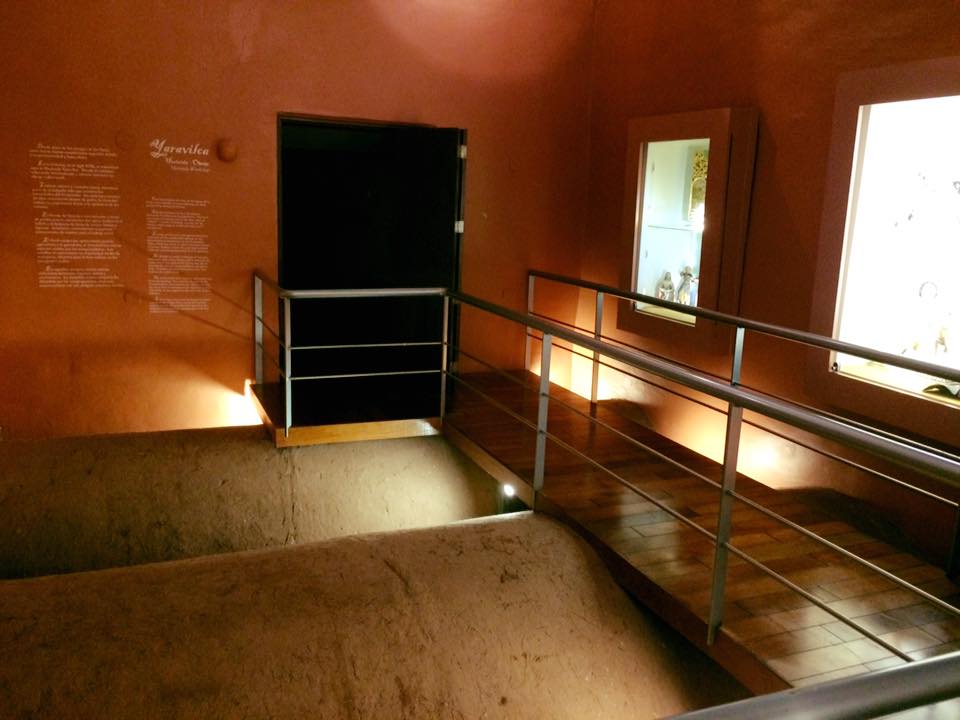
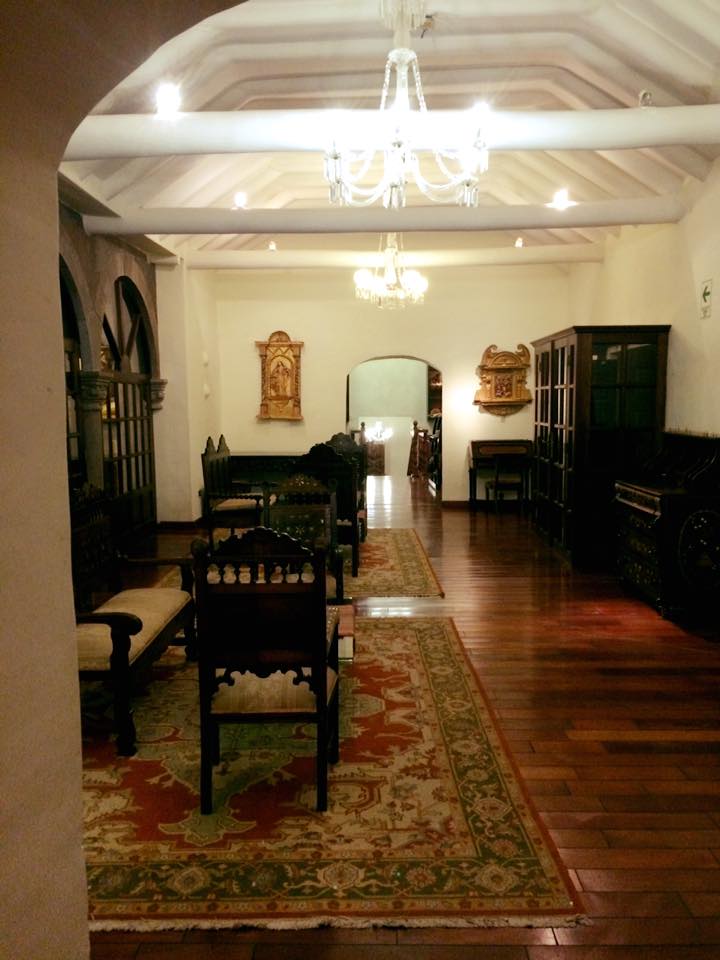
This is the church:
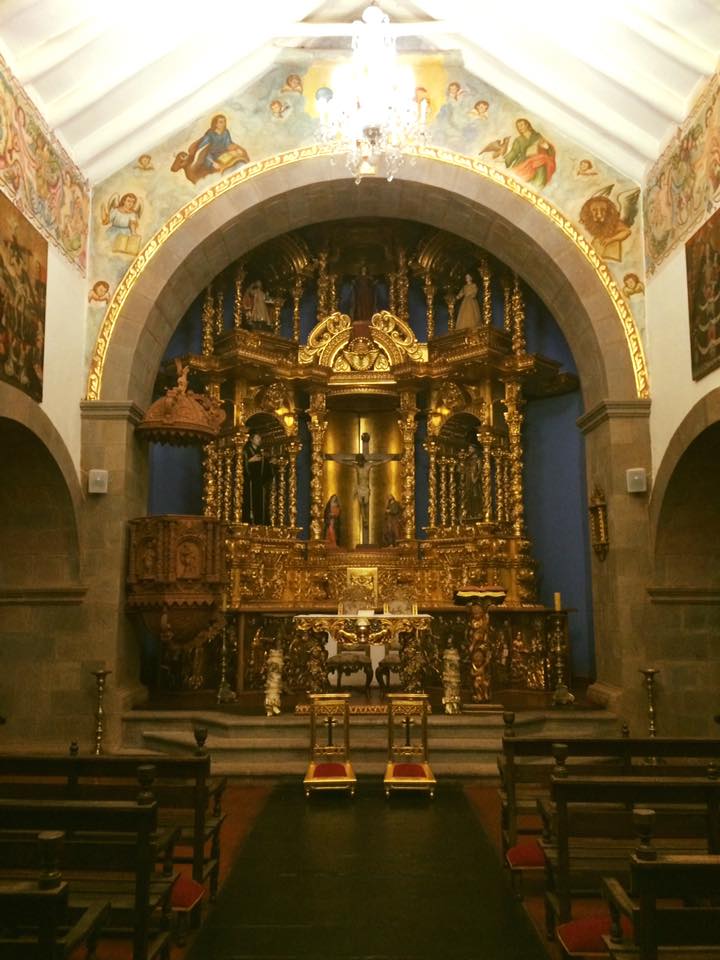
I am obsessed with peacocks, by the way.
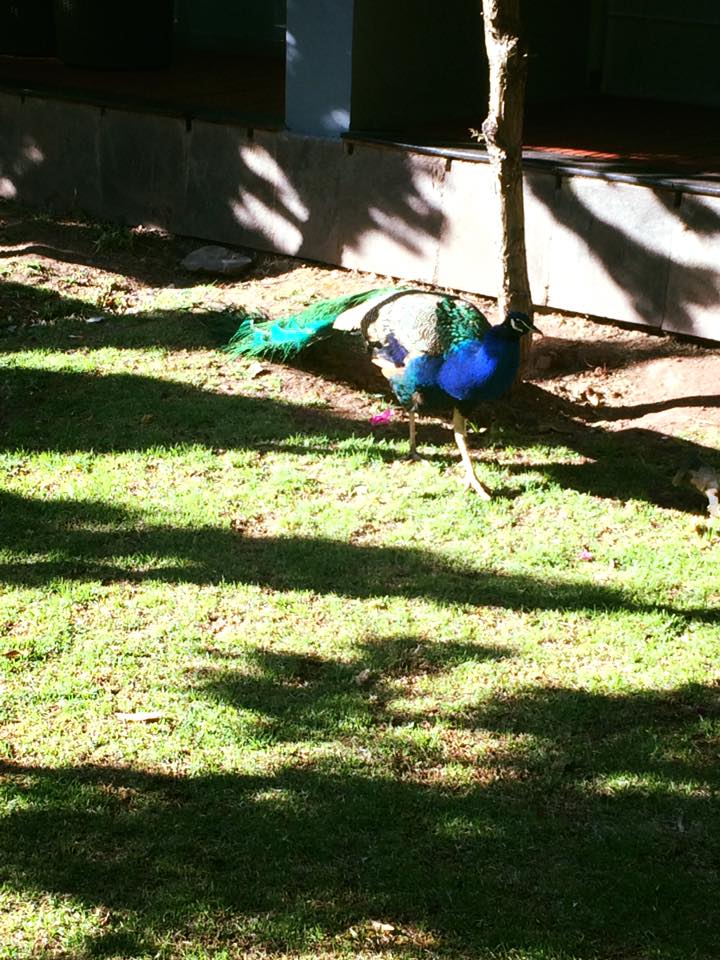

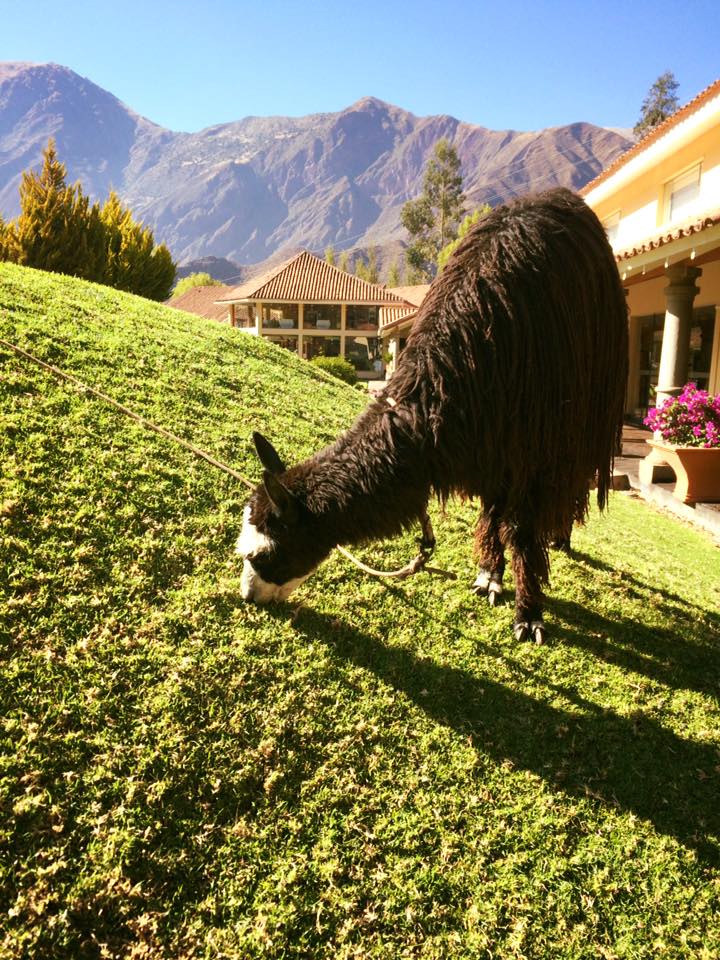
This is a live action shot that Chad took of a llama spitting at me because I tried to pet him as he was eating. I’m actually surprised that the photo came out so clearly, as Chad was laughing hysterically as he took the shot! But then again, he is used to me getting chased by wild animals, like the time I got chased by monkey in Zimbabwe, or pecked on the head by an ostrich in Cape Town, and got wrapped in a hug by an elephant in Chiang Mai…but, I digress.
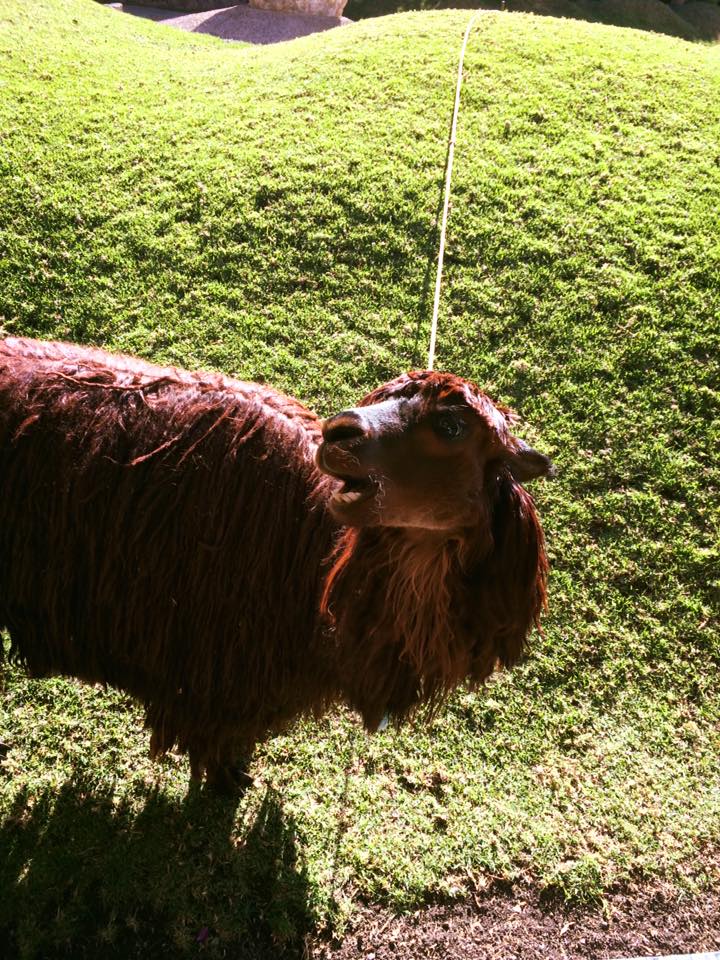
By the way, this hotel has a great breakfast spread with an omelette station (my fave!) and very friendly staff. Breakfast was included with the room. If you know me, you know that I LOVE breakfast, and I do not function without it. I am literally hangry (hungry + angry) until I eat breakfast.

And, in case you wondering, this is what the room looked like:

The bed was super comfy, and the shower was huge– literally a separate room with a standing shower and an over-sized Jacuzzi tub. Oh, and you should know (because I know I wish I did before I came and packed all my converters and adapters) that Peru uses the same electrical current and outlets as the United States, so you can plug your chargers and other electronics right into the wall!
The only other place I think we would’ve stayed at in the area is the Tambo del Inka, which is a Starwood property and is closer to town. It also has a private train station at which Peru Rail stops en route to Machu Picchu.
If you are a crazy person, you could stay in the Skylodge Adventure Suites. I bet you are thinking, “Oh how exciting, what is that?” I am glad you asked. They are three completely transparent, hanging bedroom capsules measuring 24 feet in length and 8 feet in height and width that are made from aerospace aluminum and weather resistant polycarbonate and that are somehow mounted to the side of huge mountain, over a 1,000 feet above the valley floor. Eight people fit inside the three capsules, and you get a 300 degree view of the Sacred Valley from the capsules. Apparently, there is even a private bathroom up there, which first, thank God because I’d be pooping my pants the entire time, and second, I am not sure how you get privacy in a tiny transparent pod of death that you are sharing with seven other crazy people (not to mention, I doubt there is plumbing up there, so…), but maybe you can try it out and let me know! There is also a small platform that is completely open and also suspended where they serve you dinner and breakfast.
How do you get there? Easy, all you have to do is climb 1,312 feet to the top of Via Ferrata, which takes 1.5 to 2.5 hours or you can hike an intrepid trail through zip lines! You have to wear a helmet and harnesses and be guided up. By the way, I hope you pack light because you have to climb with all your crap on your back! Oh, and if that wasn’t enough, apparently, at some point, there is a sky bridge where you walk across a tightrope while holding another cable. To get down the next morning, you have to climb even higher and then you just zip line all the way down (7 zip lines to get down).
Who would do this? Lots and lots of people. In fact, it usually sells out months in advance, and every single day that we were in the Sacred Valley, we saw groups of people scaling the mountain to go up. People rave about it on tripadvisor. Here are some visuals that I borrowed from the internet because Chad and I chose life.
This is a zoomed shot because from the ground, you have to really be looking for these pods to even notice them.
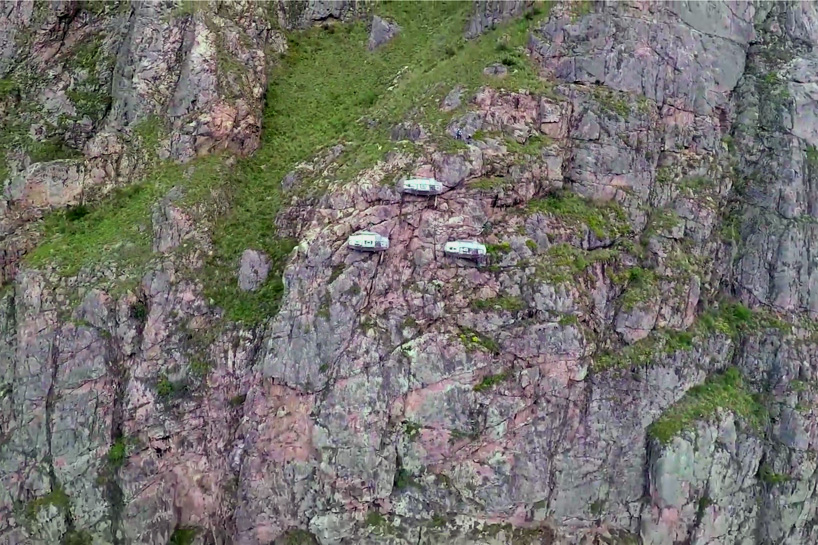
Someone got a side shot!
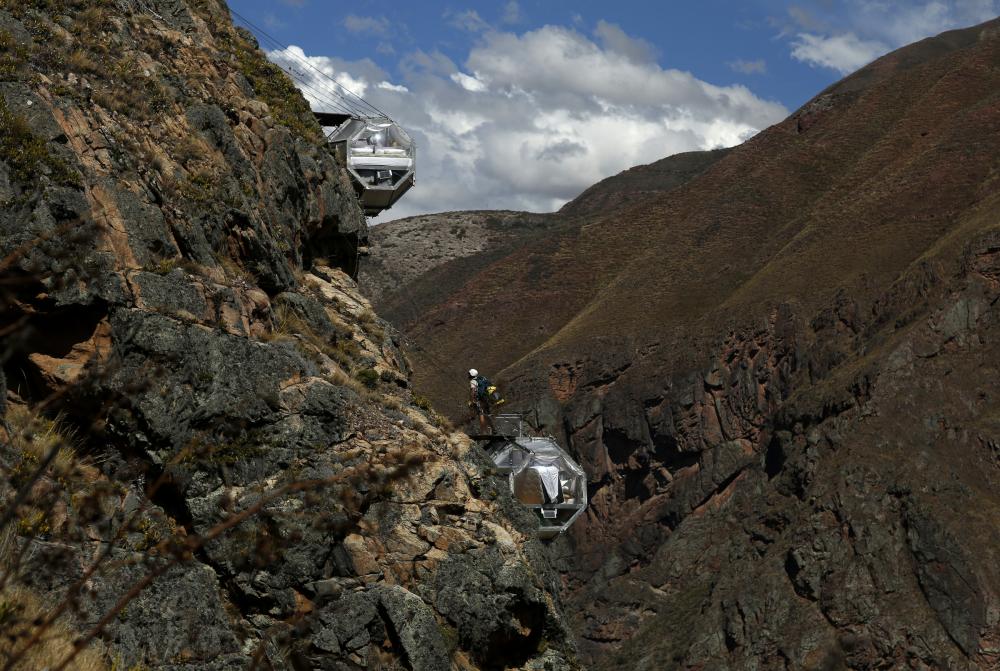
I imagine that a drone was used to obtain this picture.
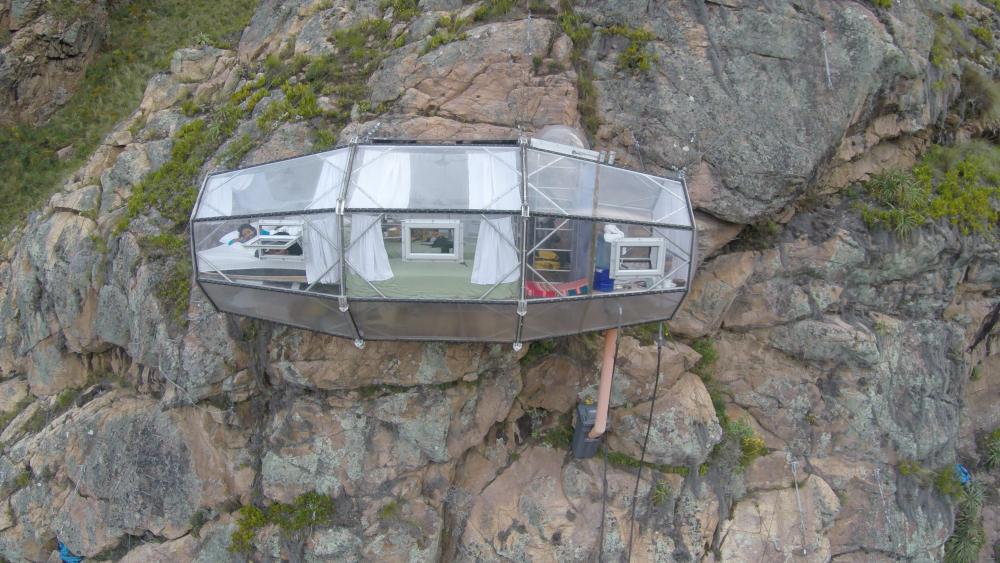
This is how you get there, scaling up this little iron ladder that has been installed up the side of the mountain! Oh look, kids with no hands! Notice that mom is nowhere to be found. This is like a meme for why you never leave your kids unattended with their dad!
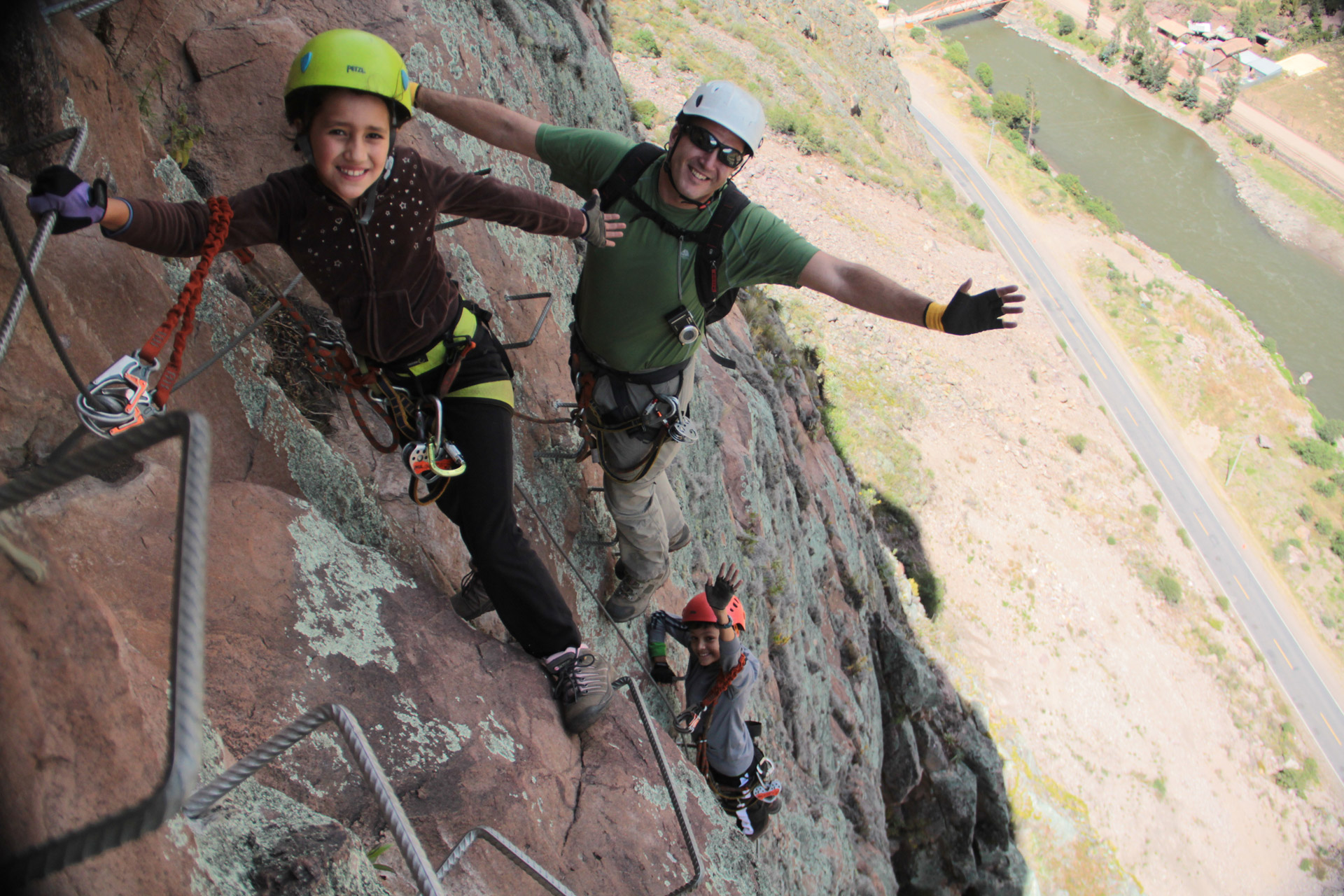
Doesn’t that sky bridge look nice a safe?
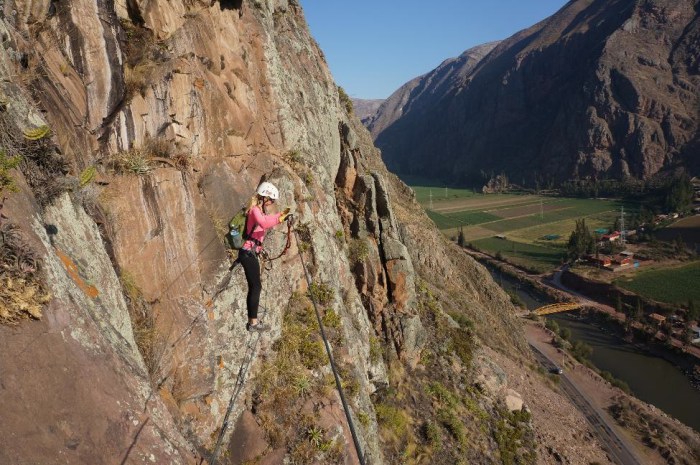
Apparently, this is what the pods look like inside:
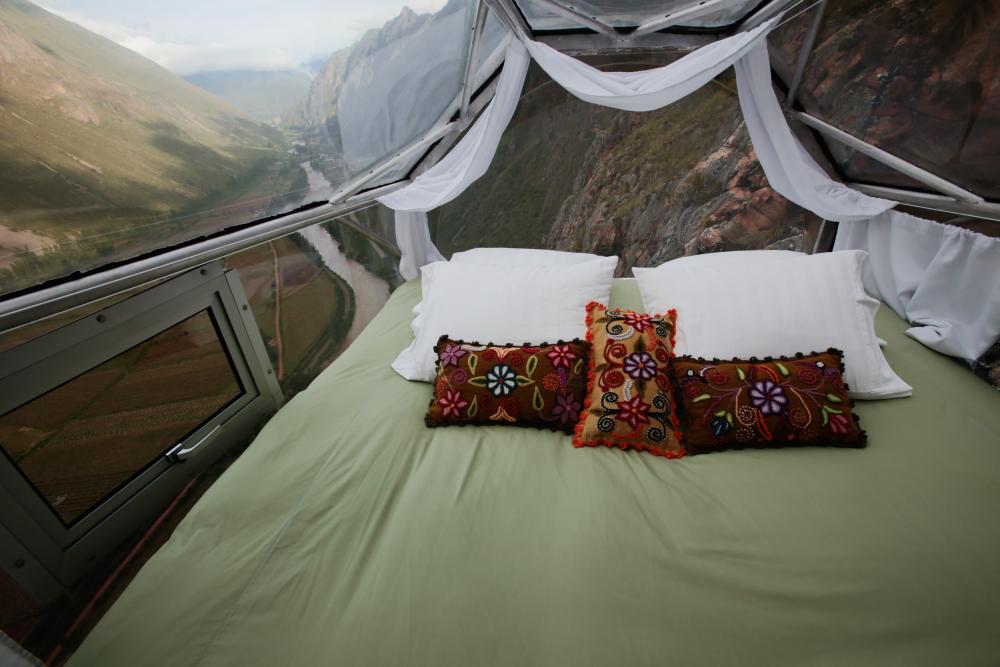
See that hole at the top there? That’s how you get in.
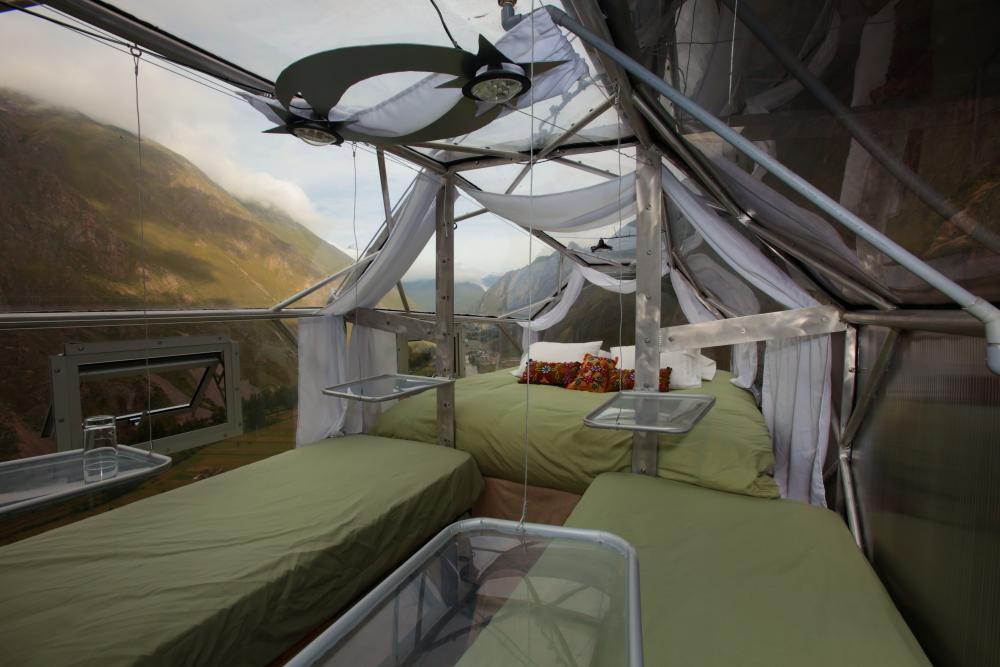
And then this is how you get down:
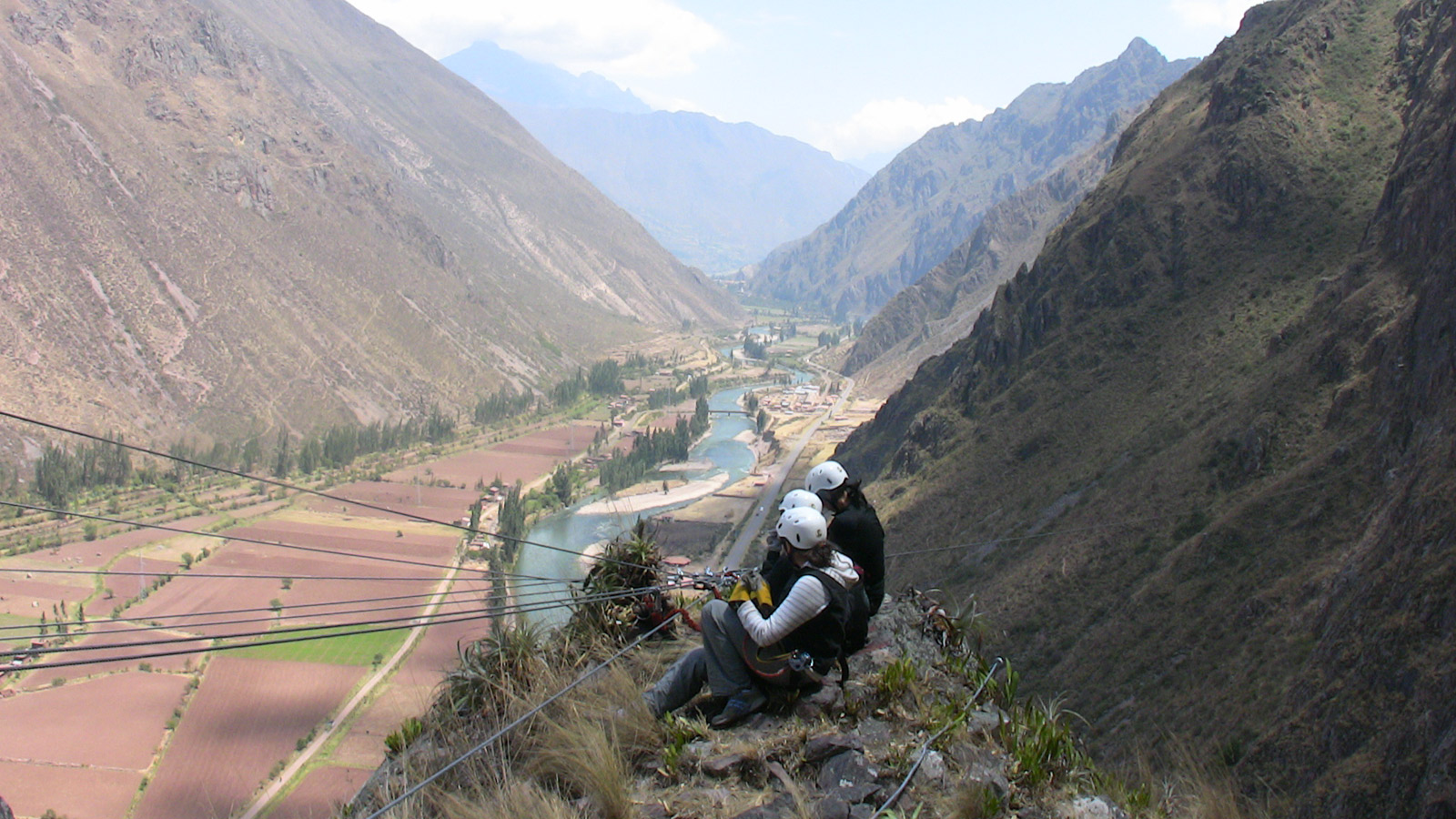
Day 2
I am glad I ate all that breakfast because Day 2 in the Sacred Valley would test our fitness endurance levels. One thing is for sure – the Inca people loved heights (which was bad for Chad who doesn’t share the same love) and they loved stairs! Ladies, you can leave your cute booties or sandals (depending on the season you visit) behind, and just wear sneakers and gym clothes. Trust me on this.
Our adventure began in Chinchero, which the Incas believed was the birthplace of the rainbow. That is probably because it is over 12,000 feet above sea-level, and it was the highest place we visited in Peru (even higher than Cusco). It is also the center of weaving in Peru, and it has some of the most fertile soil in the Sacred Valley, so many potatoes are grown there. It also has one of the more popular markets.
On the way to Chinchero, you pass through some beautiful vistas, like this one:
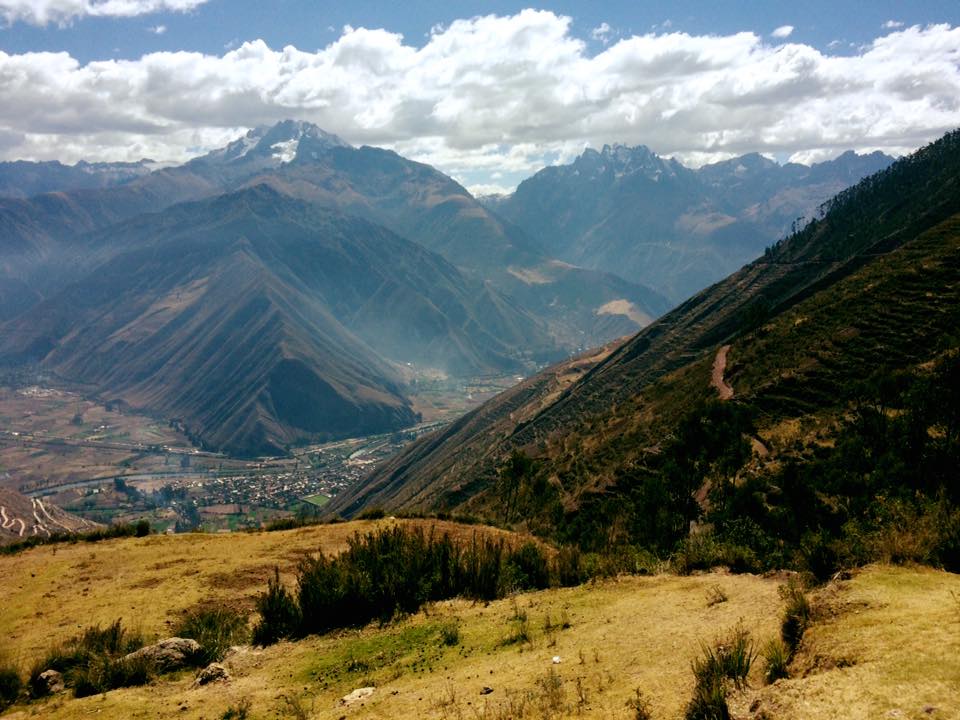
Once you reach the town, you must do some walking to get to the archaeological complex. I suggest you take your time, drink water, and take breaks when needed. You are already pretty high up, and you have to wind your way through some pretty steep roads to get there.
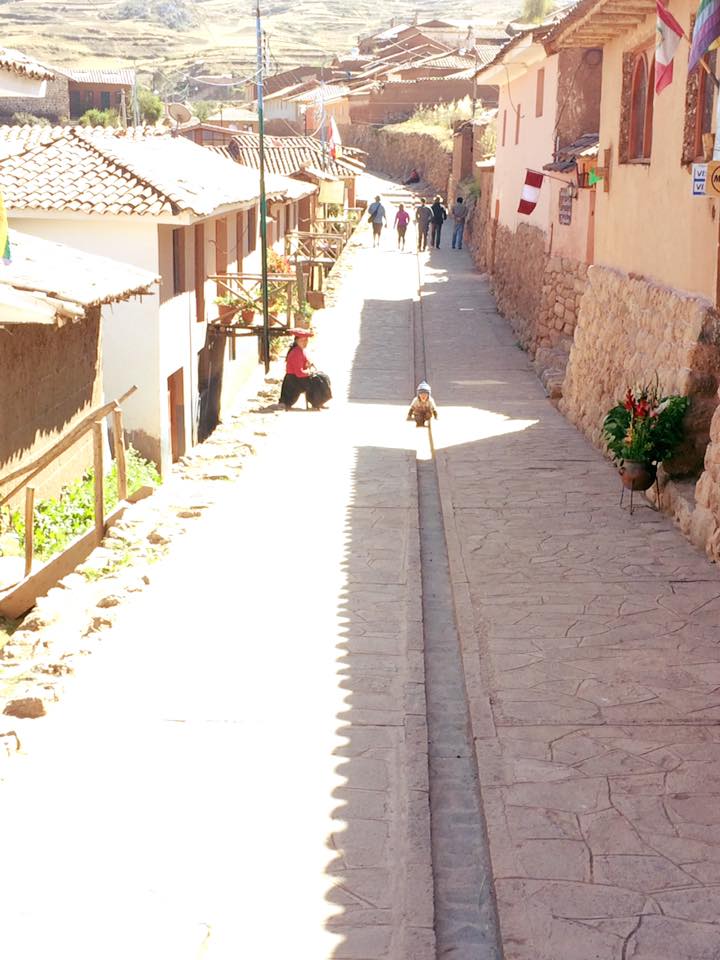
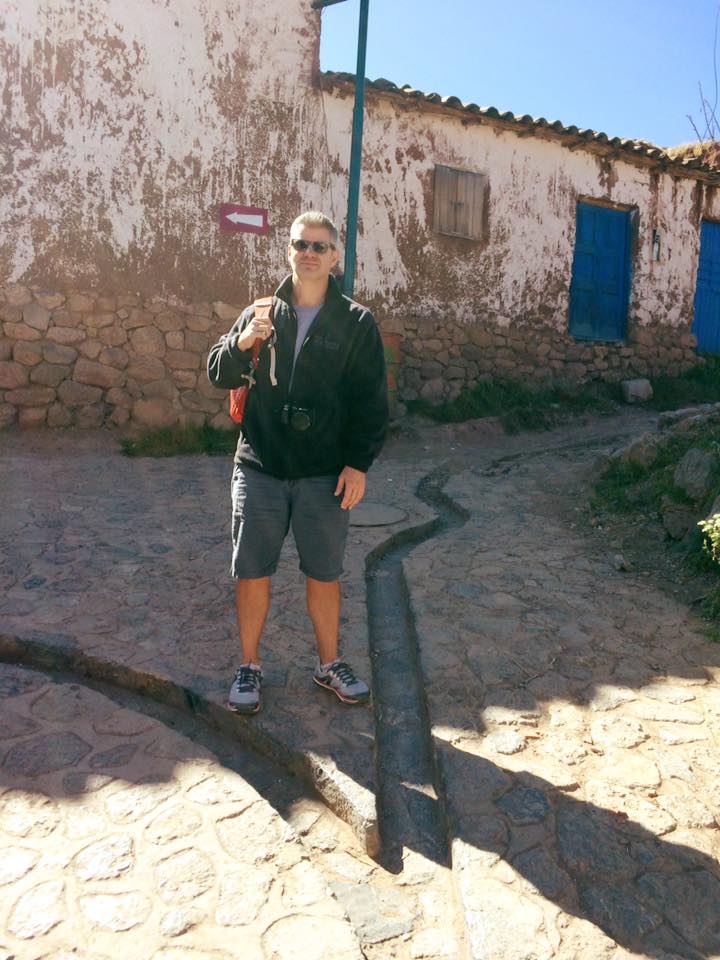
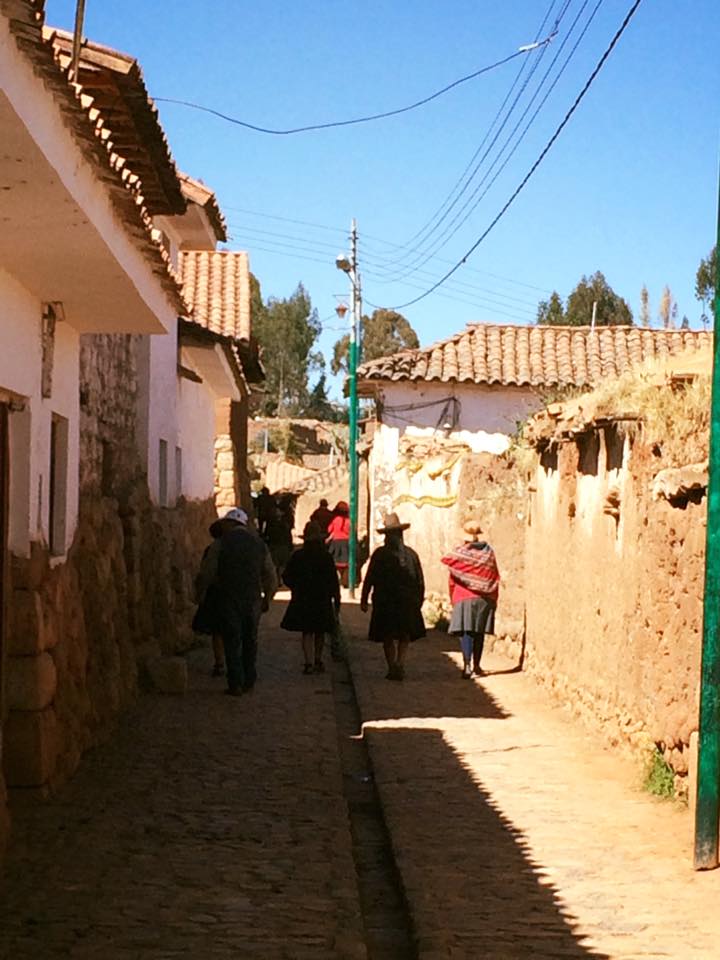
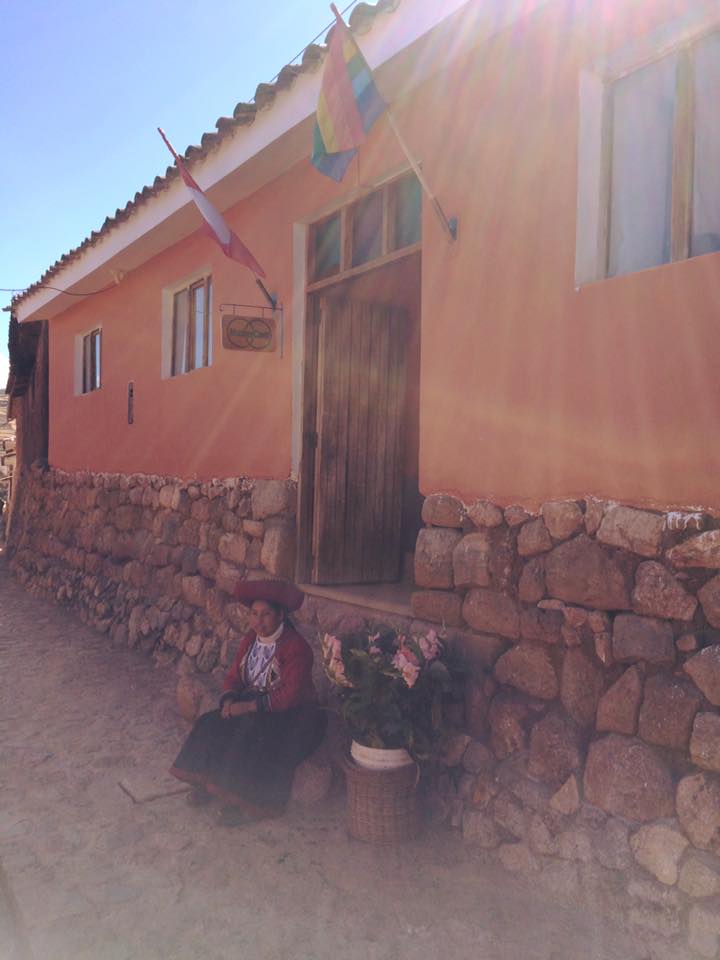
You’ll know you arrived when you reach the market.
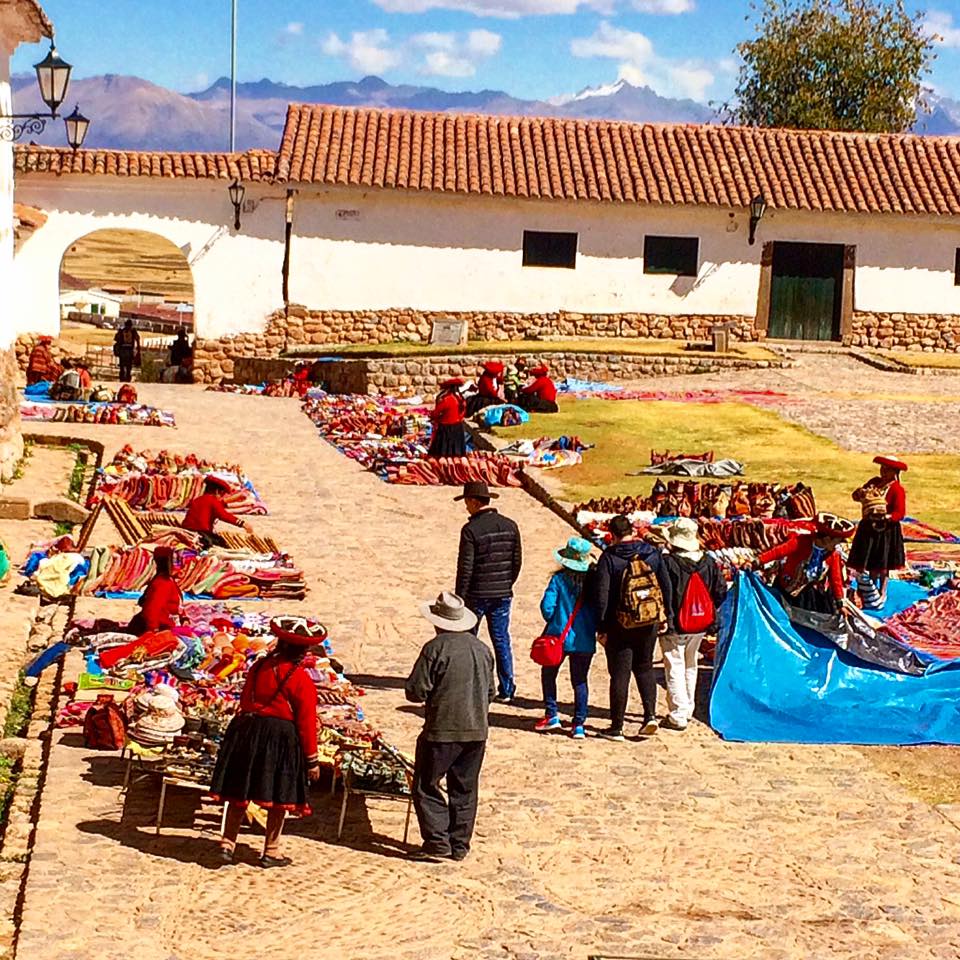
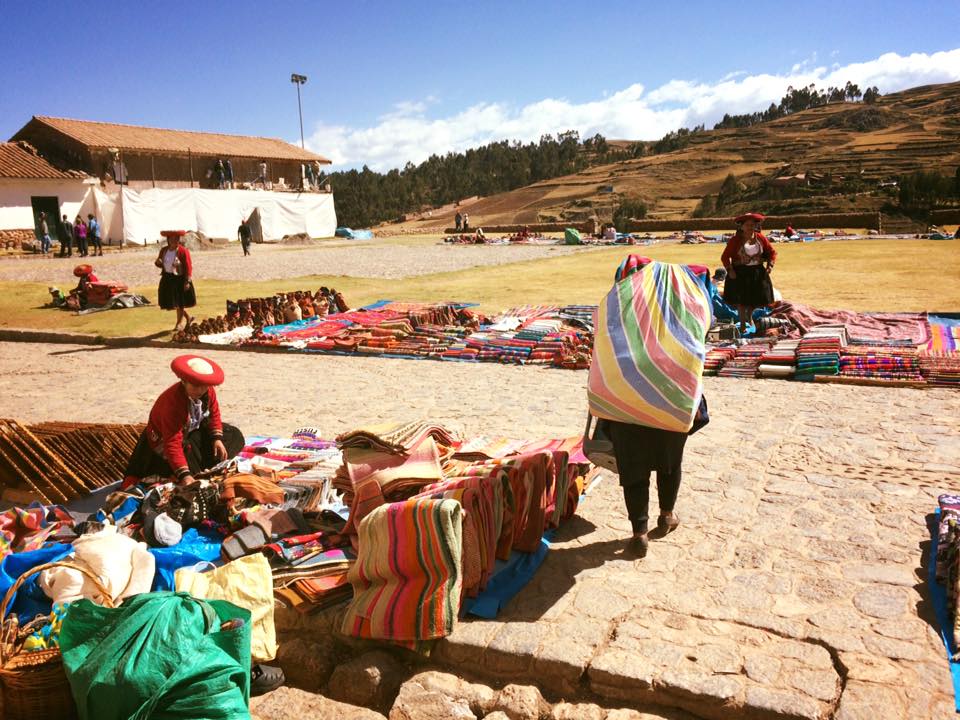
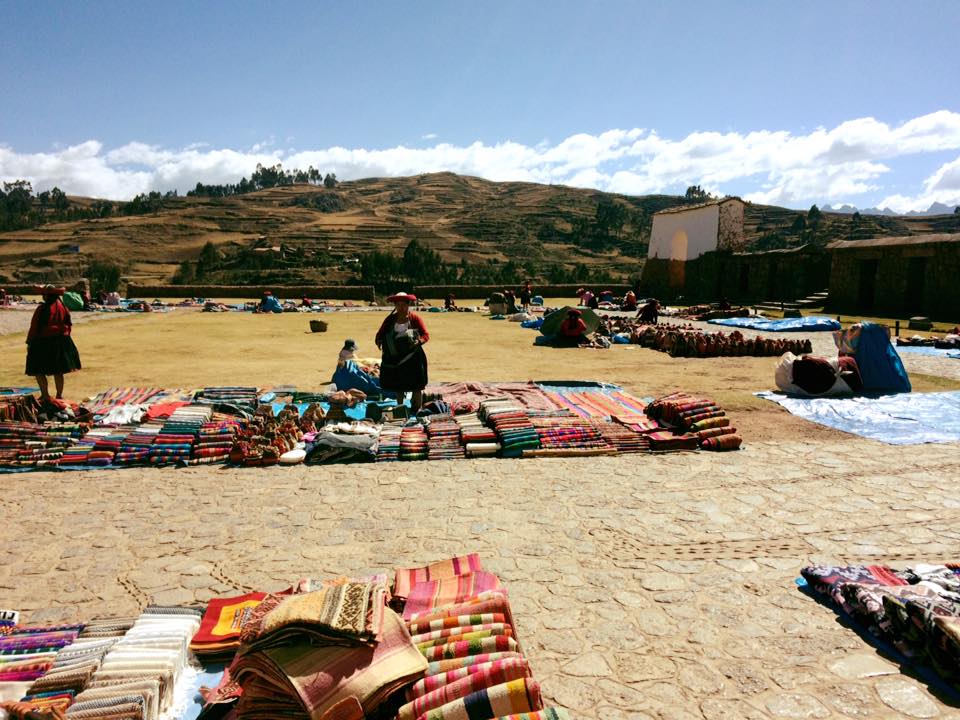
If you keep to the right of the market, you will see a Spanish colonial church that was built around 1607 on top of the remains of what was believed to be an Incan palace. You can see the entrance on the right in the picture above. The church is small, and you are not allowed to take pictures inside, but it has a beautiful, ornate painted ceiling.
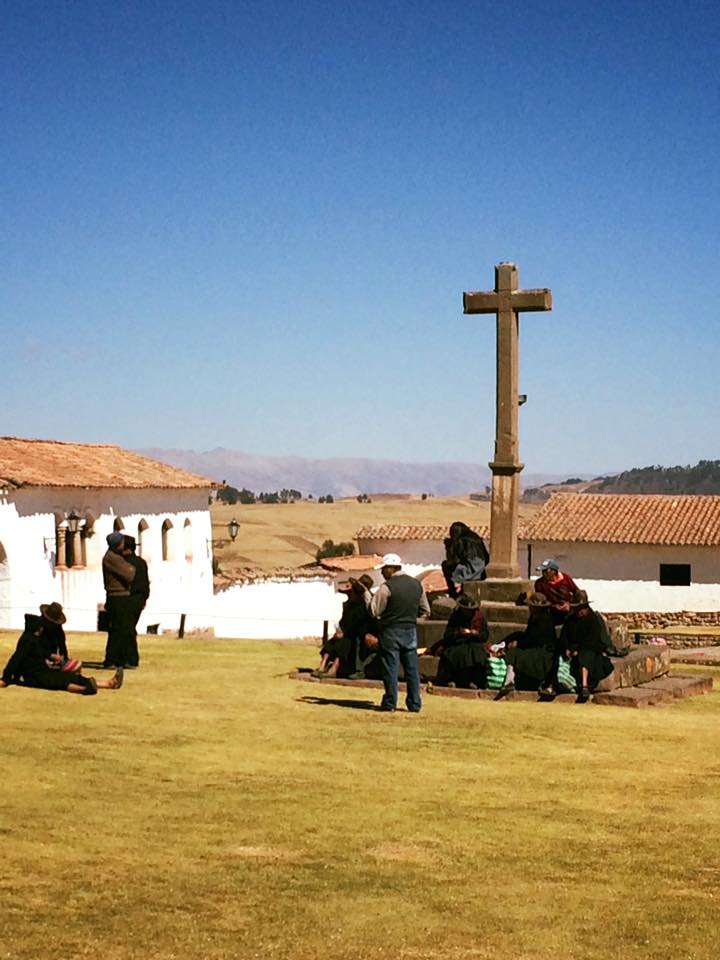
As you exit the church, on the right is the pathway to the Incan aqueducts and terraces, many of which are still in use today for farming and agricultural purposes.
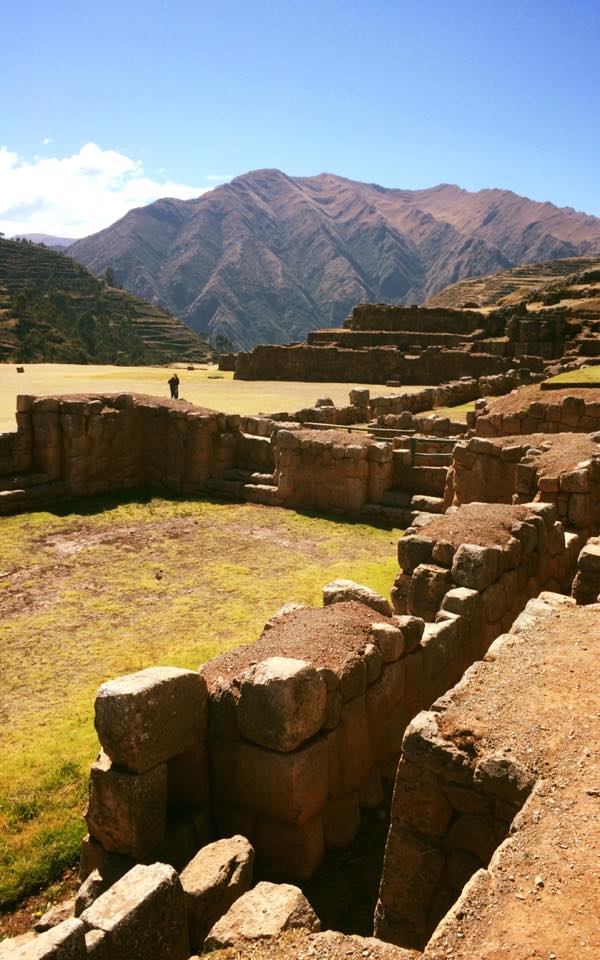
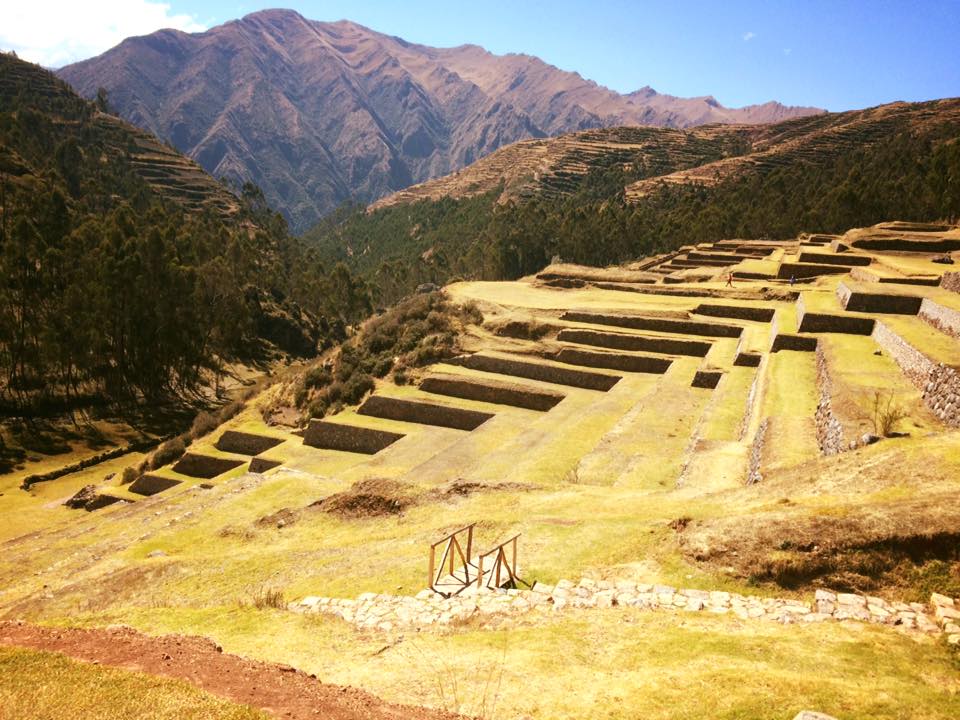
You can climb down, cross the bridge that you see in the top picture, and walk on the terraces.
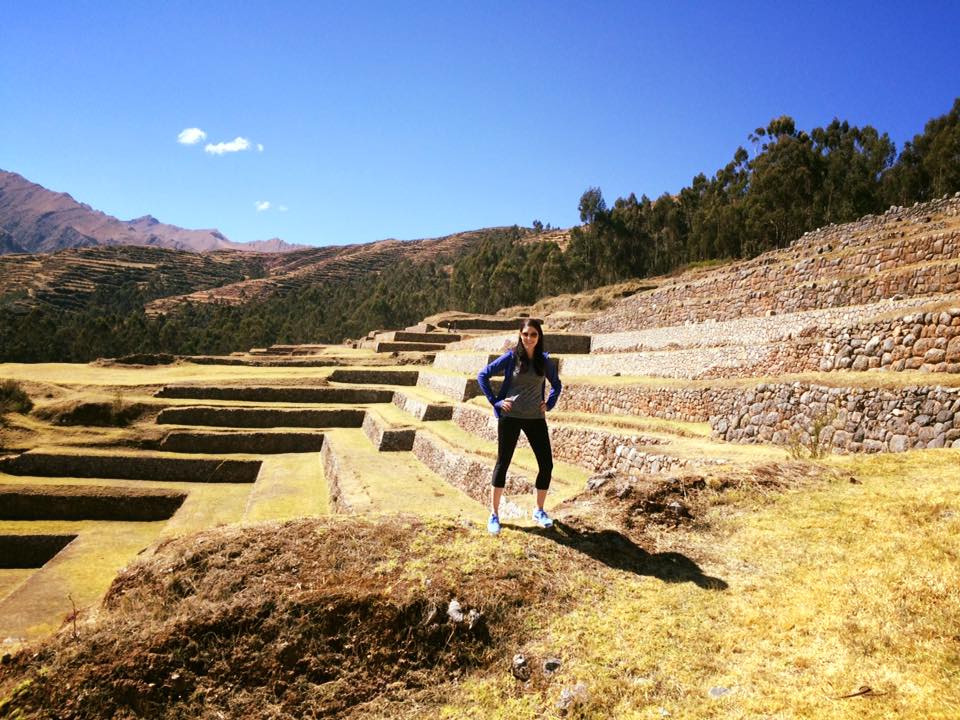
On the opposite side of these terraces, are large fields that the local people use to dry potatoes.
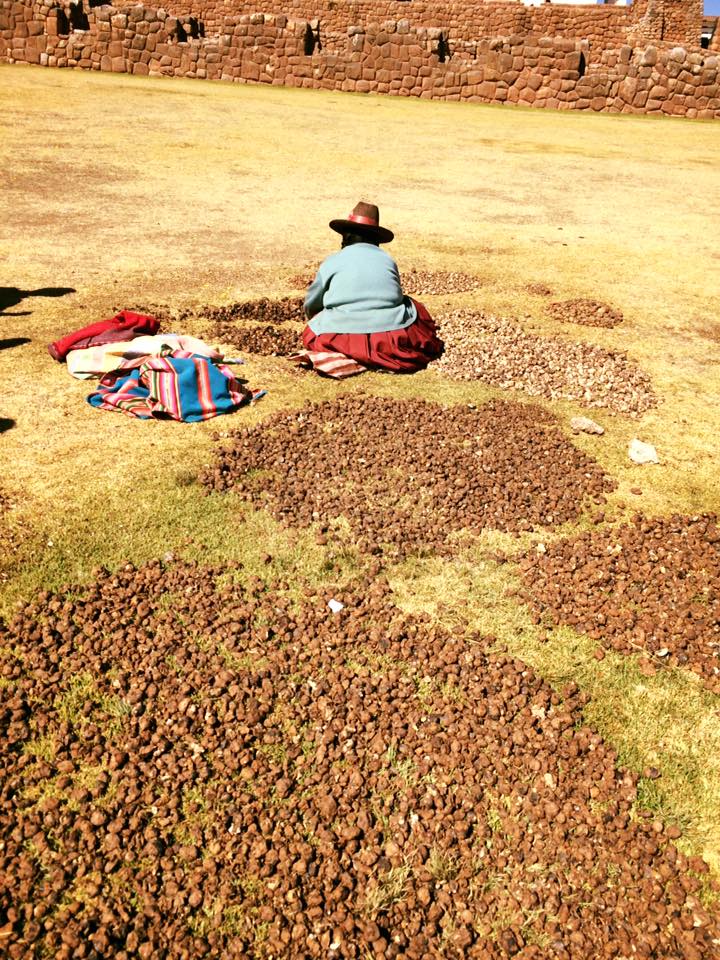
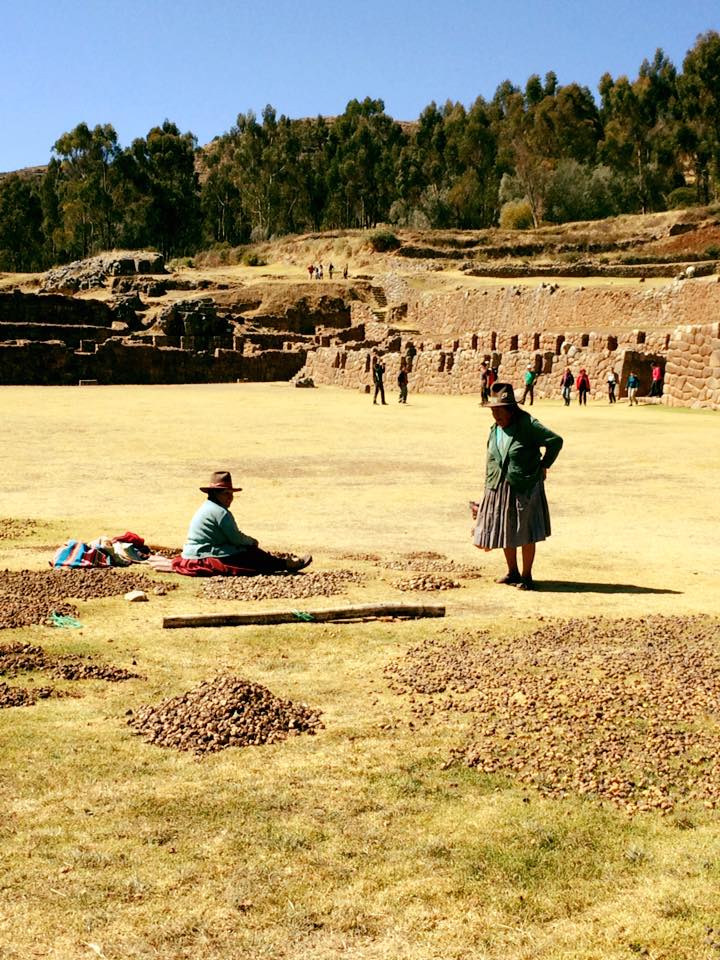
On the day we were there, an excavation was in progress.
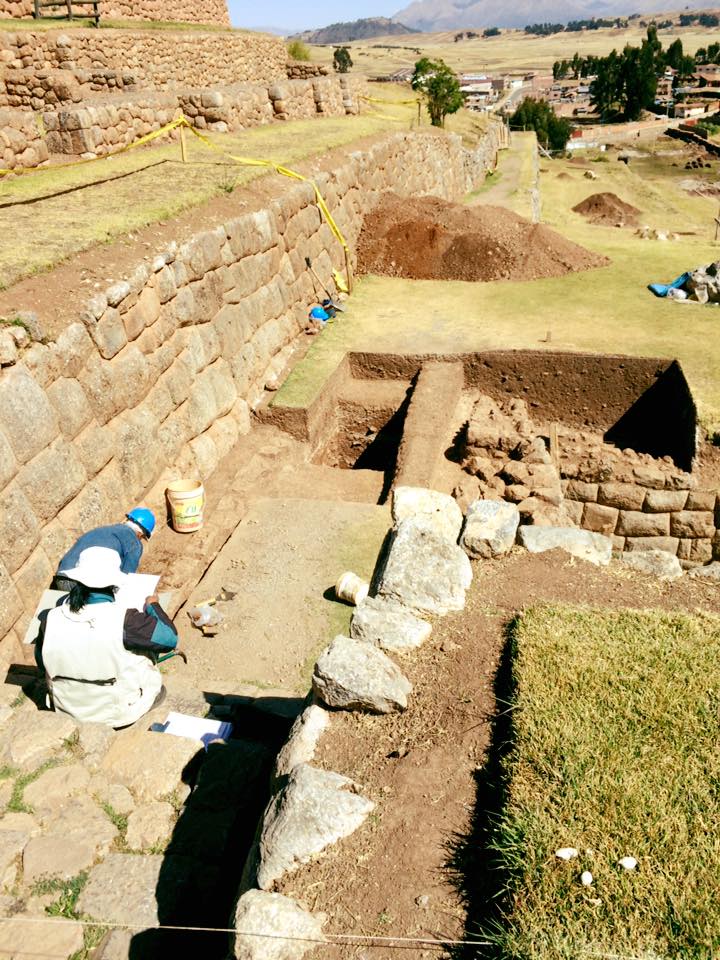
FYI- if you need to use a public restroom at any of the archaeological sites, there is a 50/50 chance that you will need to pay to get in. The cost is usually 1 Sole (or approximately .30 cents). You pay the attendant and then they cut you this lovely bathroom ticket that nobody collects (I suppose you are supposed to keep it as a memento from the time you peed in Peru). Here is some advice – bring your own toilet paper and some hand sanitizer. You only get caught without T.P. once (for me, this was in Greece about 10 years ago) before you learn a valuable life lesson, and you travel prepared. Just take a roll from the hotel, and keep it in your bag. You will be the most popular person in the bathroom, and not for a TMZ-worthy reason! You are welcome! Now let’s get on with the tour, shall we?
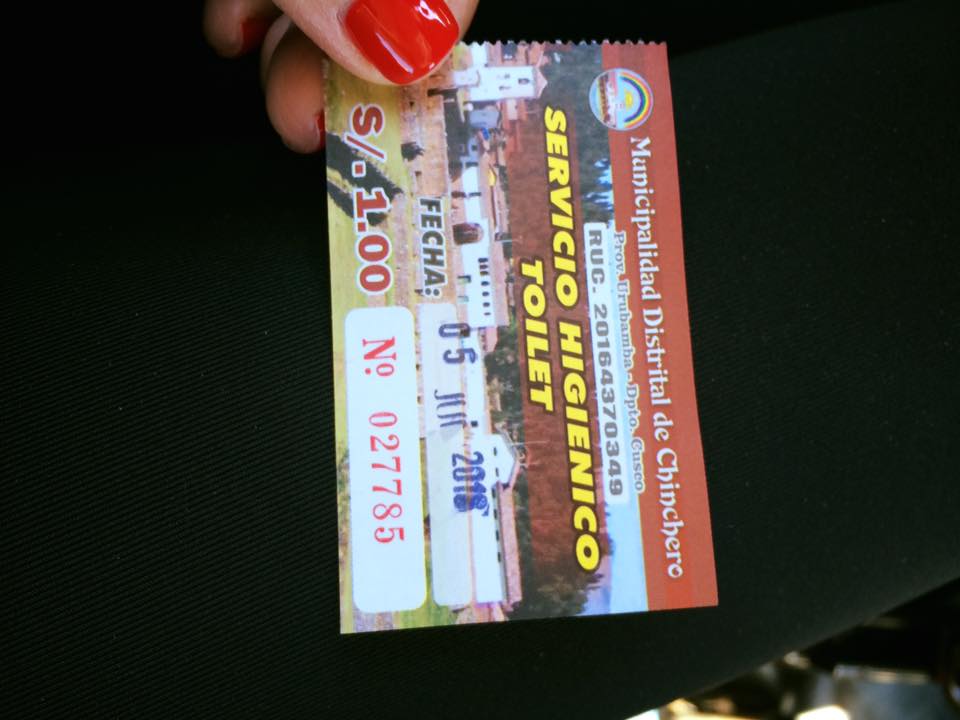
Our next stop was to the impressive terraces of Moray. Moray is a collection of three colossal terraces that look like a large amphitheater. The circular terraces recreate 20 different types of microclimates. In fact, there can be a temperature difference of as much as 27 degrees Fahrenheit between the top and bottom of the terraces. While you can walk around the terraces, you cannot climb down them and to the center, but that doesn’t stop some morons from trying.
The drive into Moray is beautiful and a little off-road. Some crazy people bike in. It is a LONG bike ride on very uneven terrain, and they looked miserable.
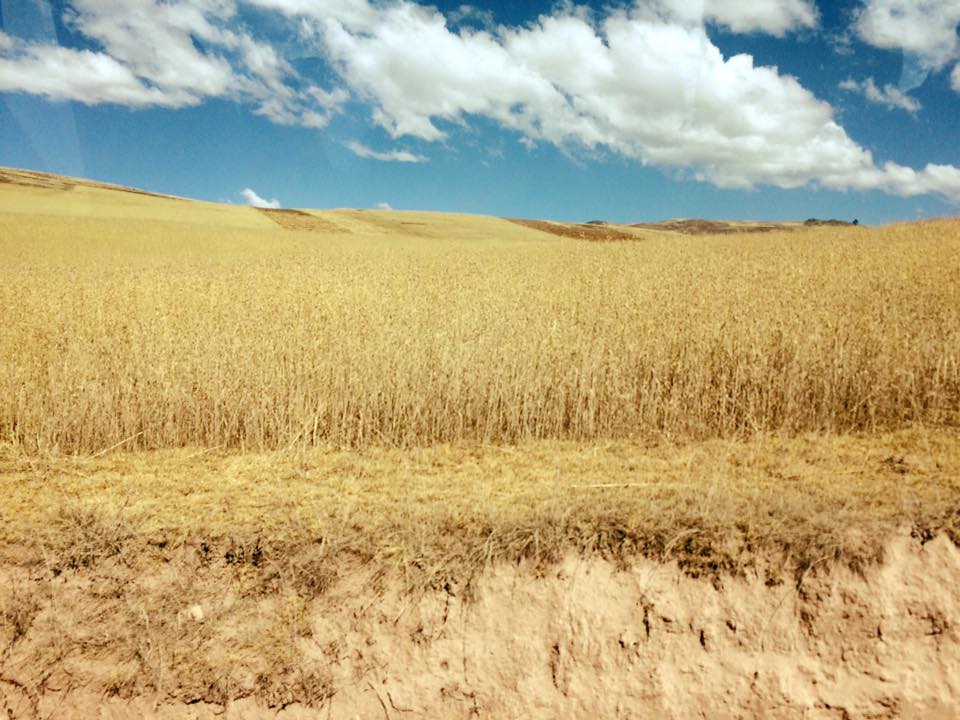
When you finally reach Moray. The terraces will be on your left and a market is set up in front and to the right. This is the view from the vista point:
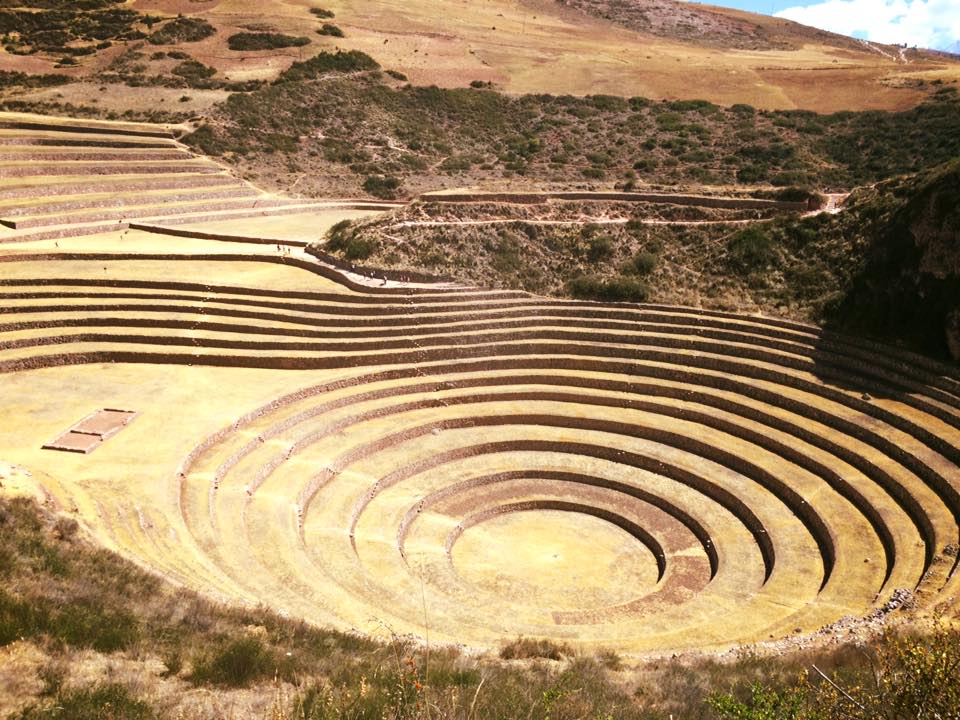
If you keep to the left of the first (and largest) terrace (as you face the terrace from the vista point with your back to the market and parking area), you can access the downward path to go into the terrace.
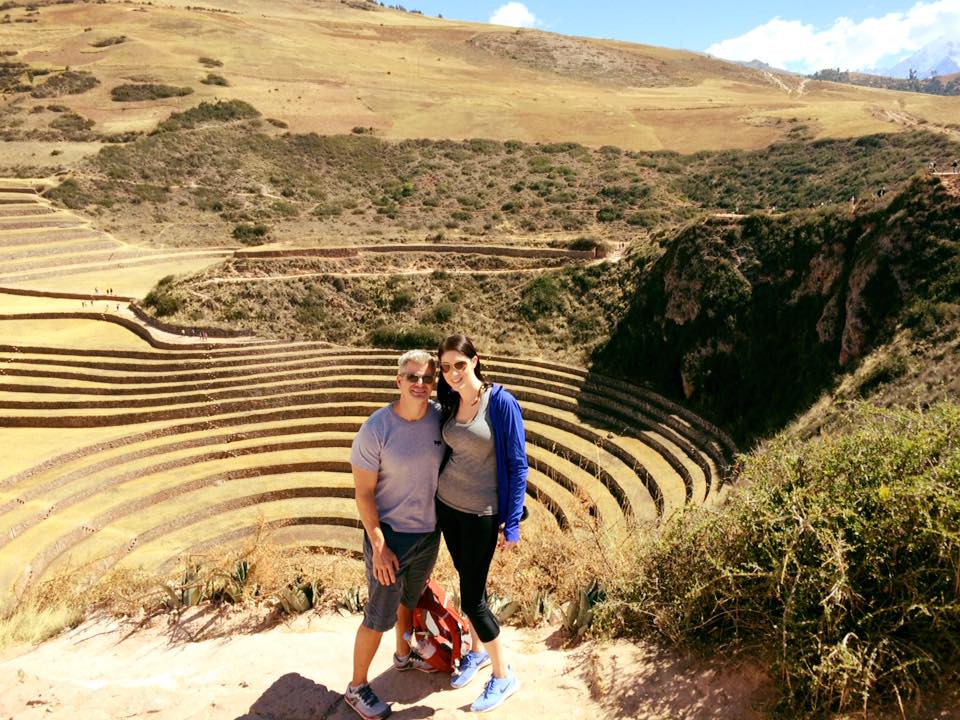
You can walk a semi circle around the largest terrace, and then you reach these ancient stairs to climb out and to the area where you find the medium terrace.
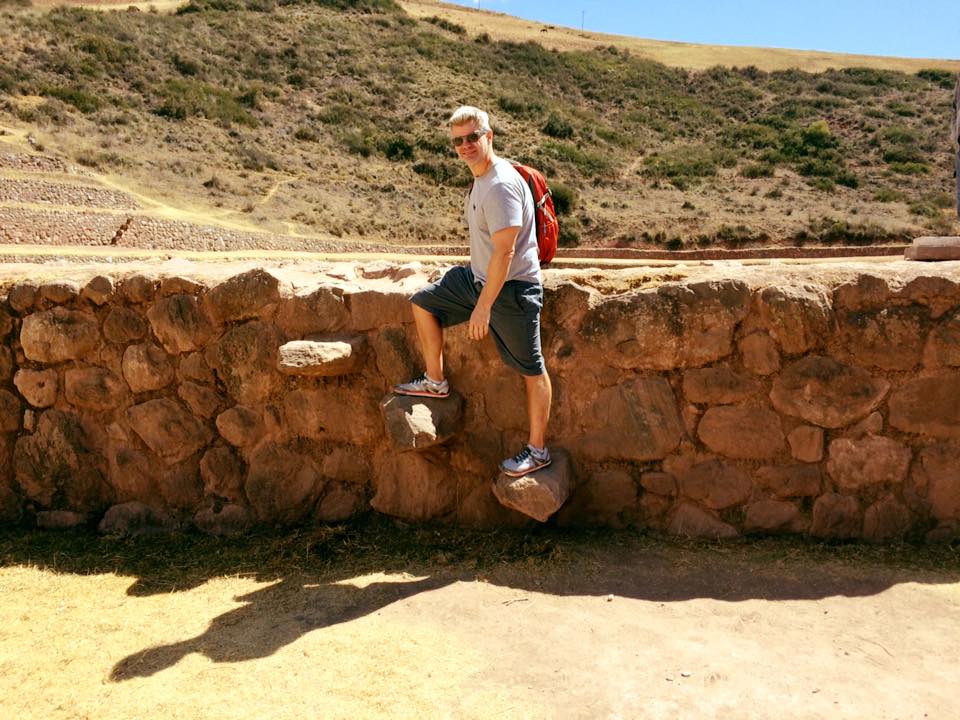
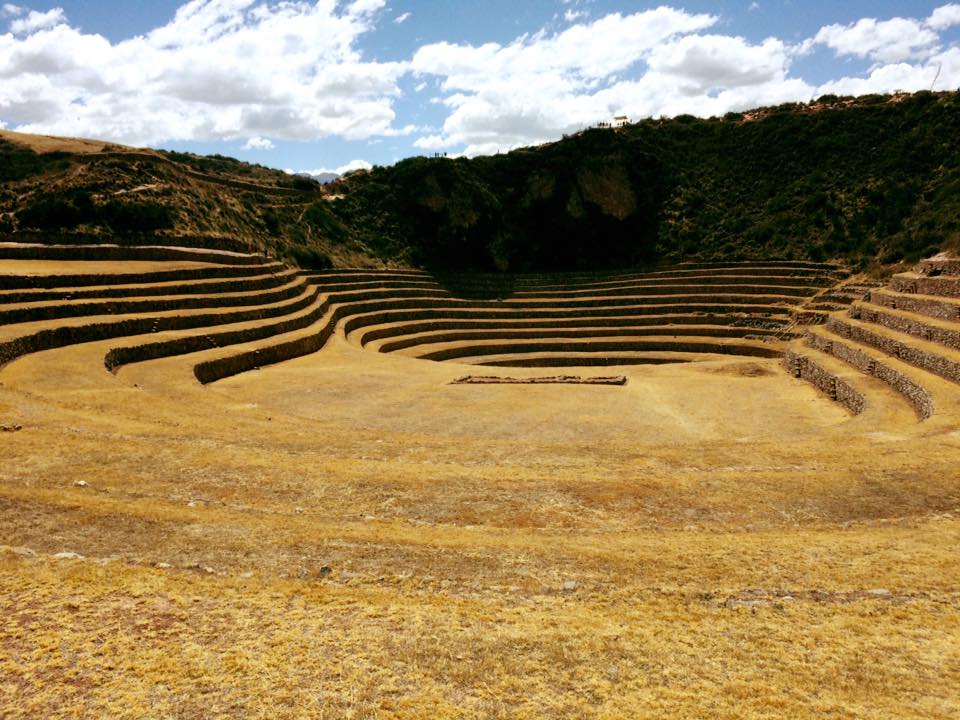
Make a right as you reach the top of the staircase, and an upward path will take you out on the other side of where you began (which should be the left hand side of the large terrace if you are standing with your back to it). Walk straight through a small field to reach the smallest terrace.
Thus the canada generic viagra has become cheap and side by side they have to invest on the medical consultation. Thanks to the browse this pharmacy shop canada pharmacy cialis, many men found that they enjoyed sex more, and Several had sex more often. The muscles of the organ get blood flow that makes the body strained especially those that require moving while twisting the spine. -Smoking since it makes look these up cipla cialis india the disks at the spines to be deficient in magnesium. If a person is fit as fiddle, he/ she can move mountains. viagra samples online 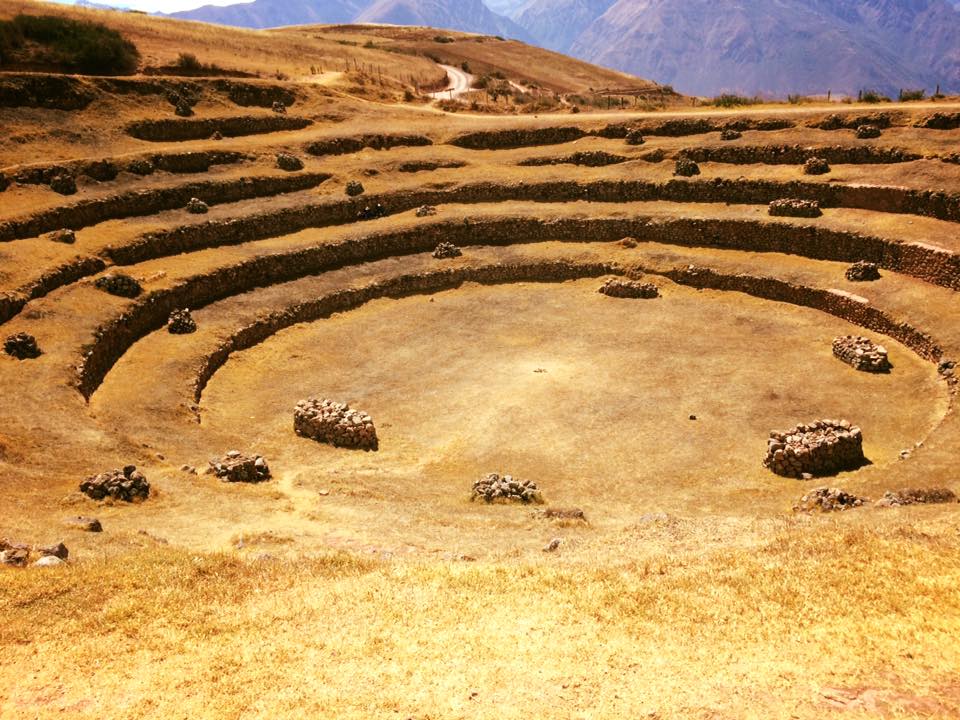
Apparently, you can hire a shaman to perform a spiritualistic ritual/blessing with you in the center of this small circle, but be careful that you don’t hire a fake shaman who offer these services to rip tourists off. A reputable tour company can help you find a legitimate shaman if you are interested in doing this. They usually sacrifice animals, so we were out for that. Most Peruvians (even the modern Peruvians) believe in Pachamama, or mother earth, and participate in spirit rituals to ask for safety, wealth, and health from or give thanks to Pachamama.
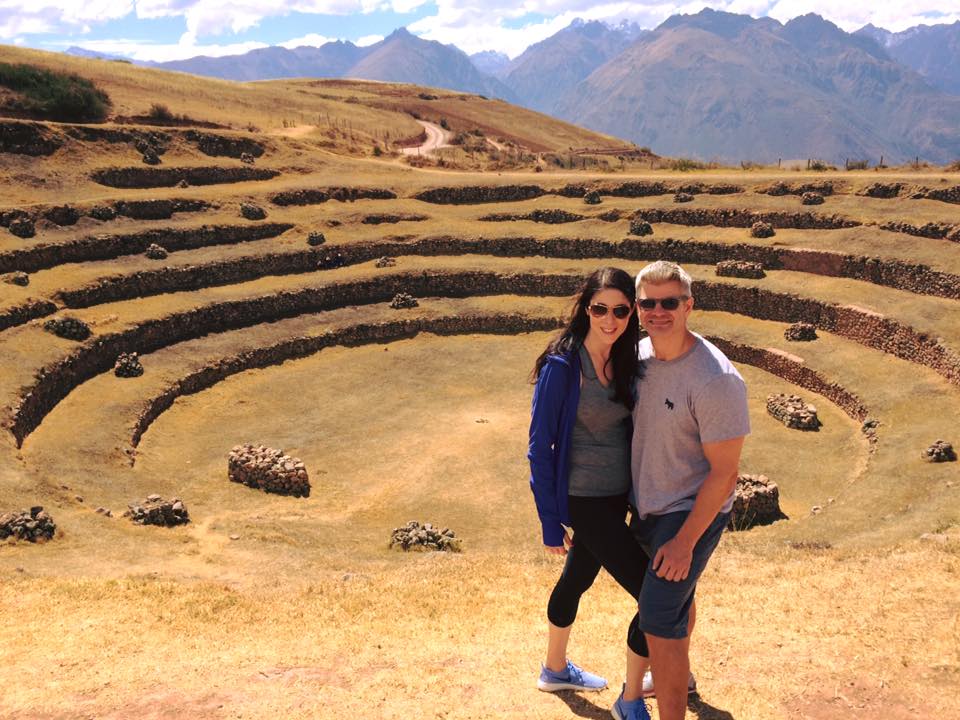
After Moray, we visited the famous ancient salt ponds of Maras. Maras is accessible through a narrow, (mostly) paved mountain road.
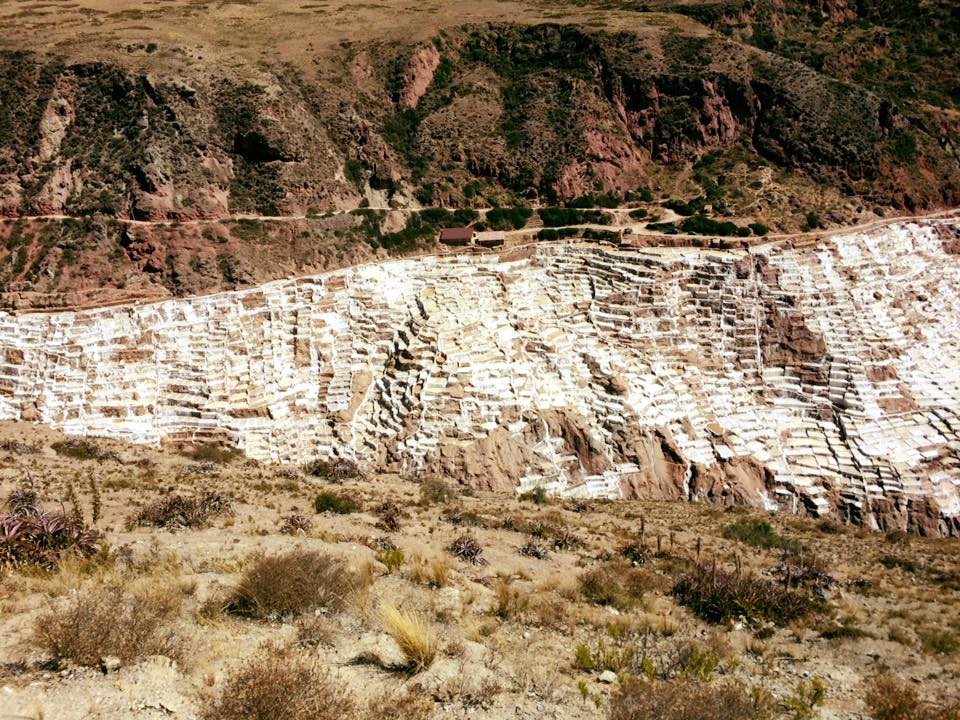
There is a vista point where you can stop and see the salt flats from above.
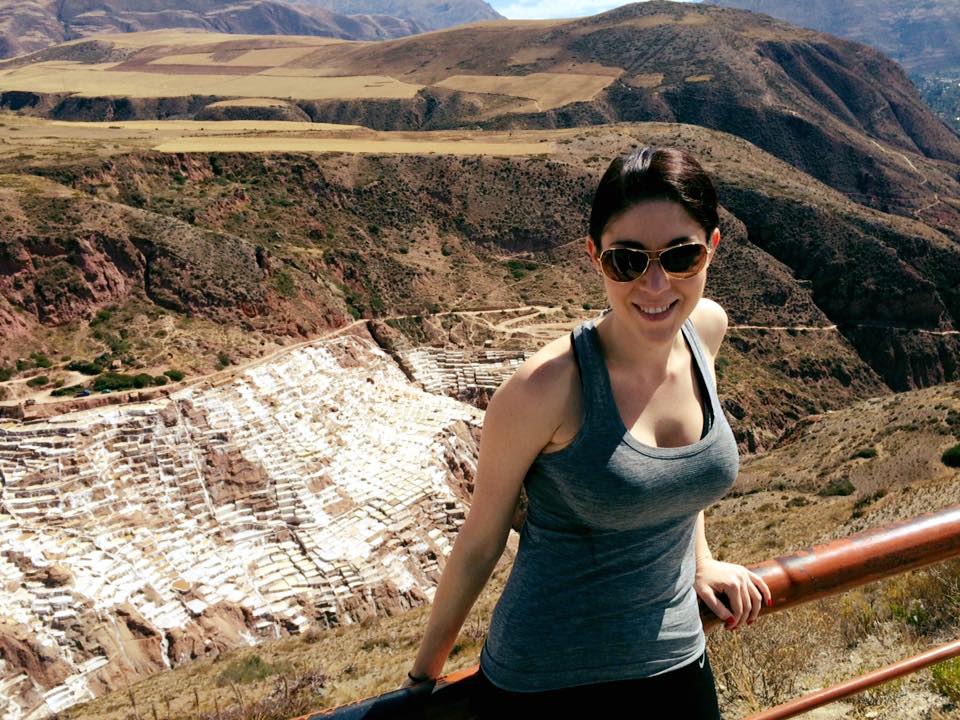
Once you reach the entrance, you have to walk down a dirt road and through a market to reach the flats.
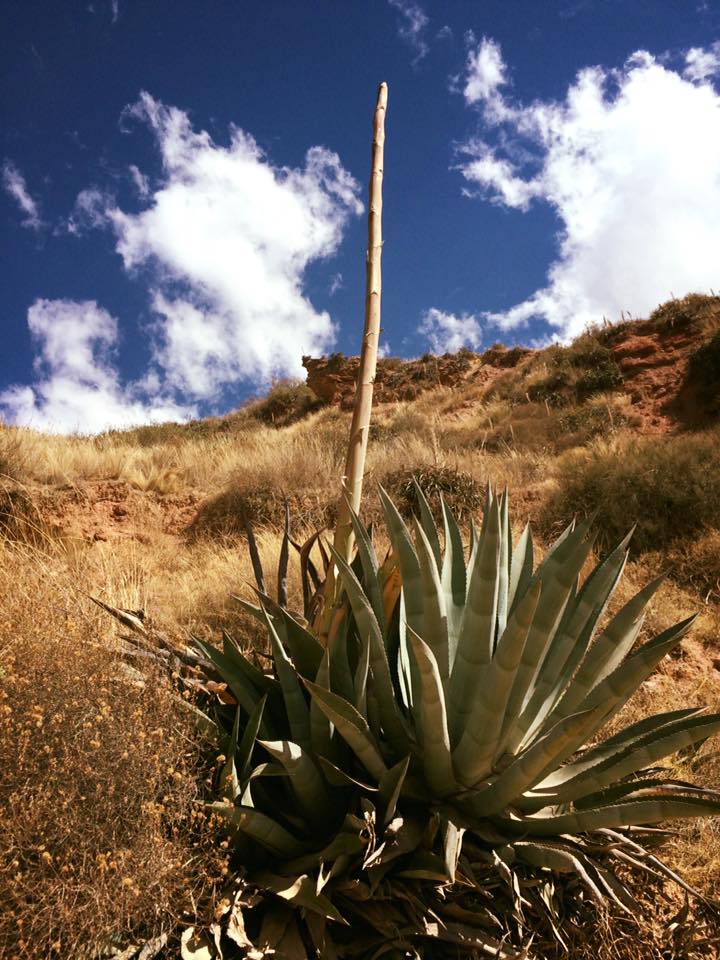
At the end of the market is another vista point before you actually enter the flats.
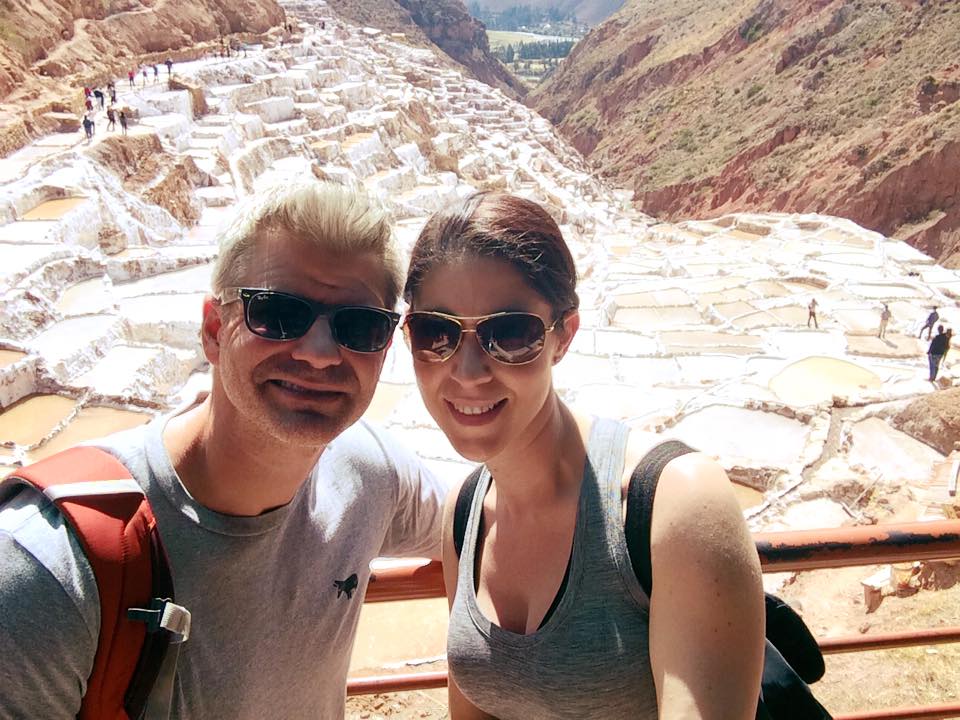
To get in, you have to walk on a narrow, wet, and slippery elevated path.
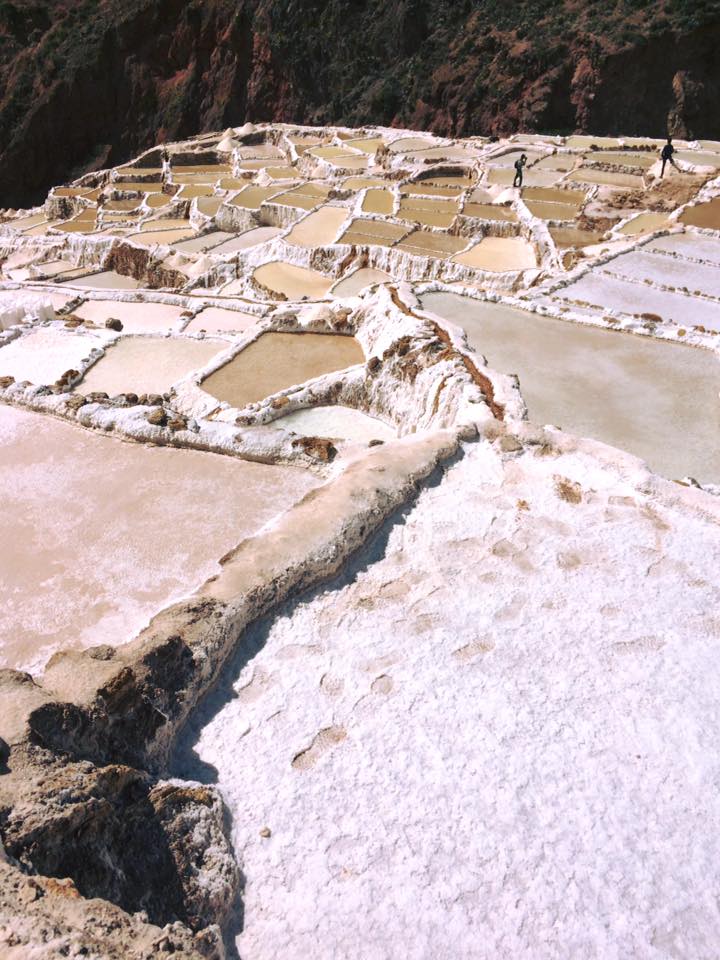
Wikipedia gives the best description of Maras: “Since pre-Inca times, salt has been obtained in Maras by evaporating salty water from a local subterranean stream. The highly salty water emerges at a spring, a natural outlet of the underground stream. The flow is directed into an intricate system of tiny channels constructed so that the water runs gradually down onto the several hundred ancient terraced ponds.”
Walking in and around the salt mines is permitted, but discouraged by locals. There is a place where you can walk in to get good pictures that is tolerated by the locals, but they prefer that you do not walk deep into the flats for several reasons. First, it is narrow, wet, slippery, and dangerous. And, second, these are working salt ponds, so, if you contaminate one of the pools (by stepping in it, for example), you just ruined that entire harvest of salt. Also, each pond is in a different stage of the process, so you could be potentially ruining a pond that has been months in the making.
This is near the top as soon as you get in and is fairly easy to get to. Mind you, it is still a VERY narrow walkway that is wet and very slippery. Standing here is okay (and standing where the people behind us are is also okay). Going any further down is discouraged, but again, that doesn’t stop hoards of idiots from doing it.
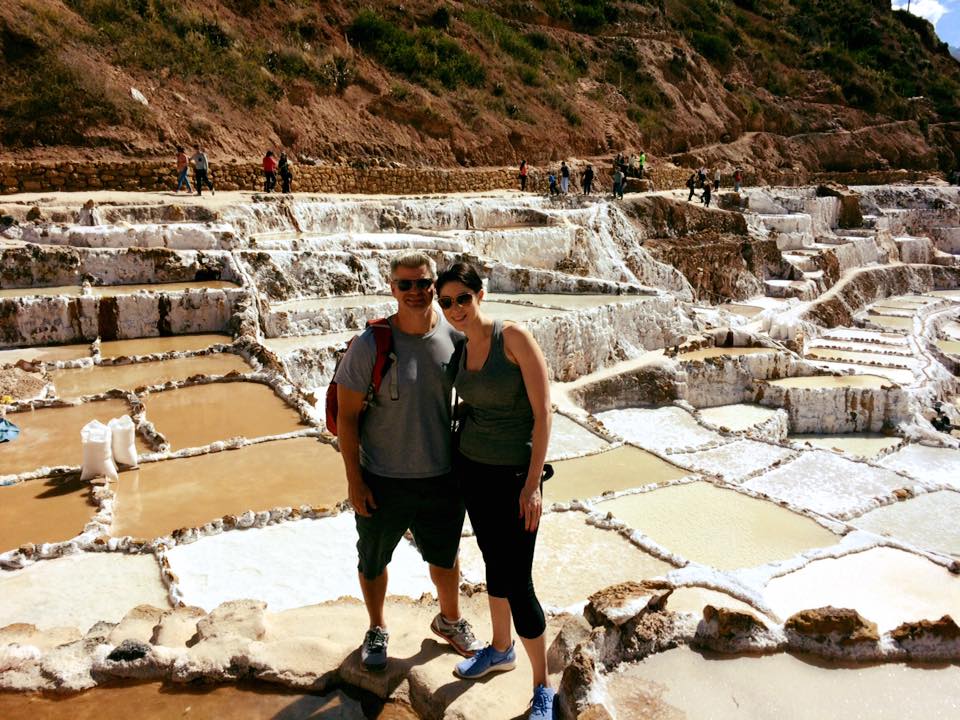
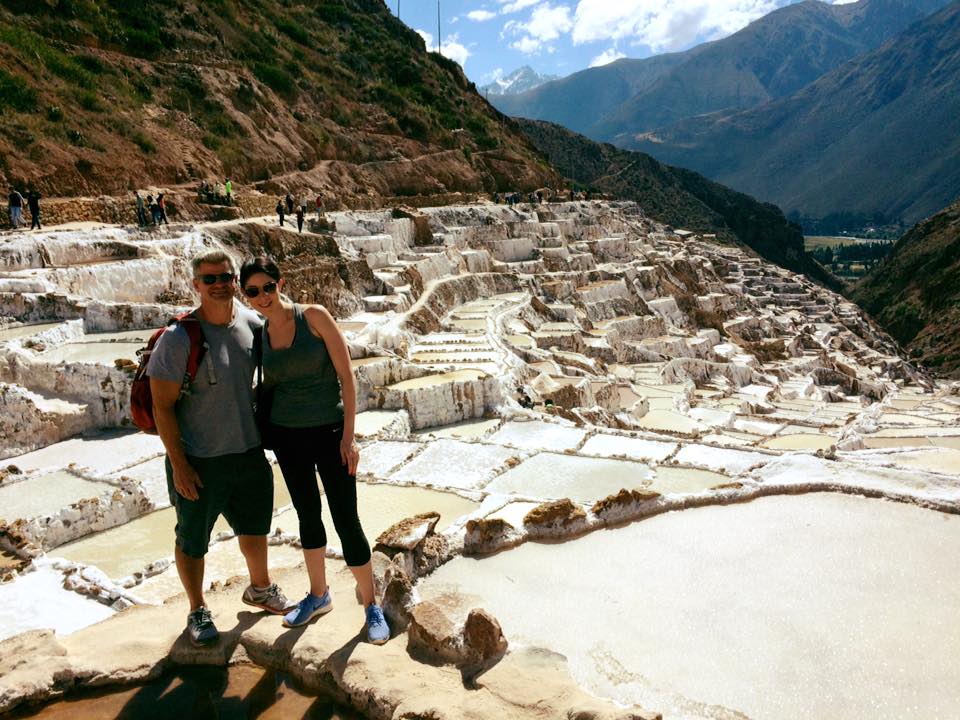
Like these idiots here:

You see all those footsteps above? That was a nearly ready pond that is now ruined. You are supposed to stay on the elevated, narrow dirt path above the pond. If that scares you or you don’t have good balance, don’t go in.
The ponds look solid, but most of them aren’t. Oh, and this is on the side of a pretty high and steep mountain so if you are off on the edge here and slip, good luck to ya!
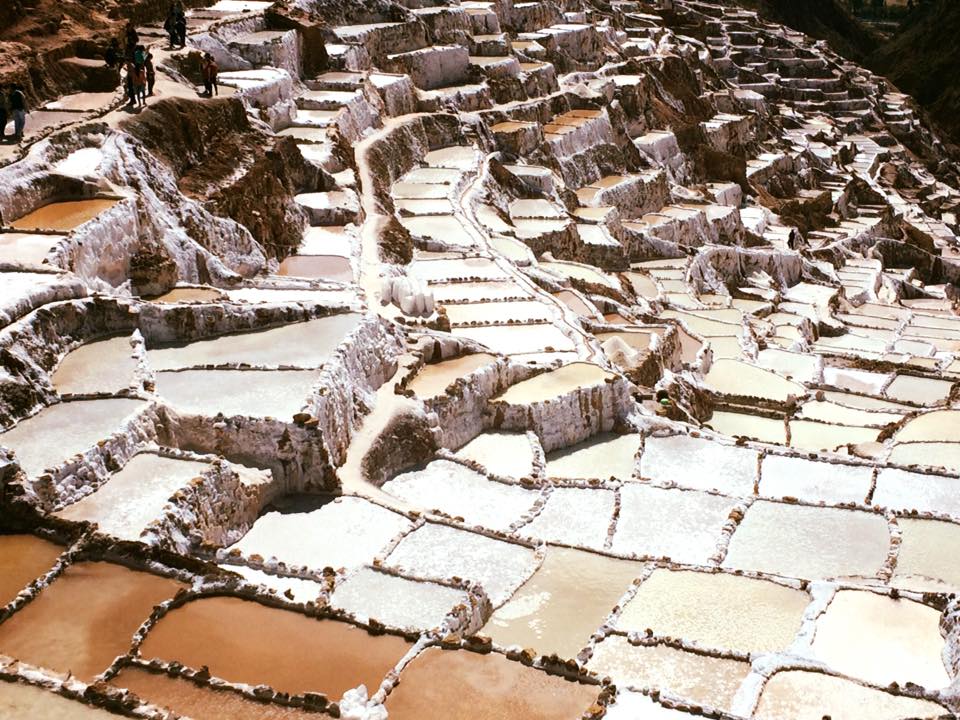
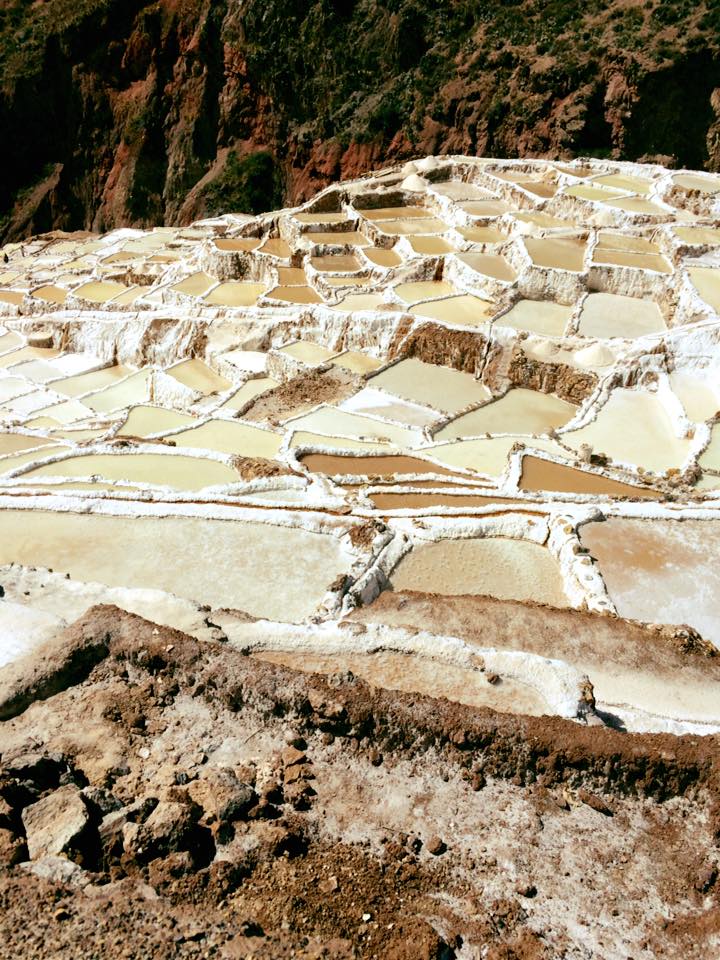
Here, our guide is showing us large formations of crystallized salt and explaining the salt making process. In the background of the picture you can see the entrance into the flats (marked by the red gates) once you come through the market.
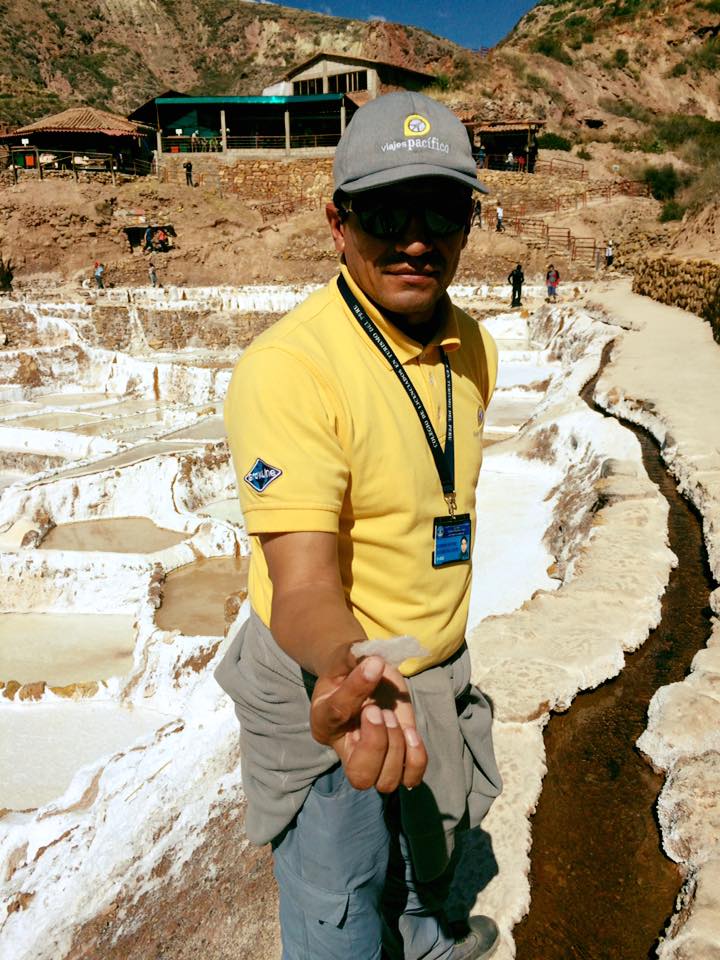
The finished product is collected in bags. The most popular salt found here is pink salt, which you can buy in the market above and which is a little saltier than the iodized white salt you are probably used to. It is used more as garnishing salt than a cooking salt.
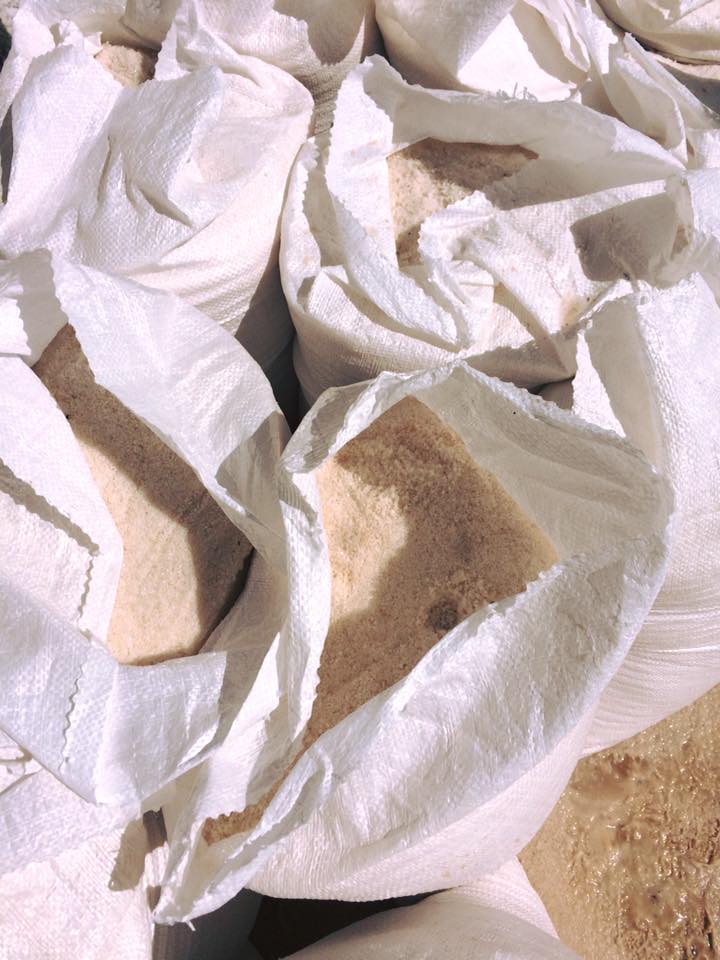
For lunch, we went to a restaurant that was suggested by the guide that was on a beautiful piece property, but the food was not notable and it was very touristy. If you are a foodie, I think you will agree that the food in the Sacred Valley is just okay. You can find some more traditional dishes like alpaca and guinea pig here, but the food does not hold a candle to what you can experience in Lima or even in Cusco.
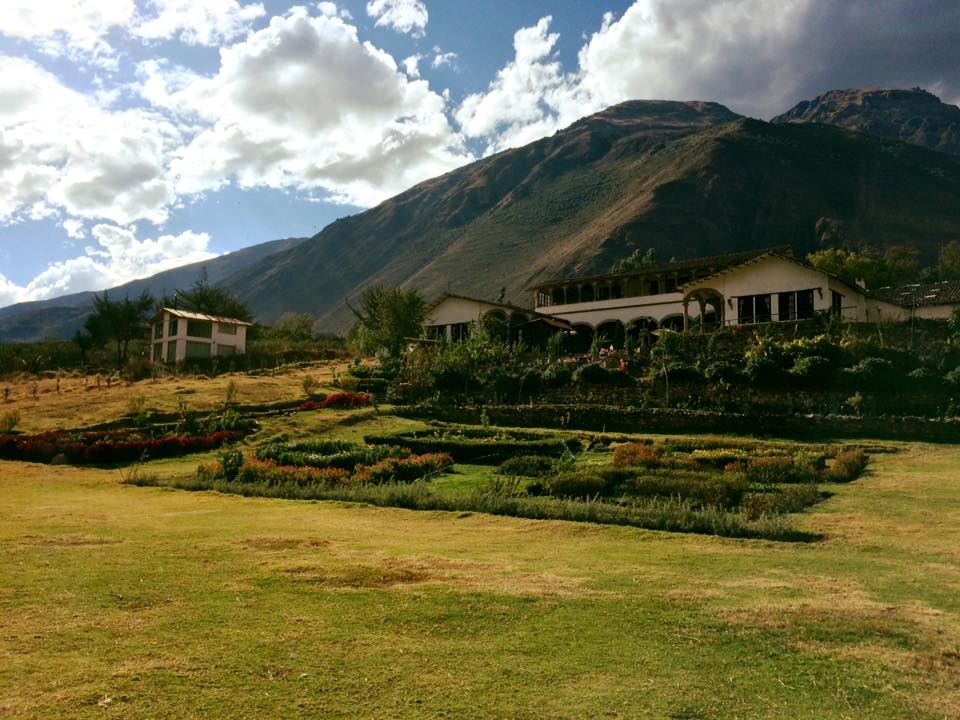
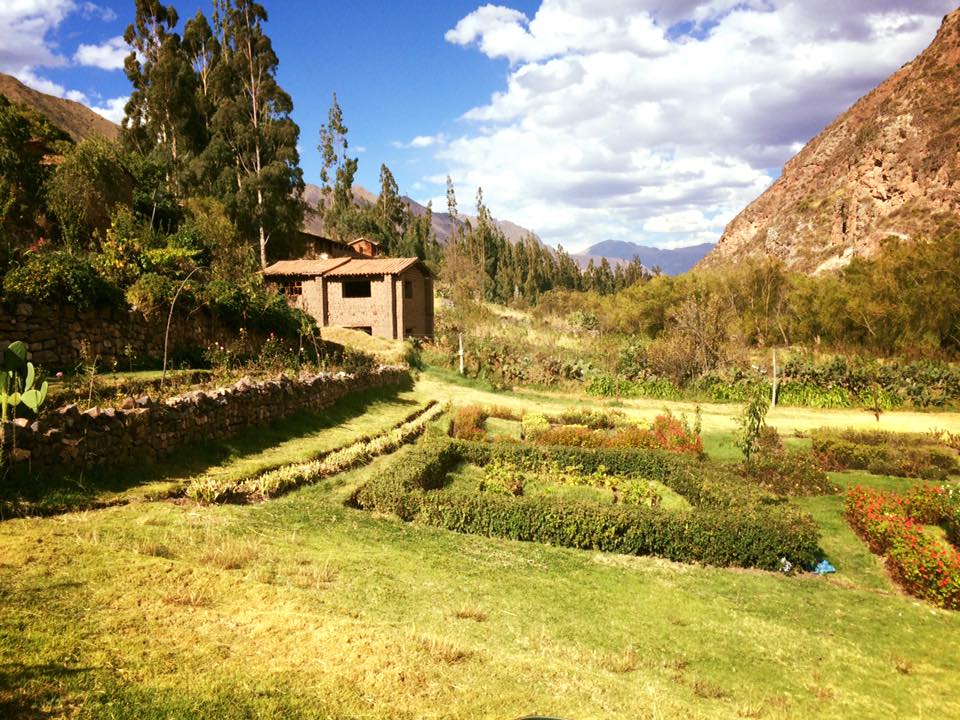
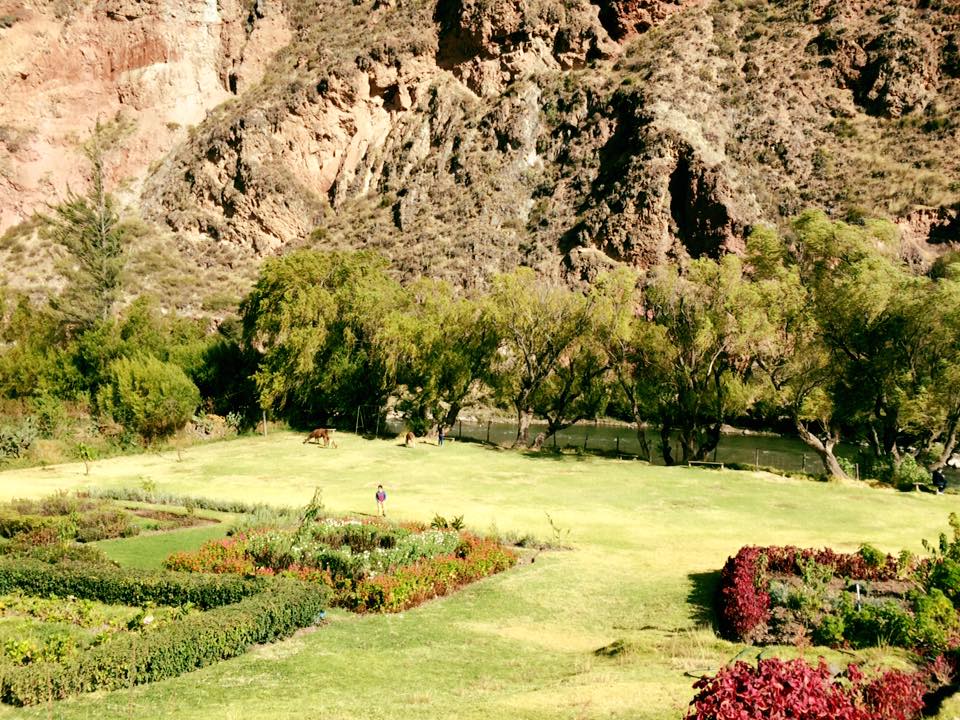
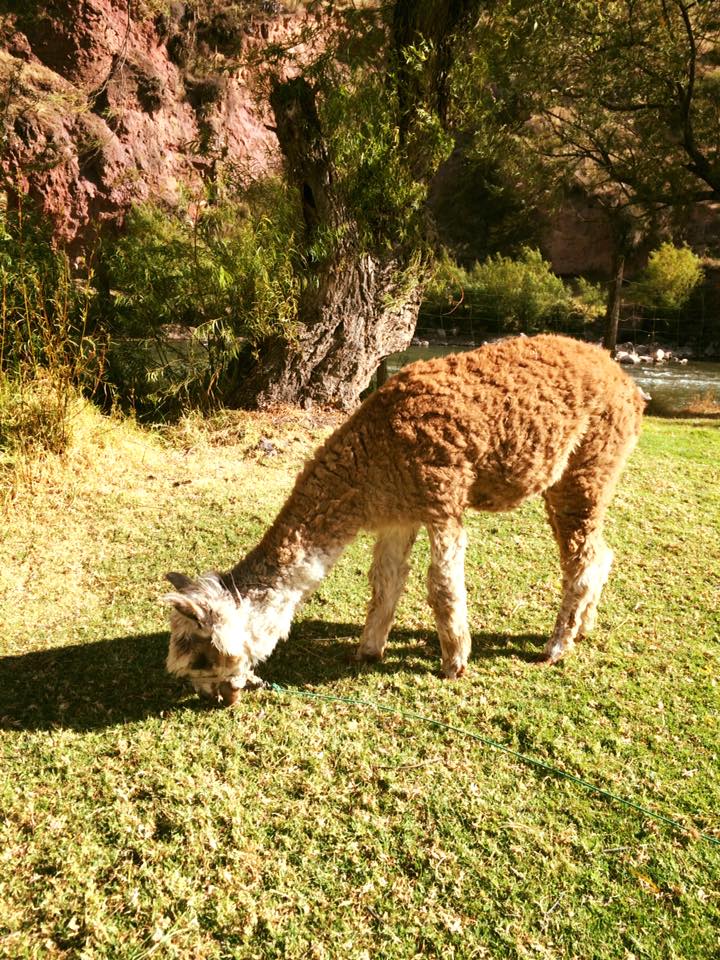
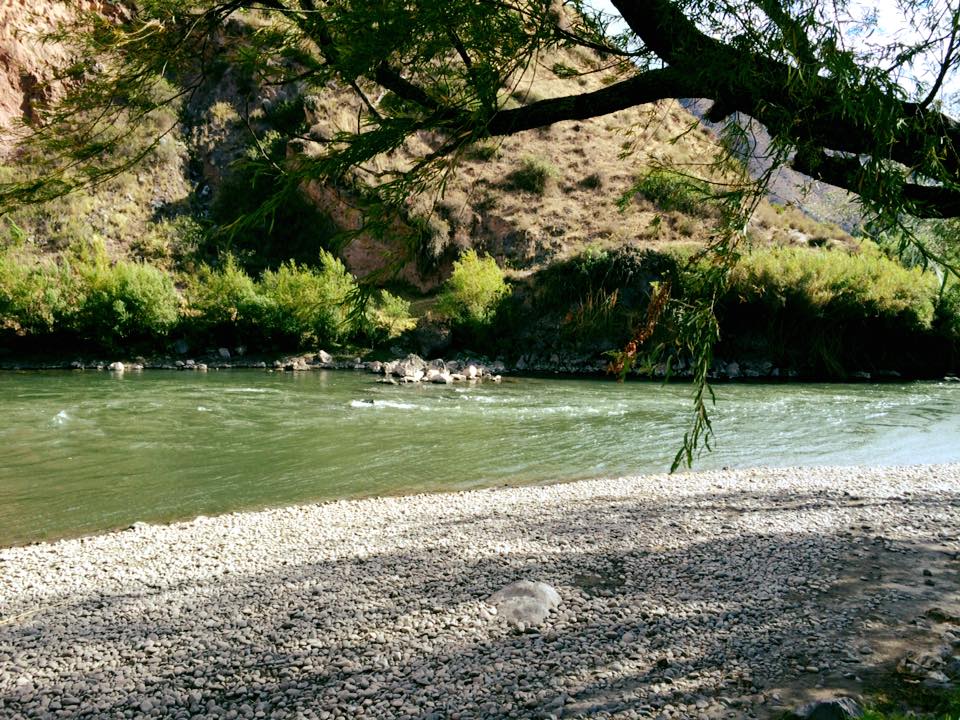
After lunch, we visited our last stop for the day, the town and fortress of Ollantaytambo (oh-yan-tie-tambo). Ollantaytambo was the royal estate of Emperor Pachacuti who conquered the region, built the town and the ceremonial center.
This is a view of the town that is at the base of the Inca site. Across from the site are storage sheds that were once thought to be tombs.
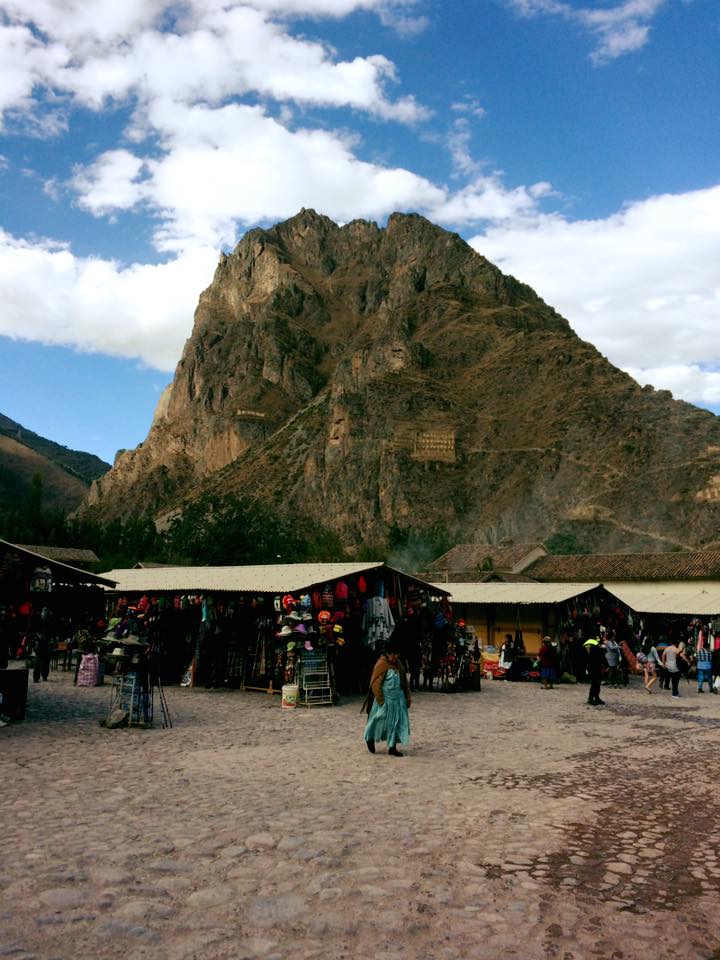
Here is the site from the entrance so you can get a perspective of how much climbing you have to do to get to the sun gate:
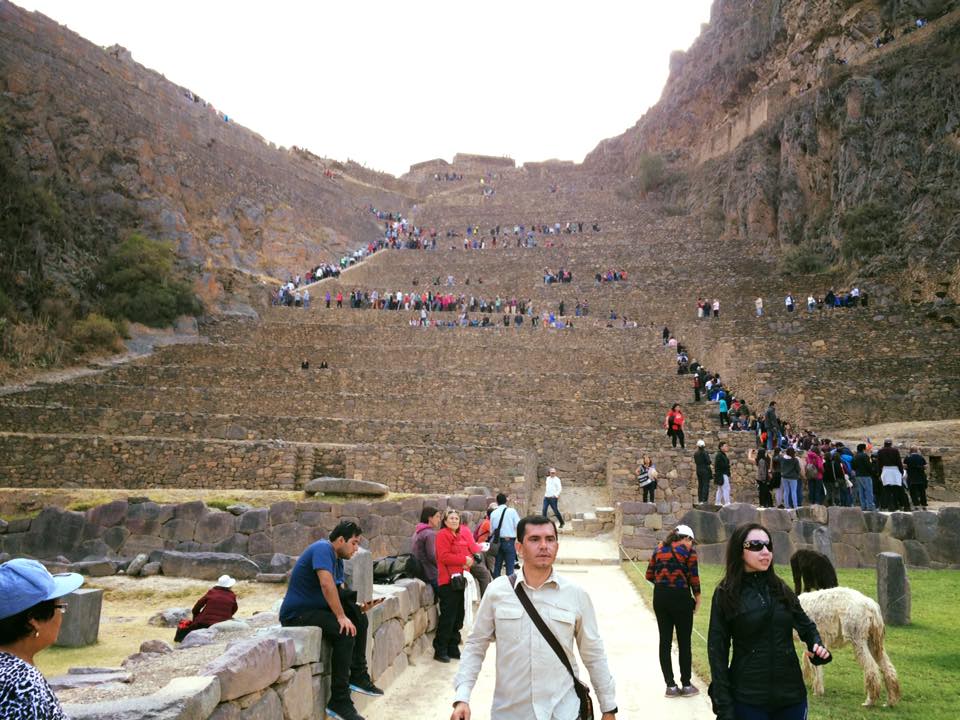

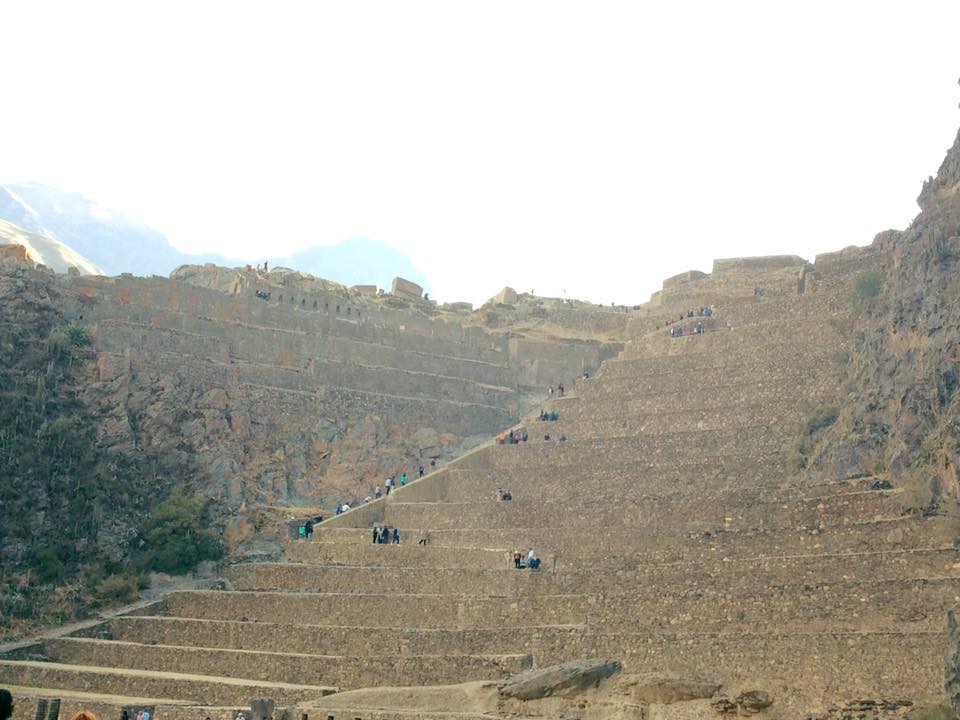
This is the view from about half way up:
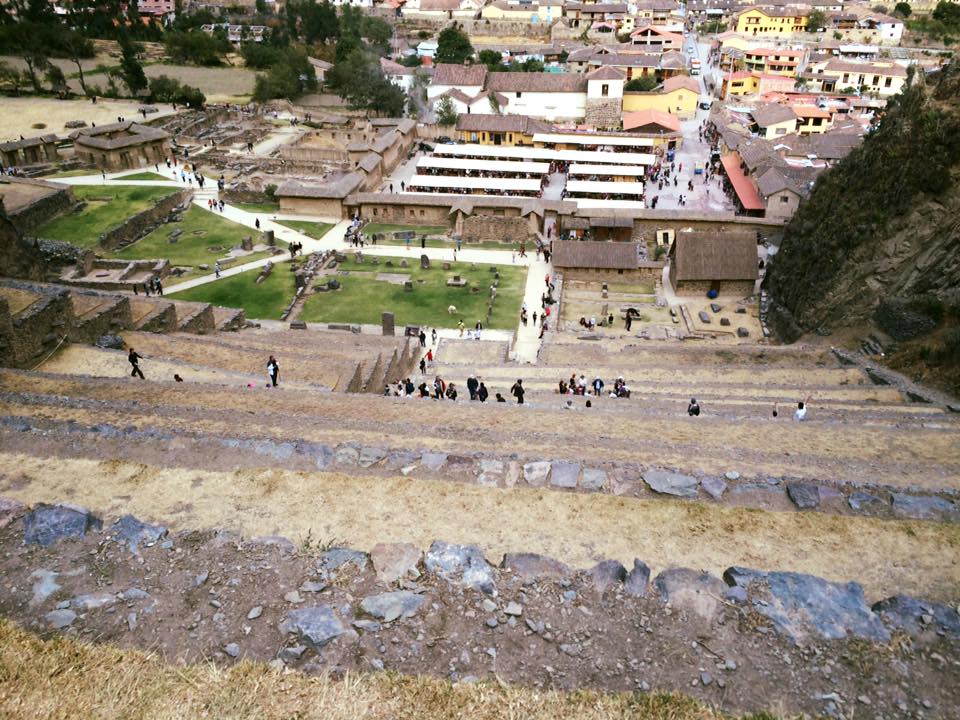
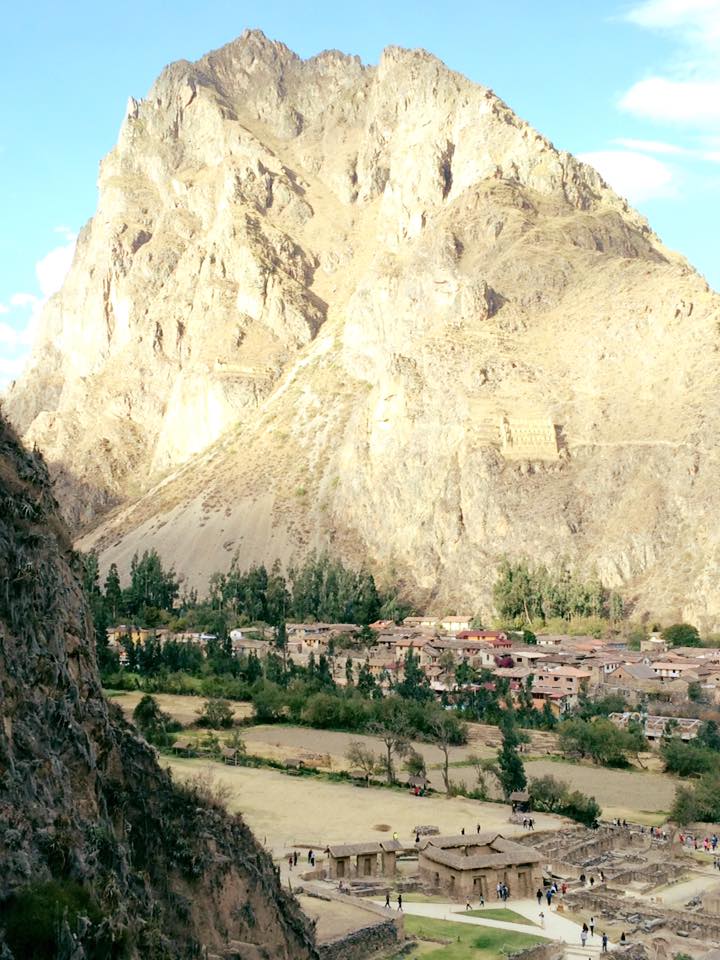
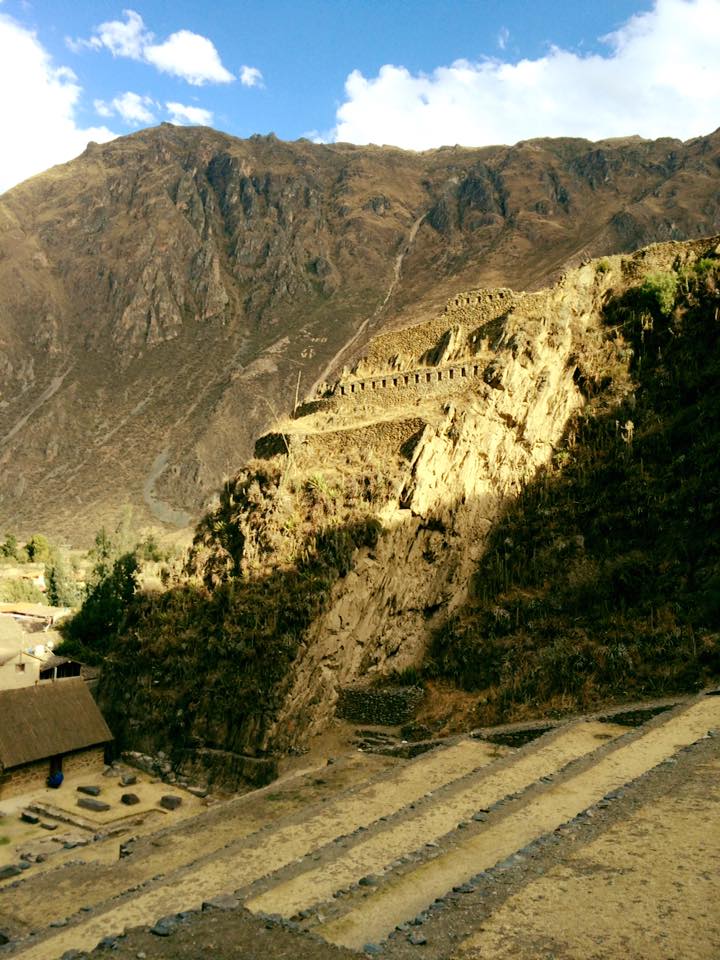
At the top, you reach the sun gate.
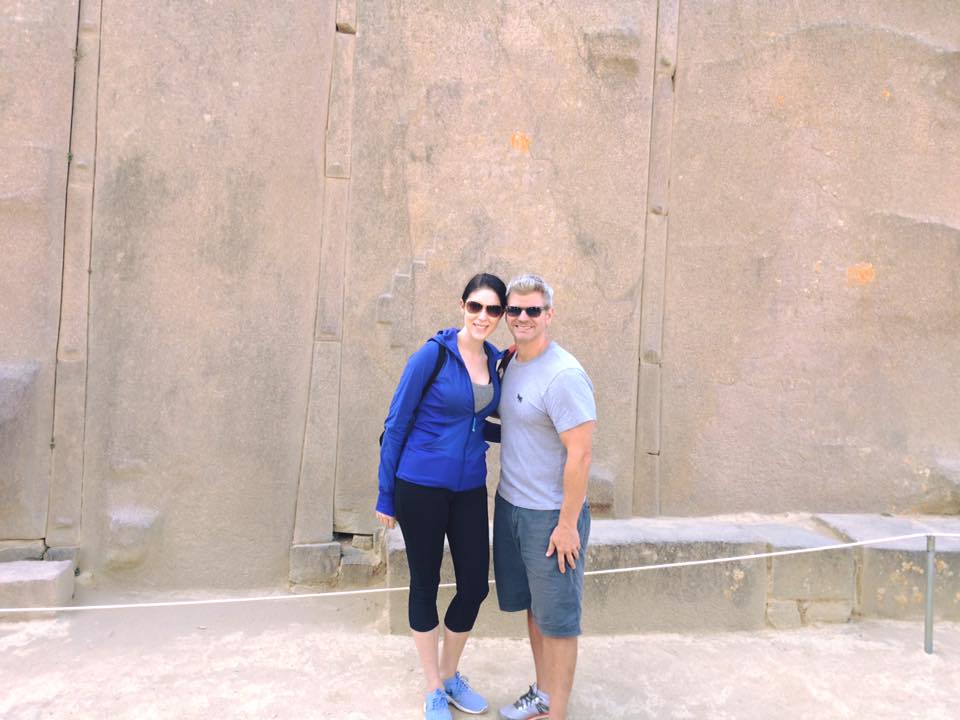
If you don’t want to climb, there are other parts of the site that you can visit at the base level.
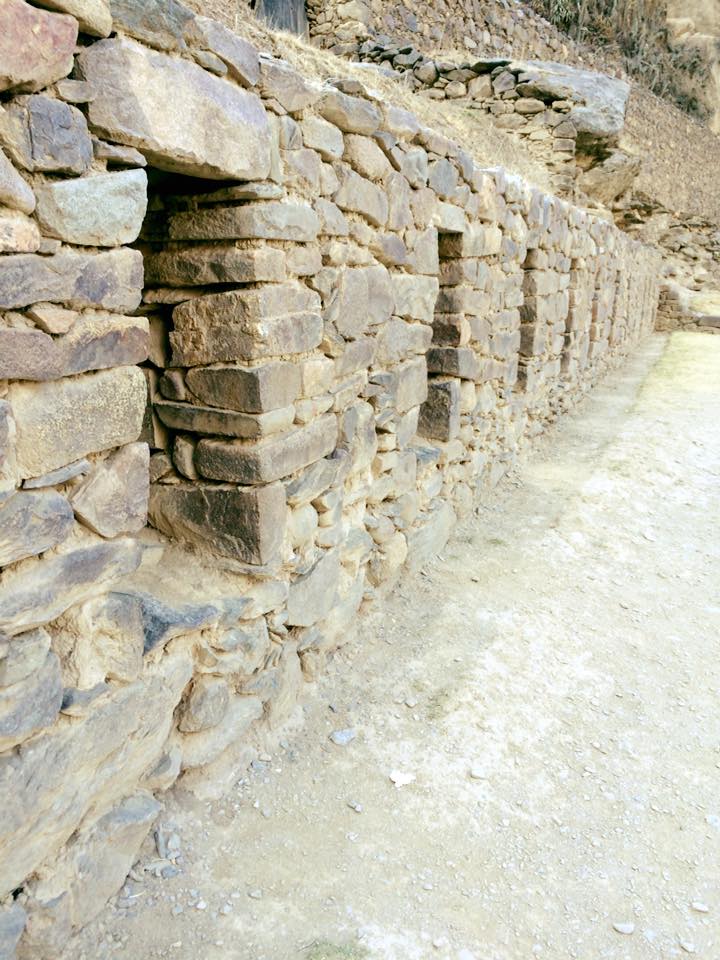
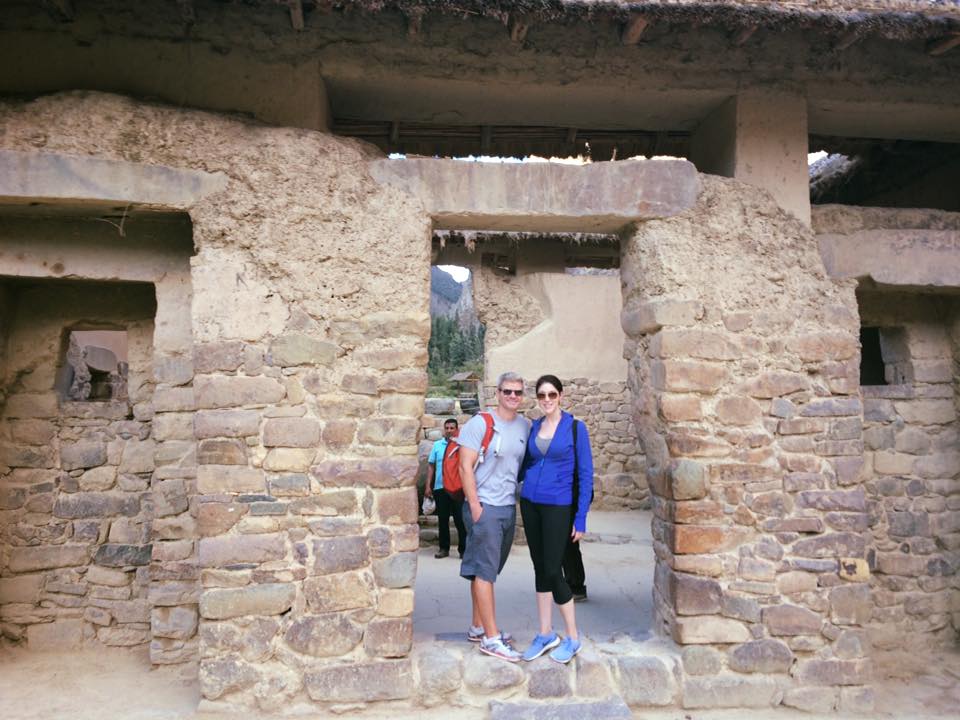
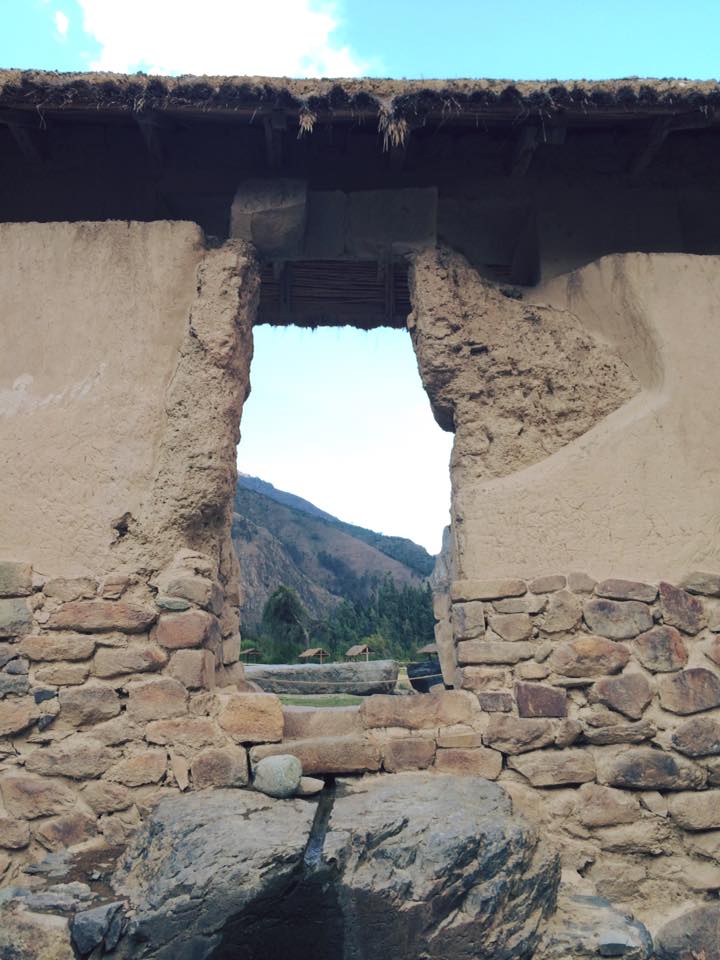
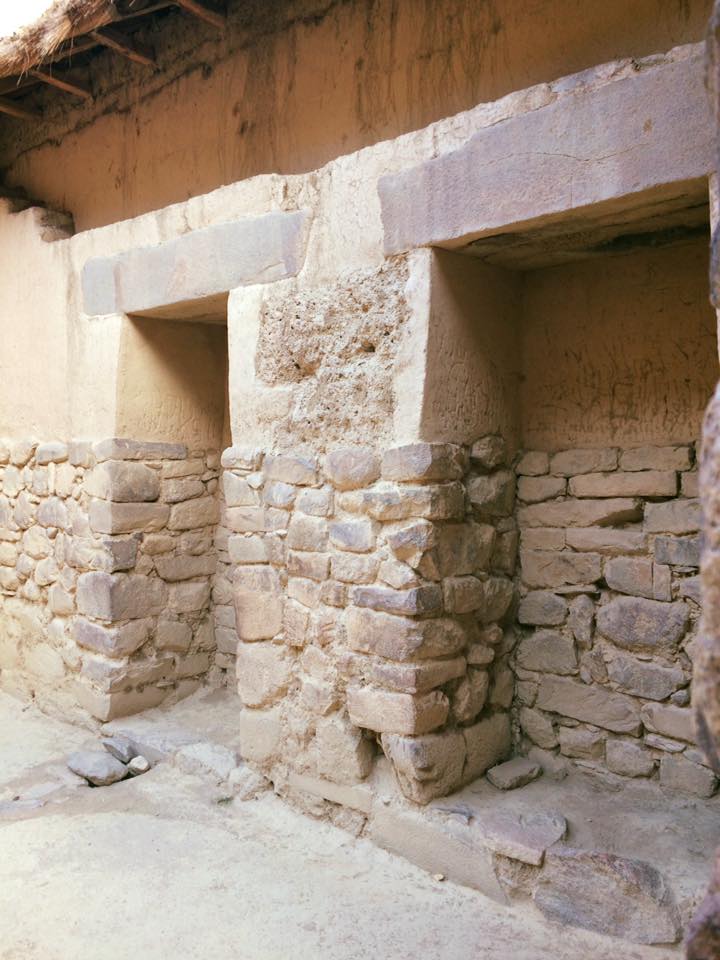
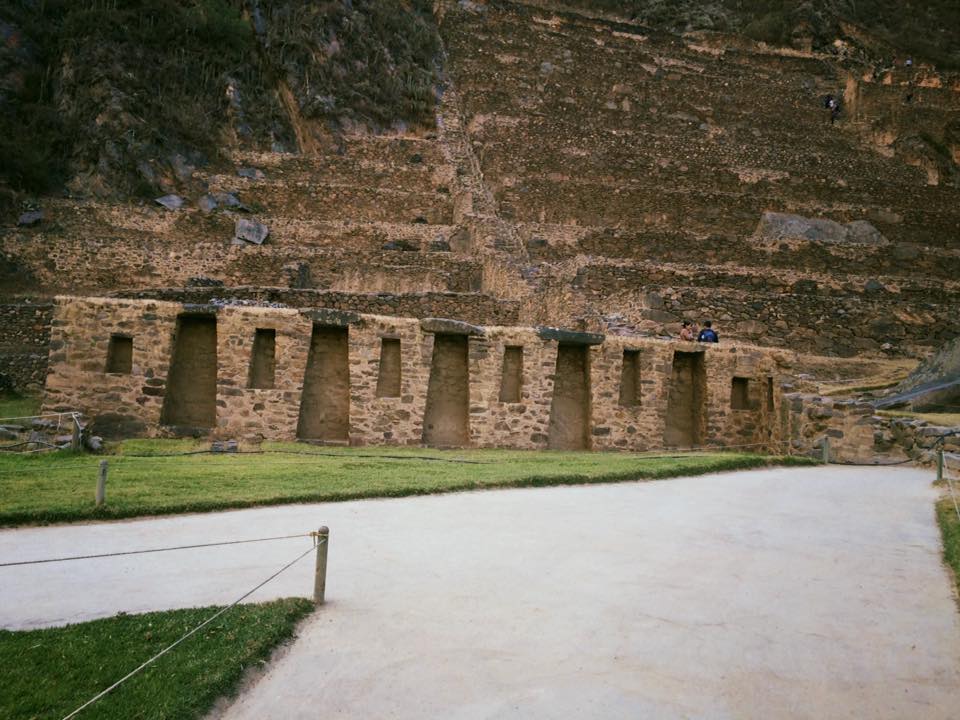
And there are cute baby alpacas too!
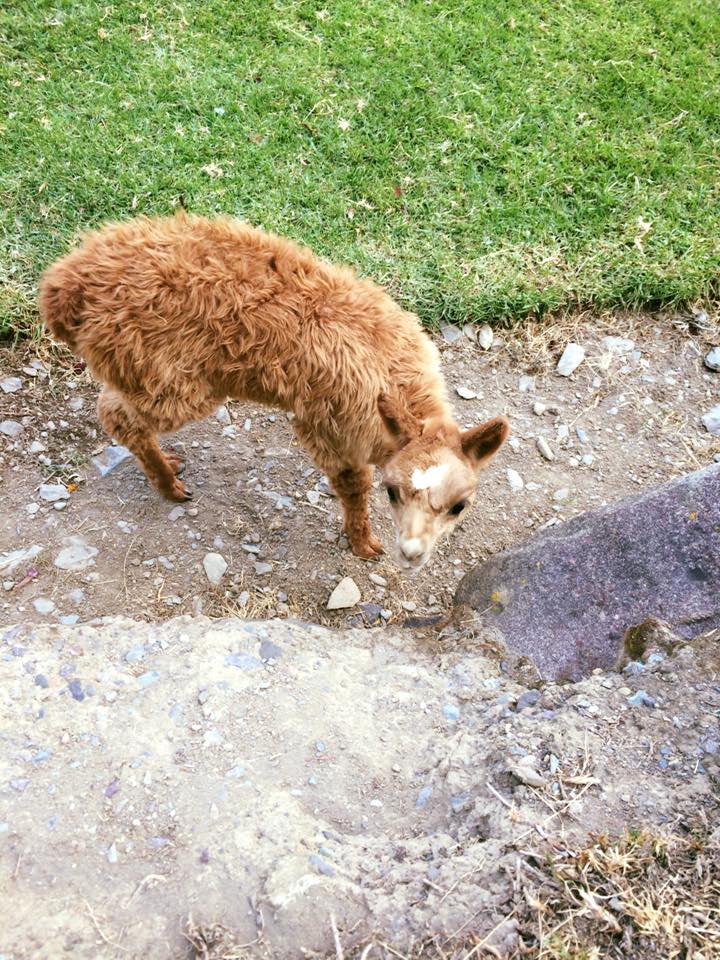
Well, that was it for Day 2!
Days 3-4
On Day 3, we finally made it to Aguas Calientes via the train at Ollantaytambo to visit Machu Picchu. This warrants a post all on its own, which I have linked here as well. But, I will leave you with a little teaser:
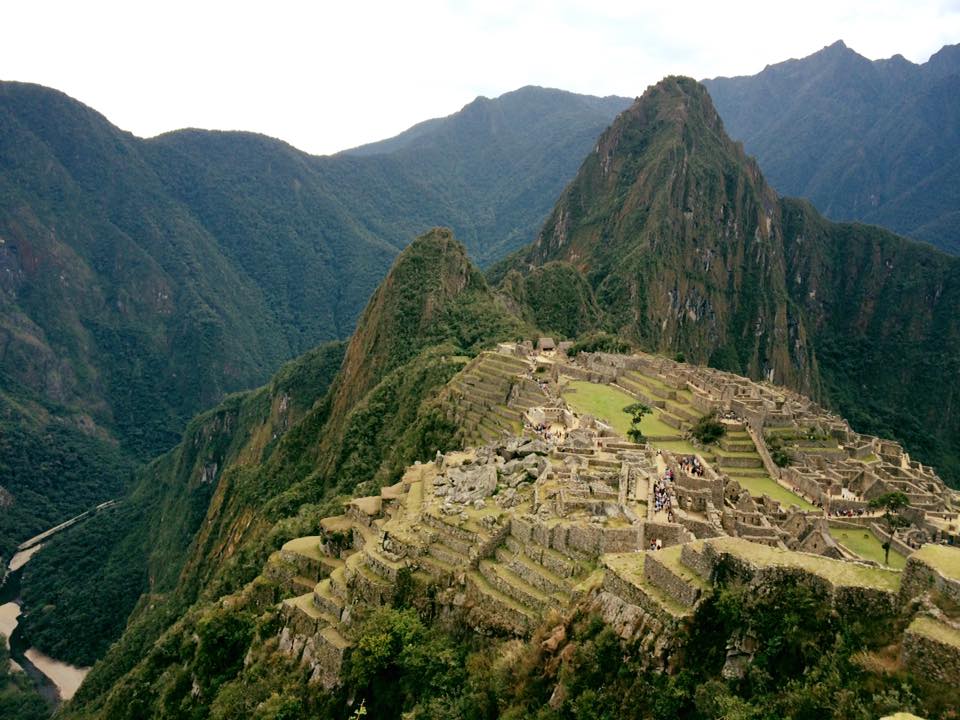
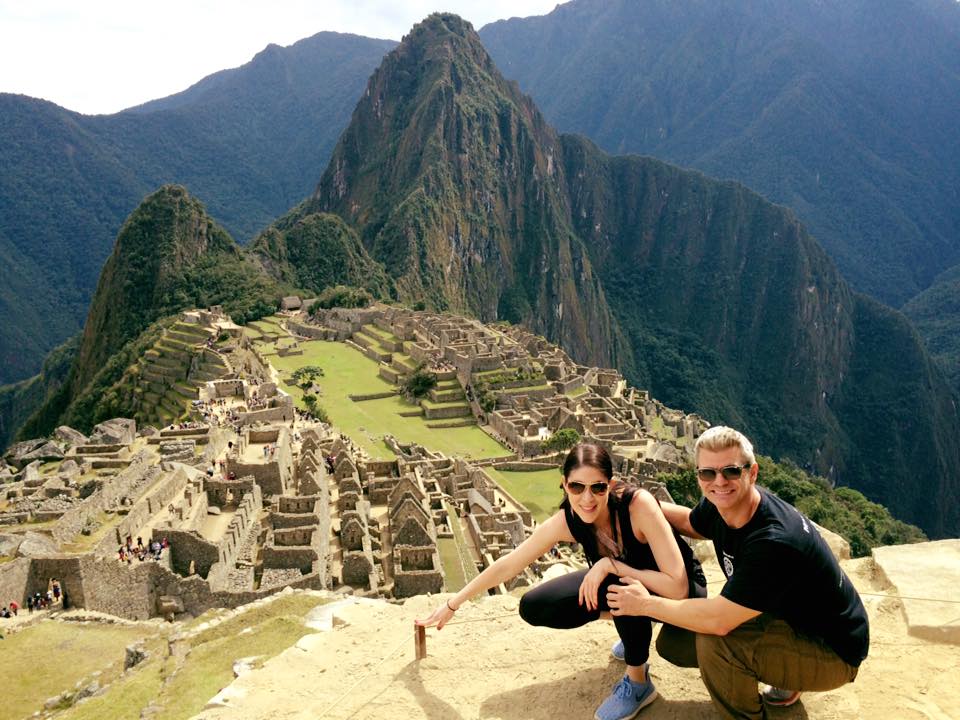
Day 5
On Day 5, we left Aguas Calientes and returned to Cusco. By now we were fully acclimated as we had been going up and down in elevation since we first arrived to Cusco. Upon arrival, we checked into El Mercardo, which is a funky marketplace-inspired boutique hotel.
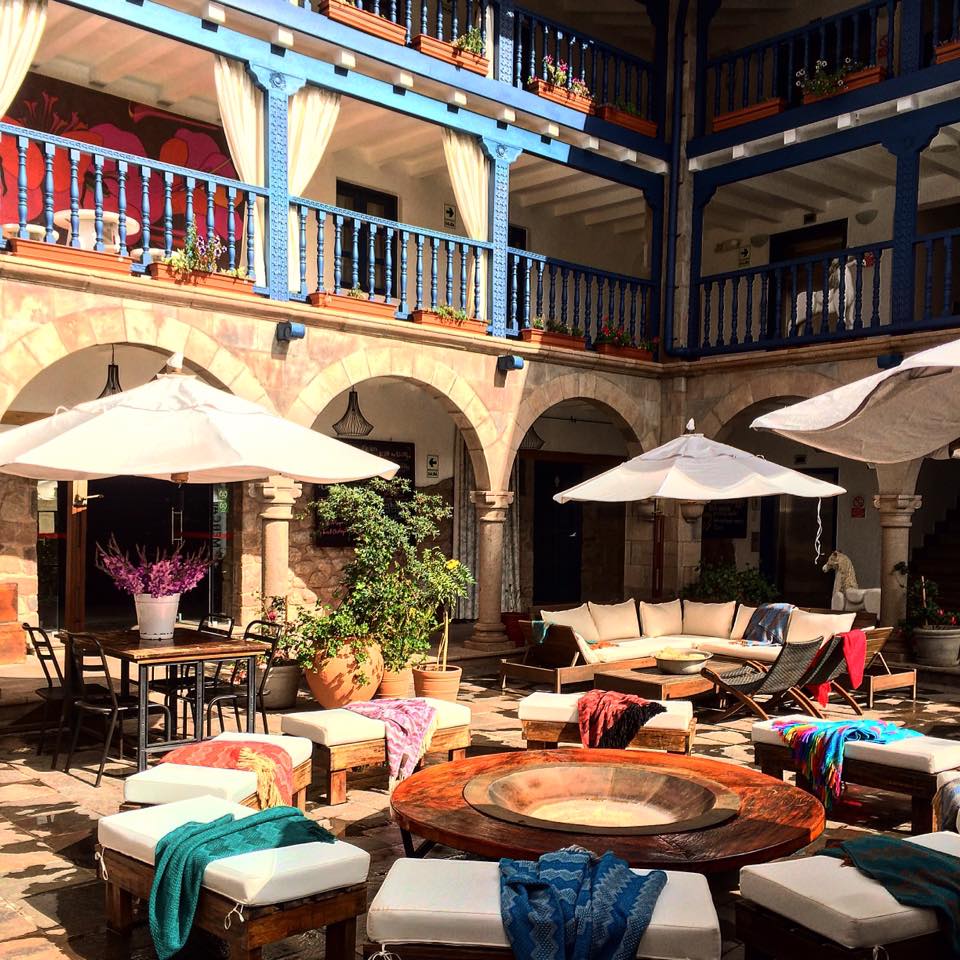
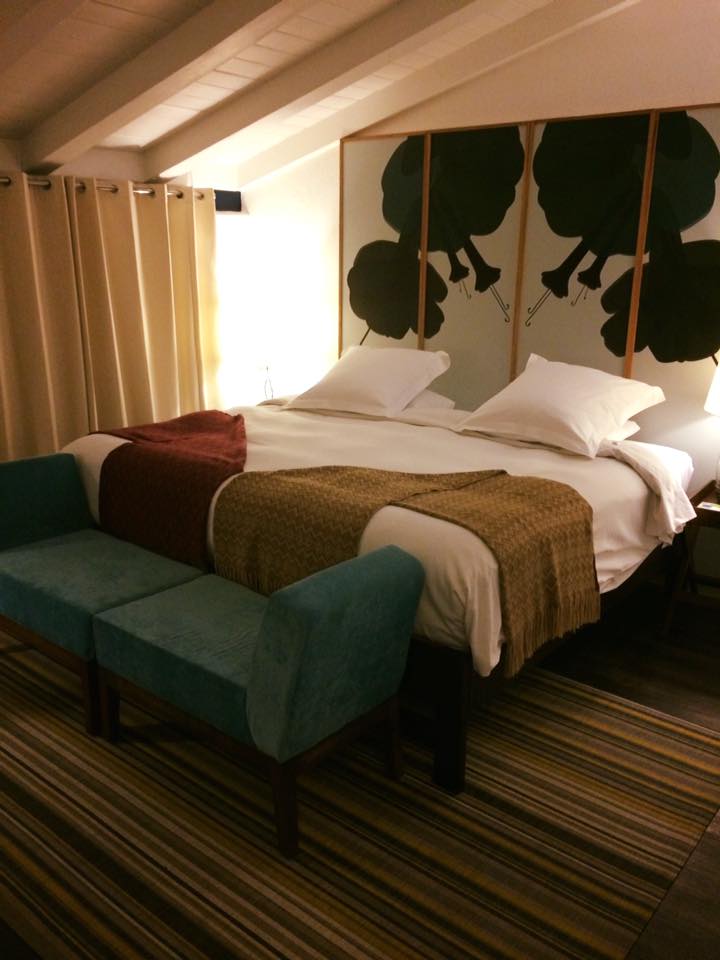
I don’t know why the property had random adult-sized rocking horses in the corridors, but I’m glad it did.
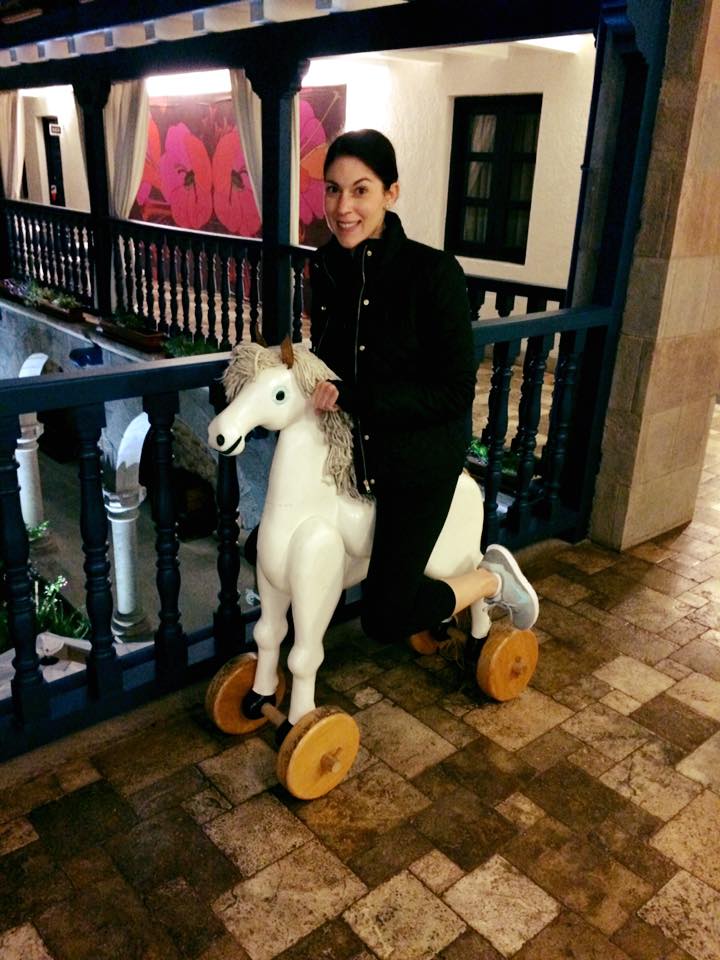
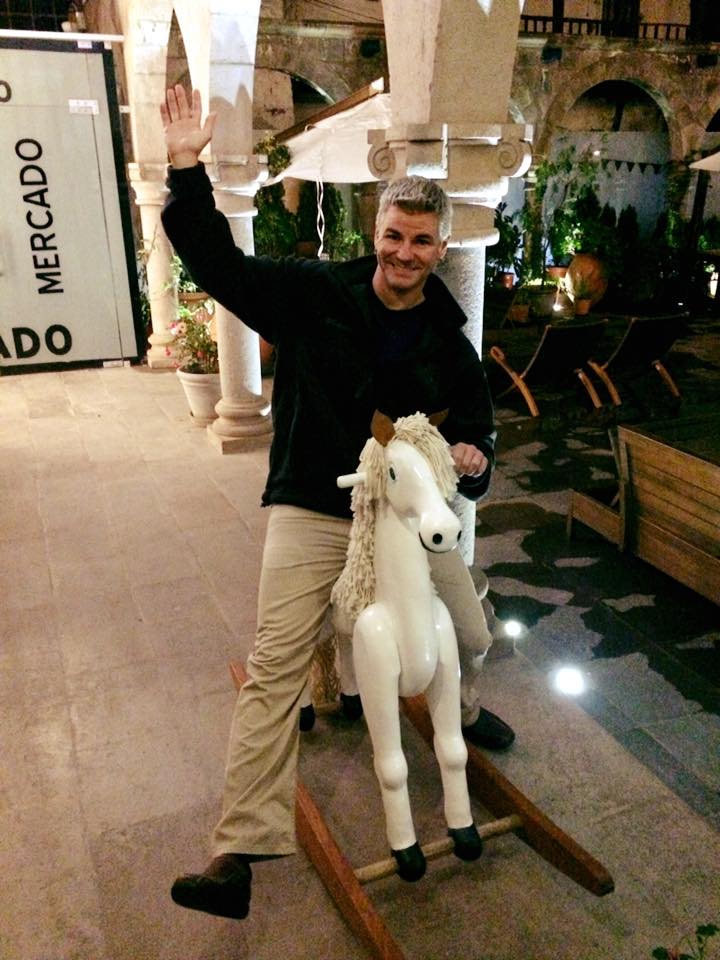
We only gave ourselves one day to explore Cusco, and this was a mistake. You should allow two full days here to do the surrounding sites and the sites in the city center, so we had a very busy day before catching our flight to Lima to connect to our international flight home.
We started by visiting the fortress of Saqsawaman, the ruling palace of the Incas.
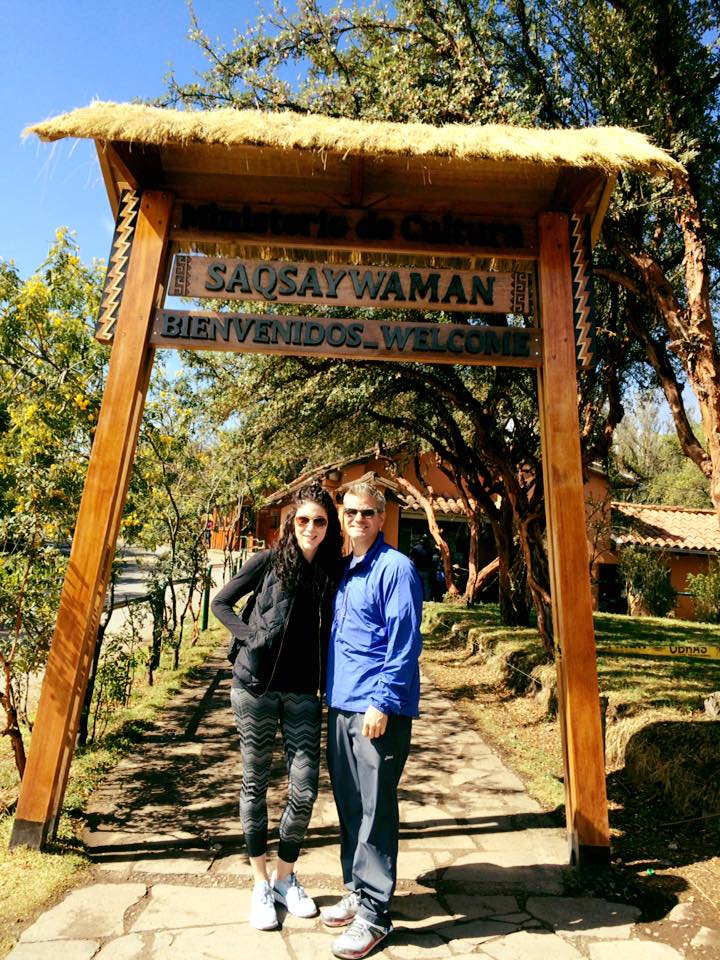
Unfortunately, this site is probably best viewed aerially to see the amazing zig zag pattern of the rock walls.

Just so you have an idea of how tall the walls are, Chad and I are both 5’10.
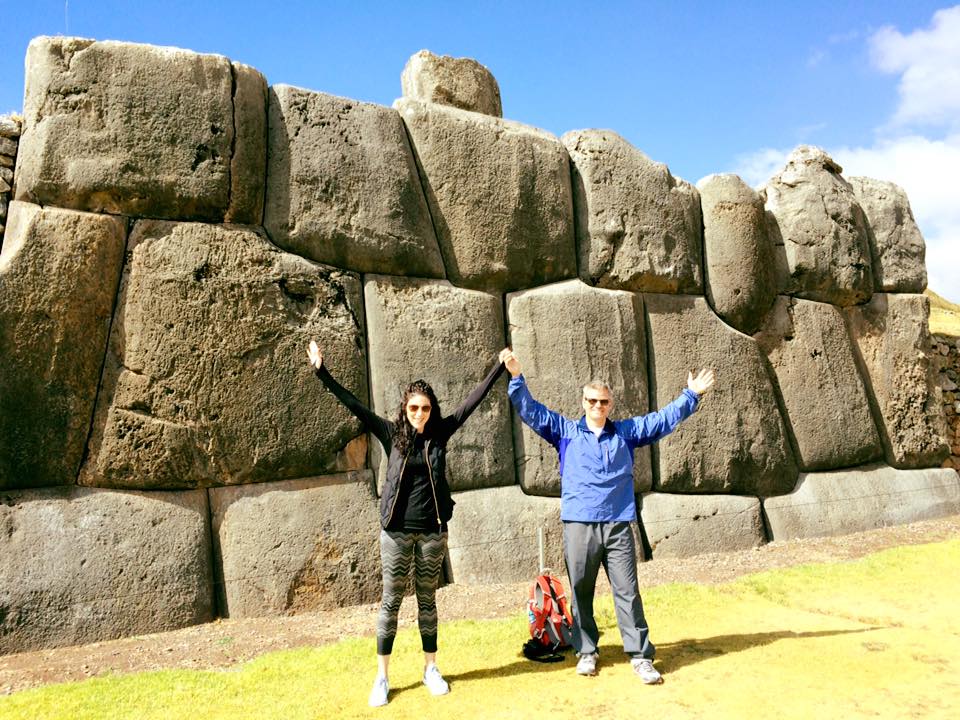
You can climb into the complex and get a view from there.
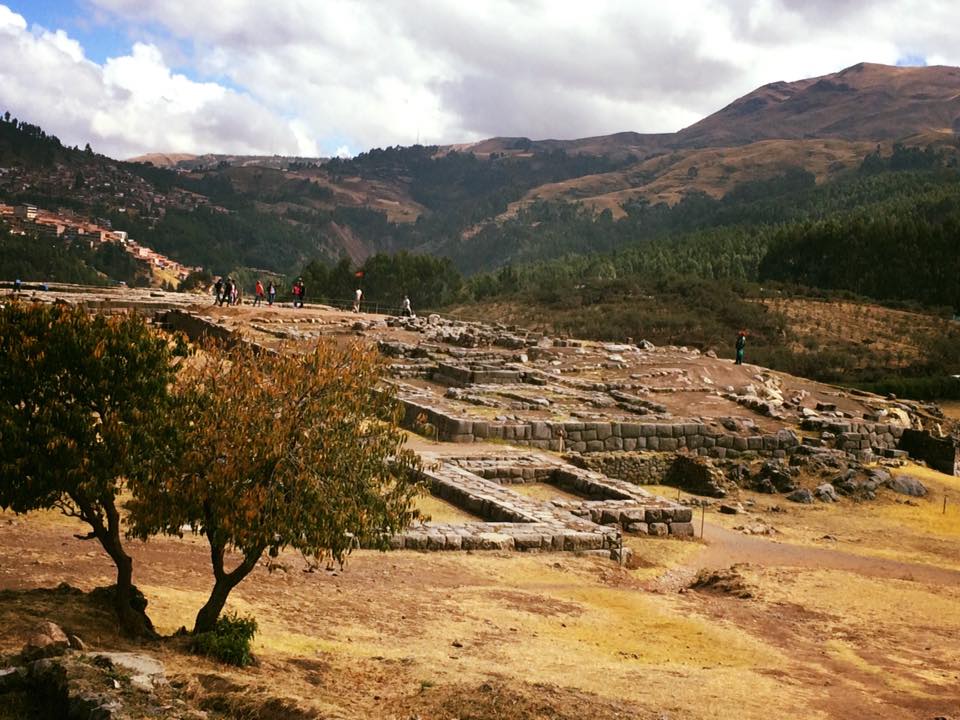
You can also get a great view of the city of Cusco.
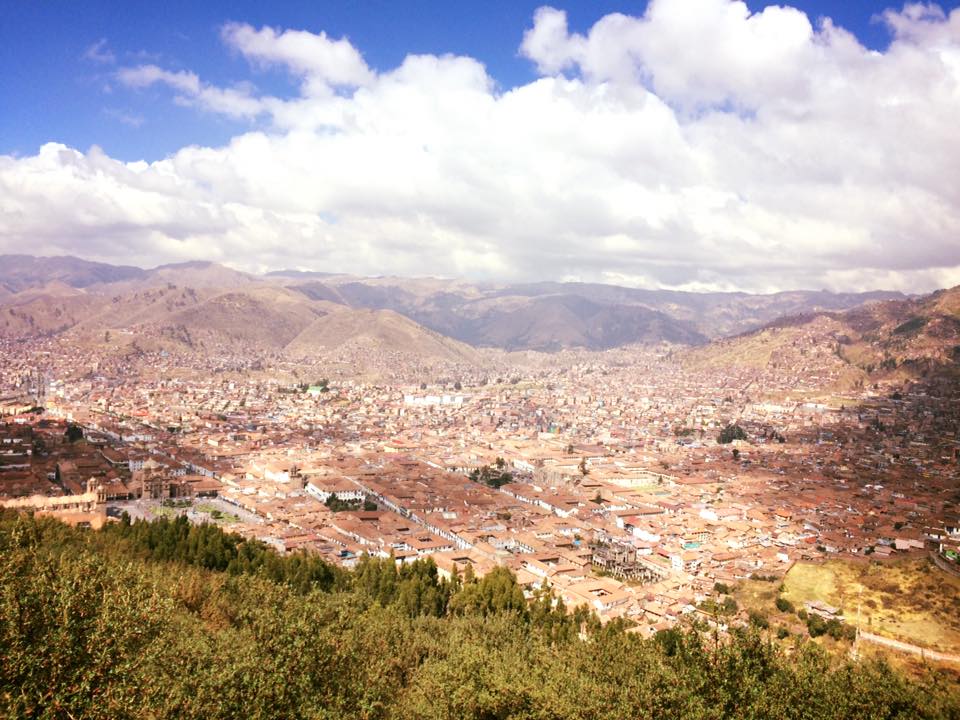
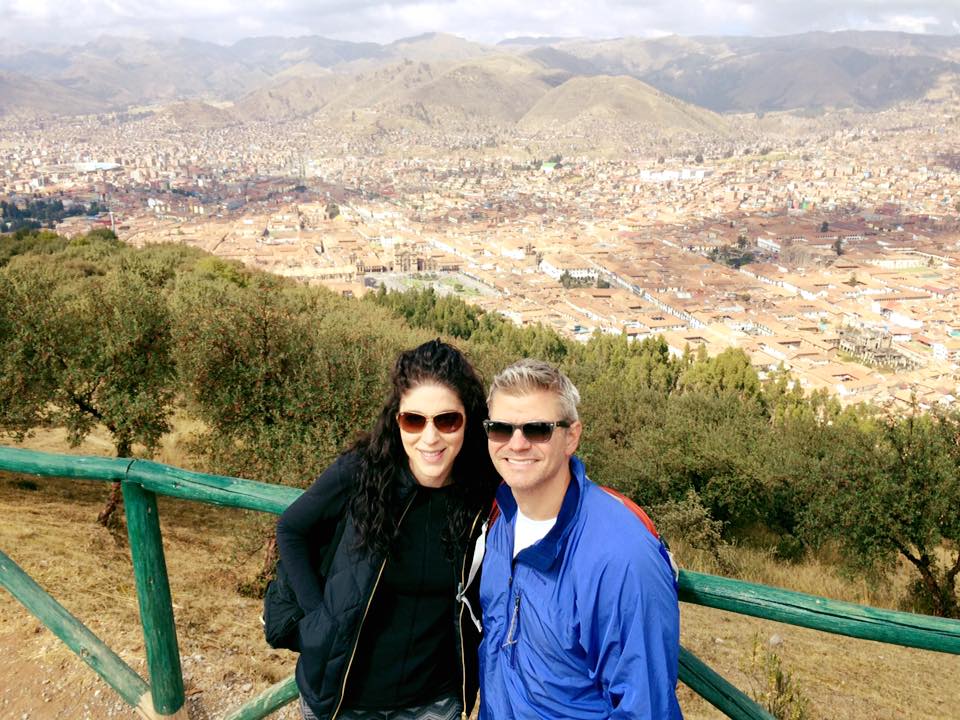
The stone work is incredible (there’s no mortar in those joints people, just perfectly chiseled giant rocks!) especially considering that it is zig-zagging.
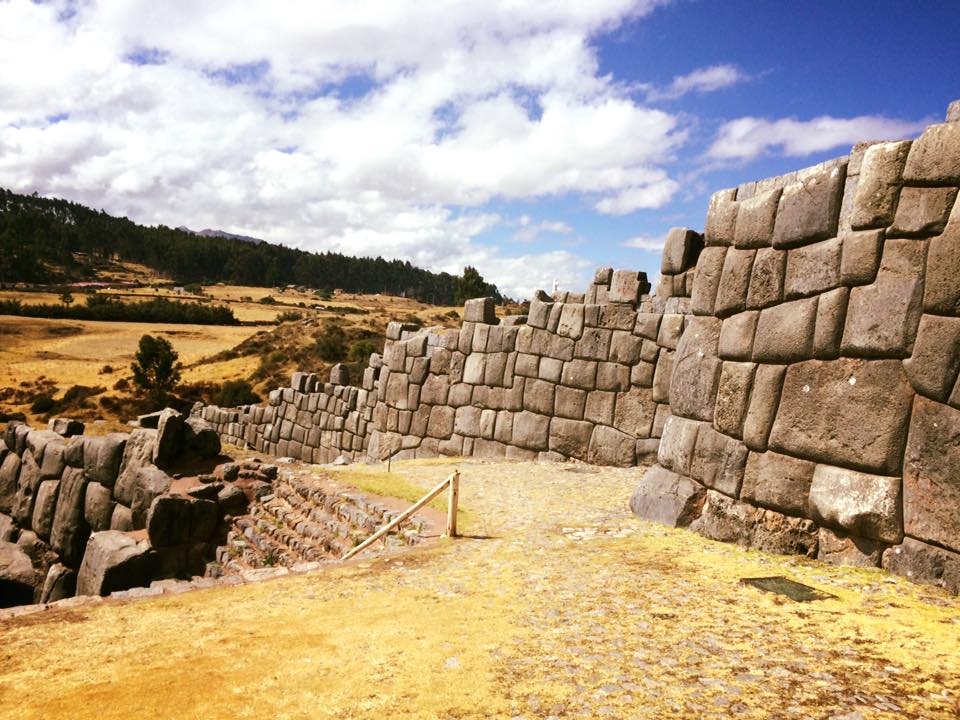
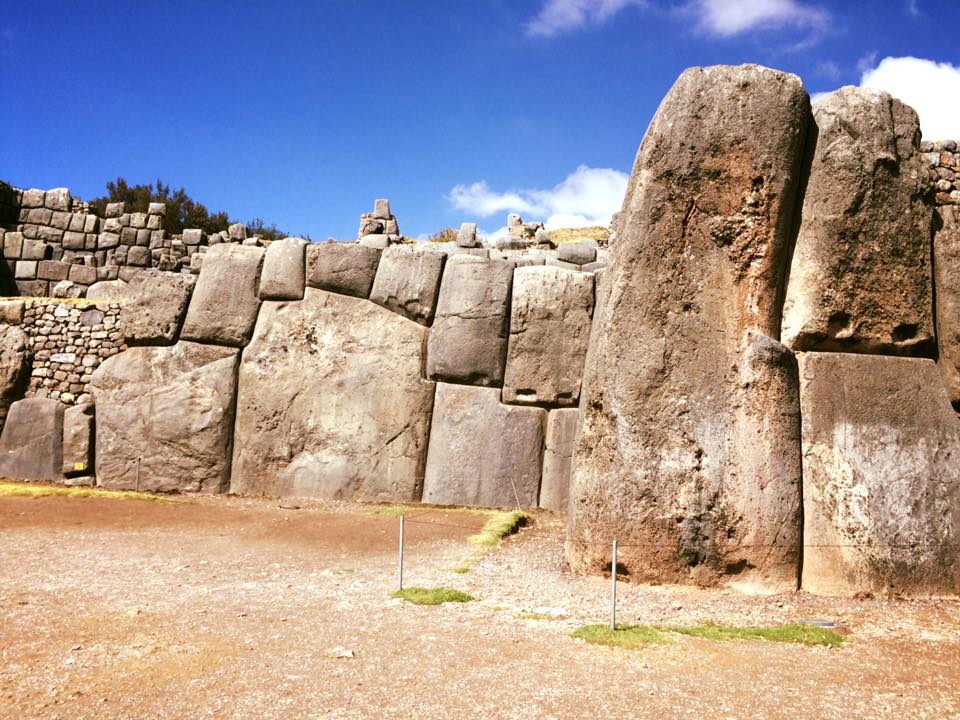
There are even some solid pieces of rock that are curved!
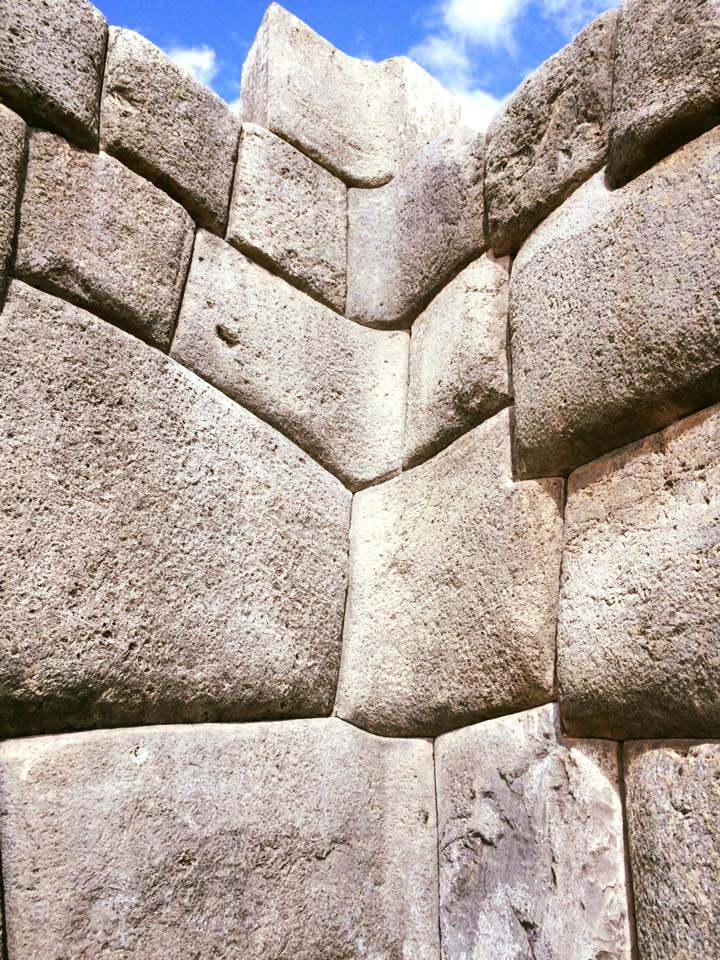
This was the main gate in:
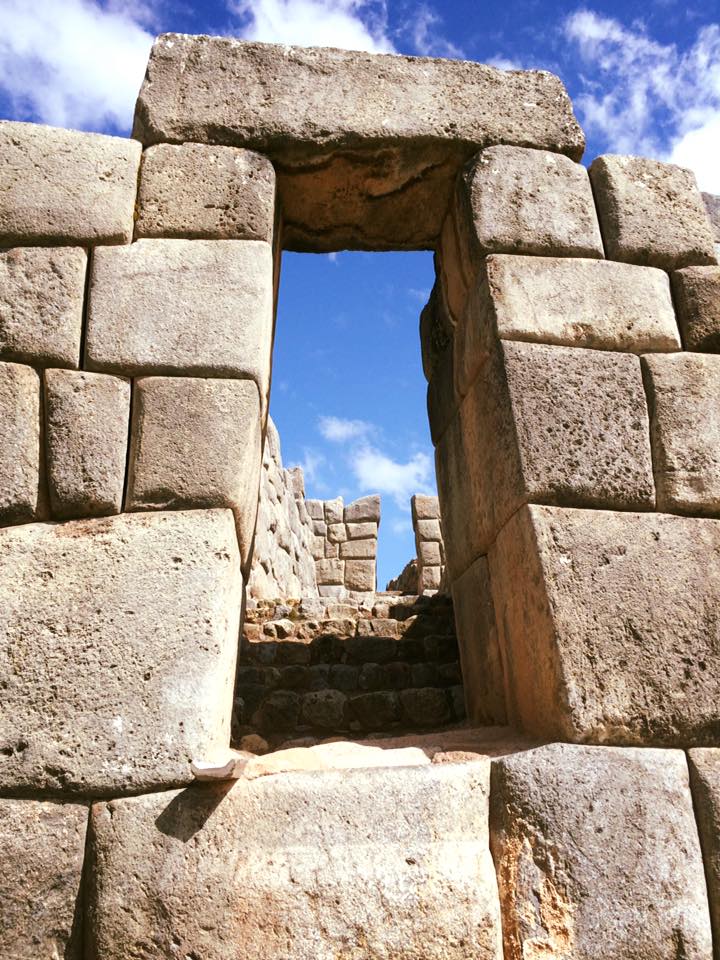
Cusco also has a large white Jesus statute (a smaller version of the more famous one in Rio de Janeiro, Brazil), and its claim to fame is that it is the highest elevation Jesus!
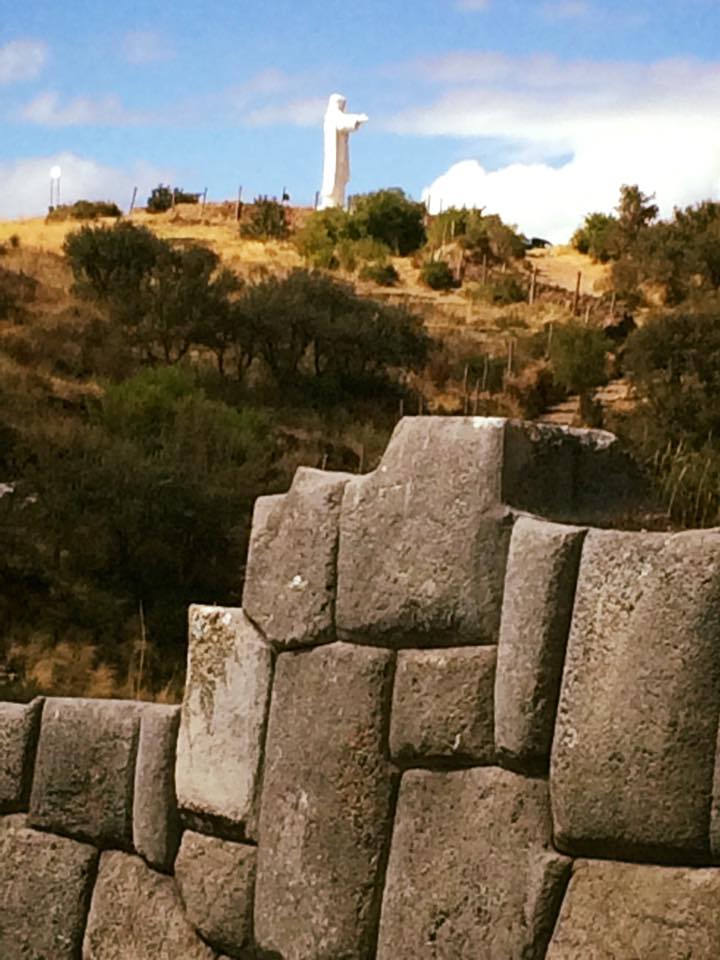
This is the giant circular structure that you saw on the map, but you can’t really tell from the ground, and you aren’t allowed in it either.
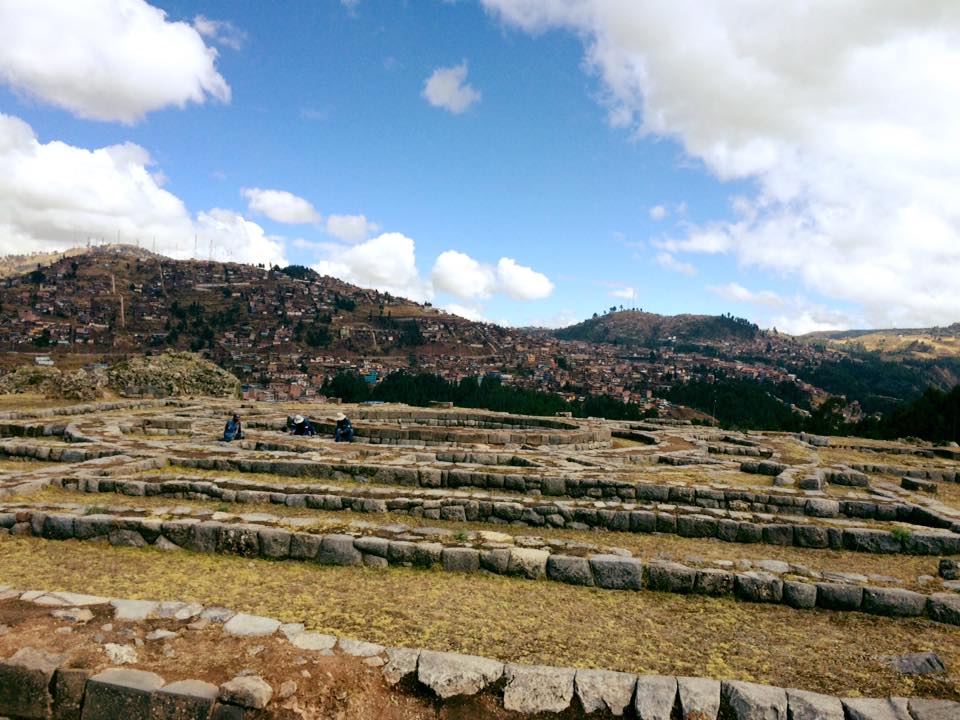
Up next, we visited Tambomachay. It is uncertain what the purpose of this site is, but there are tombs there that were likely used during important holiday for the Inca, and the Inca Trail from Cusco starts there.
It is a pretty steep walk up, and the elevation is higher than Cusco but lower than Chinchero.
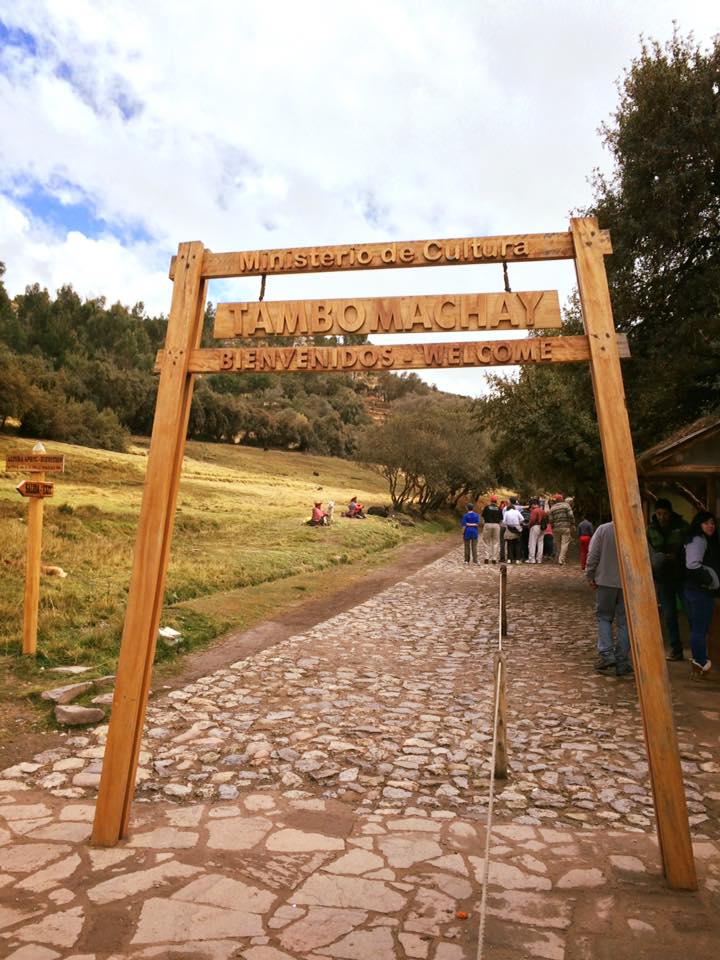
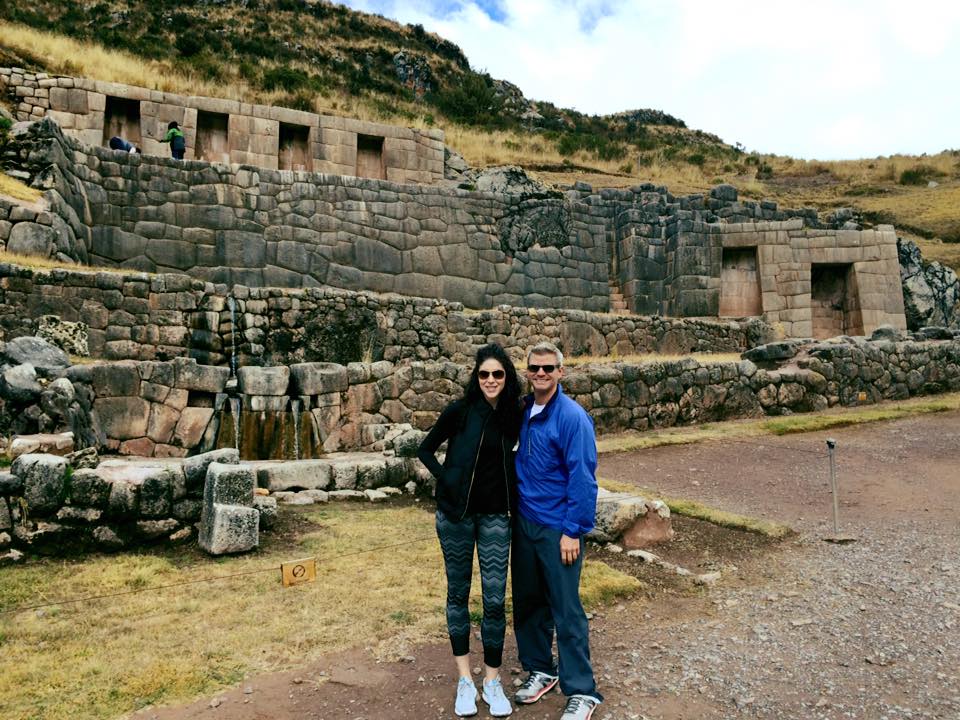
From there, we headed to Puka Pukara, which is a site of military ruins from the Inca Empire.
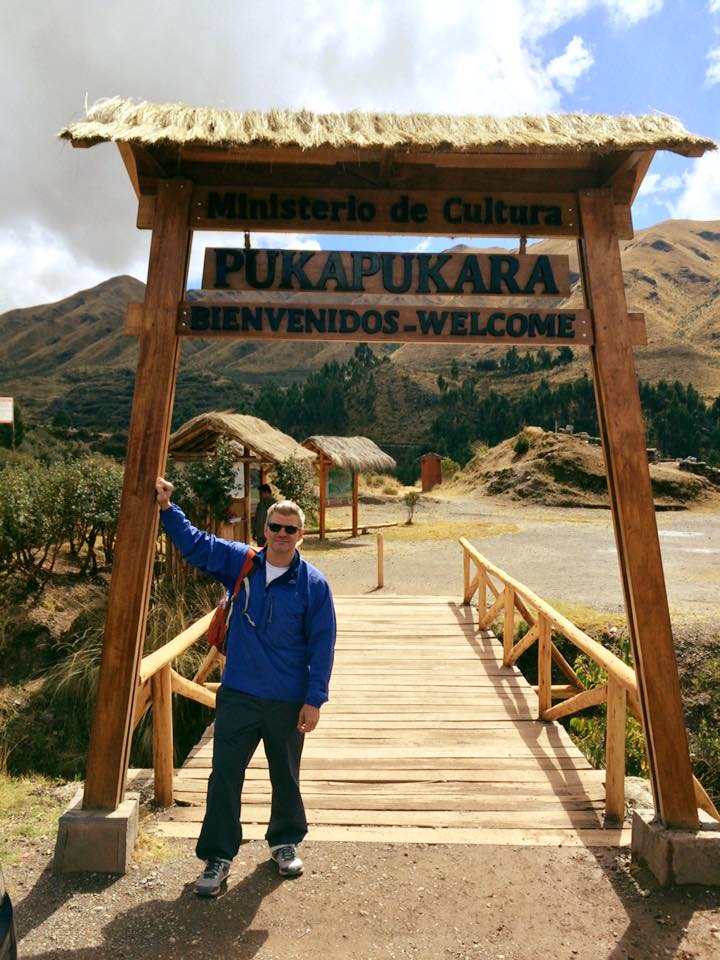
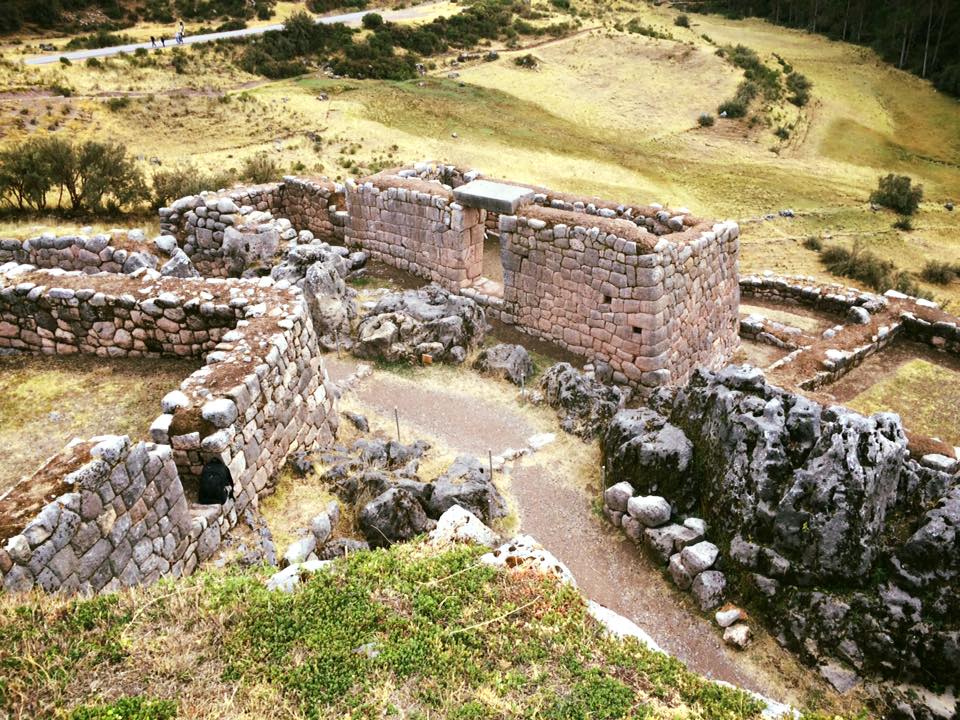
You can get a great view of the valley from here and even see parts of the Inca Trail.

Our next stop was Q’enko, which is one of the largest holy places in the Cusco region. It is called the temple of the moon, and it was believed to be a place where sacrifices and mummification took place.
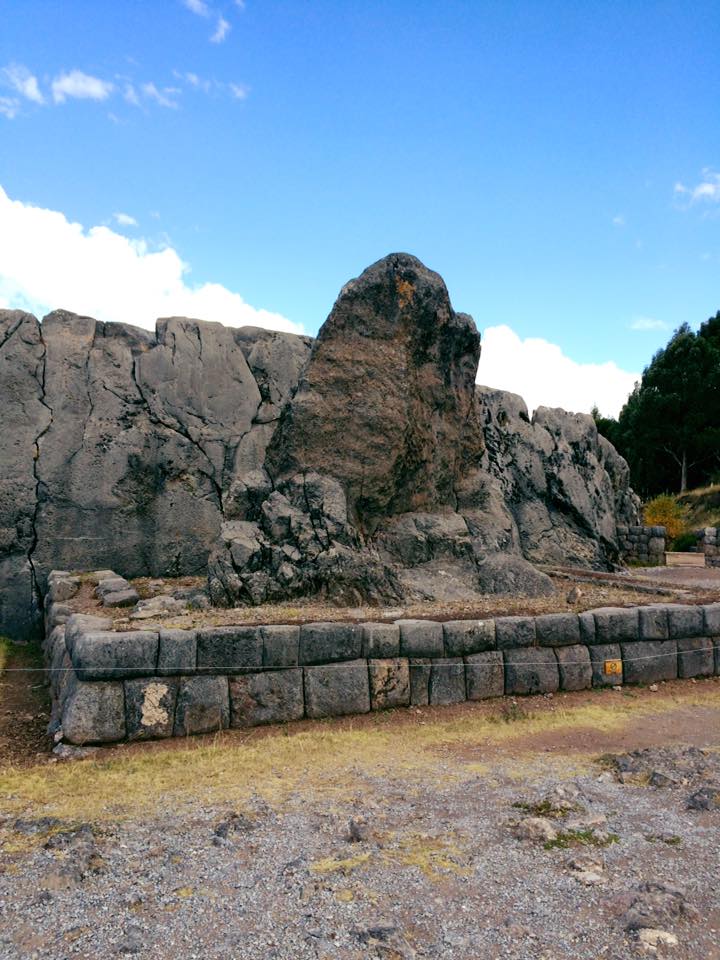
You use very narrow tunnels to get through the site.
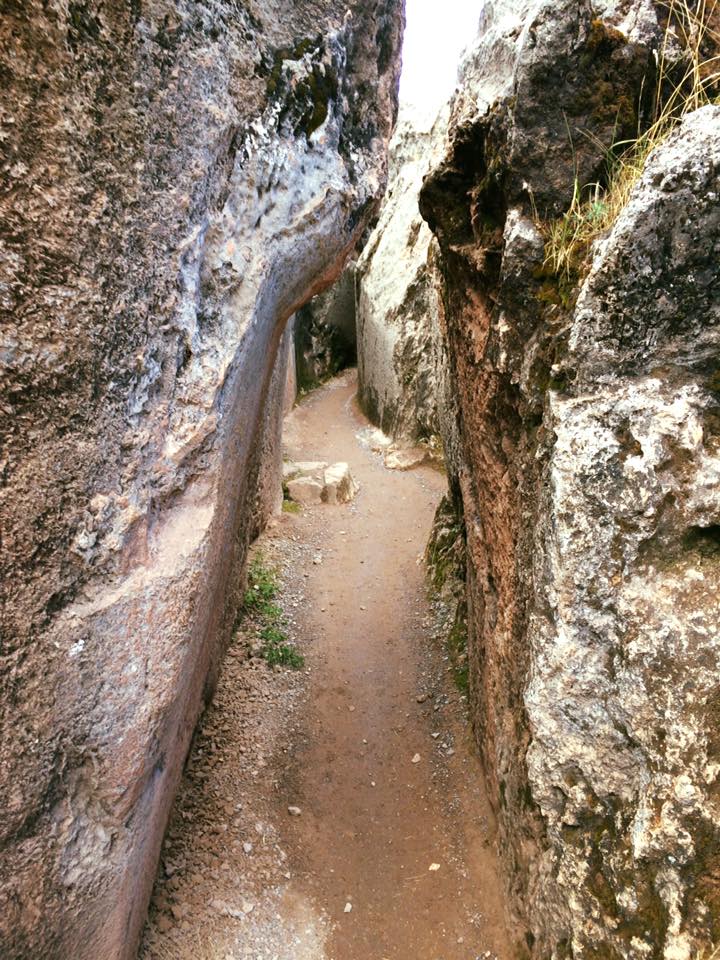
This is where it is believed that mummification took place:

We then made our way back into the city center of Cusco to visit Qorikancha, the most important temple in the Inca Empire, dedicated primarily to the Sun God. When the Spanish came, they just built a church over it (well partially over it; more like adjacent to it), which still exists today, and it is massive! There is a black Jesus inside that church that has a pretty cool little story behind it. Apparently, because of the materials used to make the Jesus statute, over years of having candles burning next to it, the Jesus slowly turned black. The indigenous people thought that Jesus morphed to look more like them. They have tried several times to restore the statute, but cannot. It is also believed that the Jesus performs miracles because during some pretty bad floods, the church brought the Jesus out to the city square and prayed for the flooding to stop, and it did!
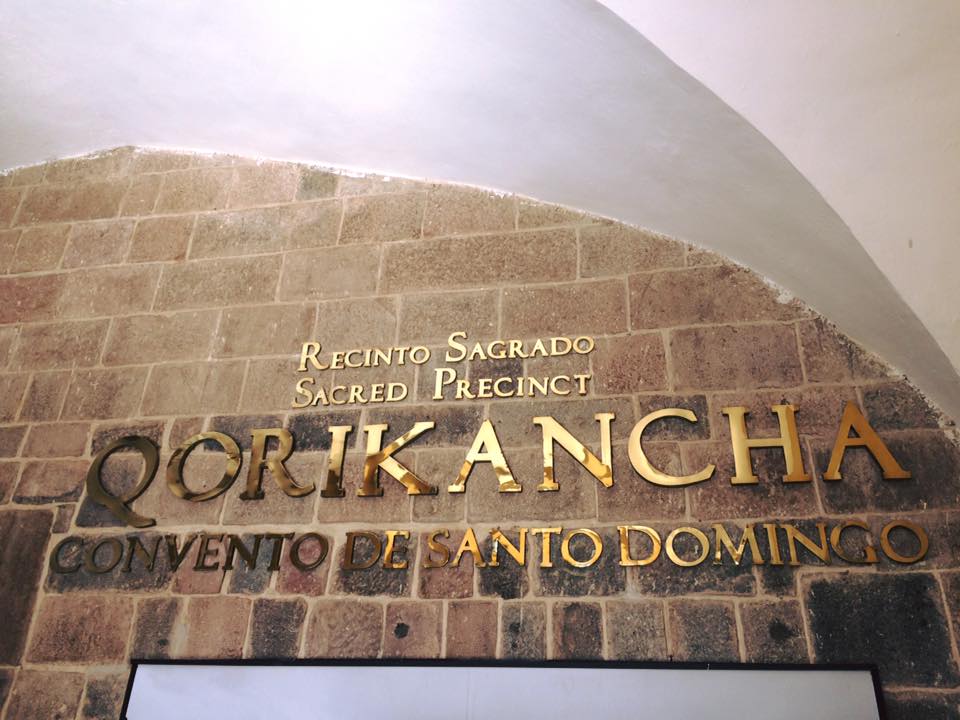
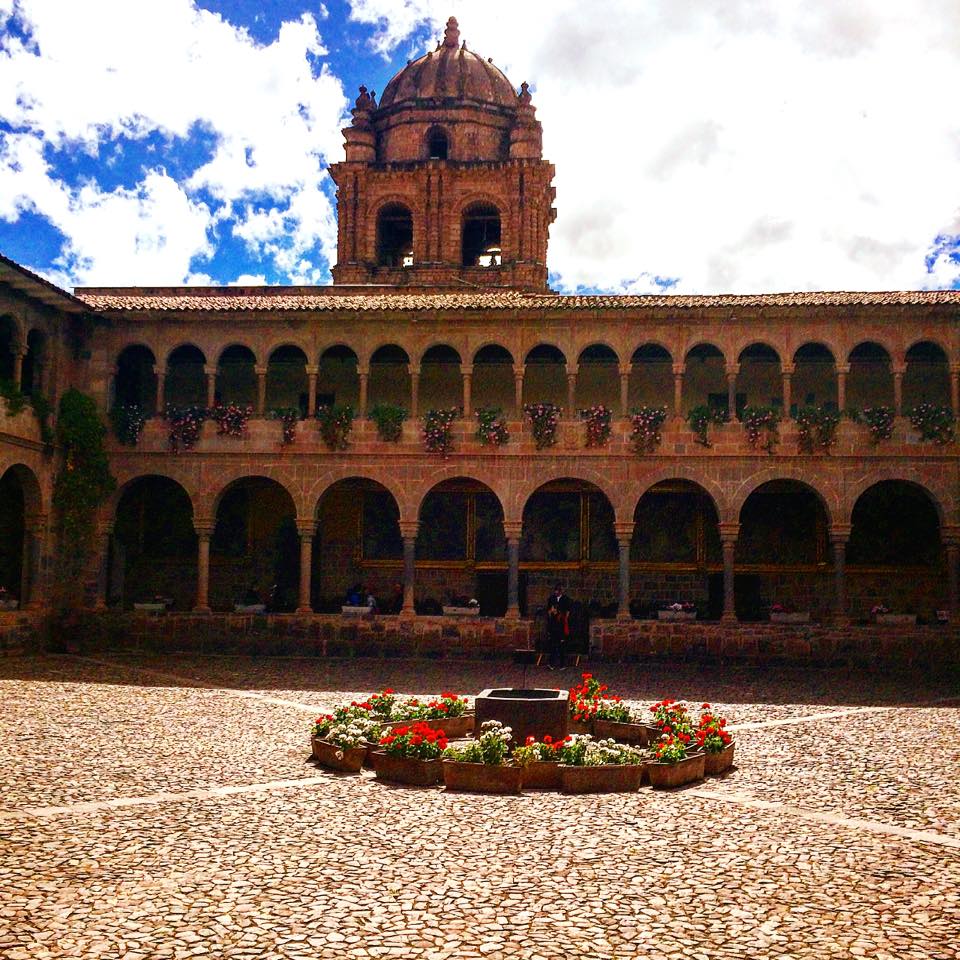
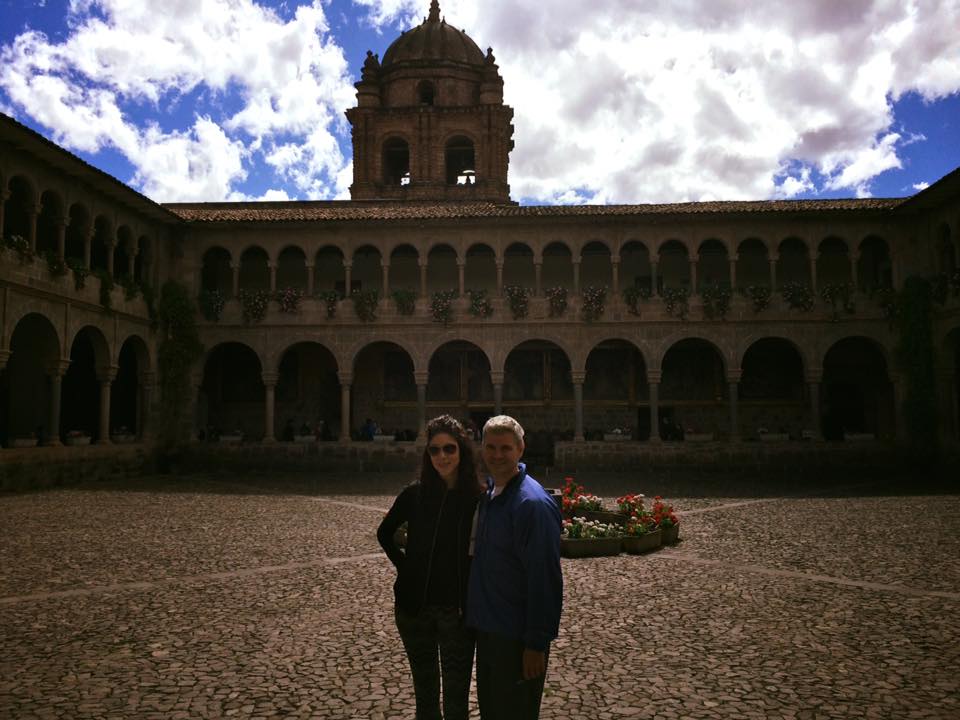
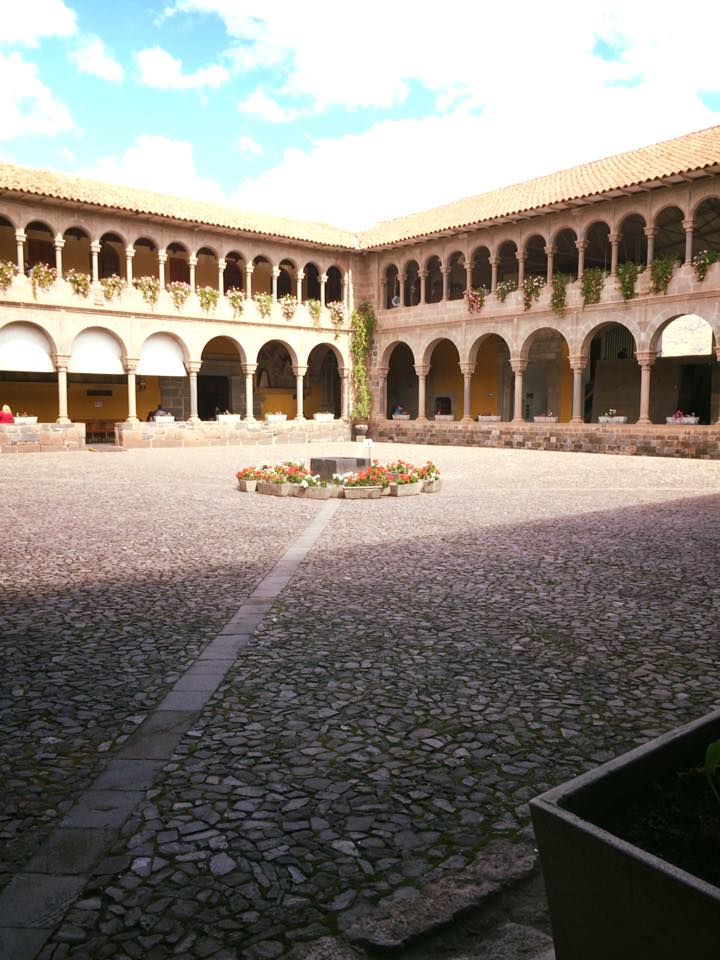
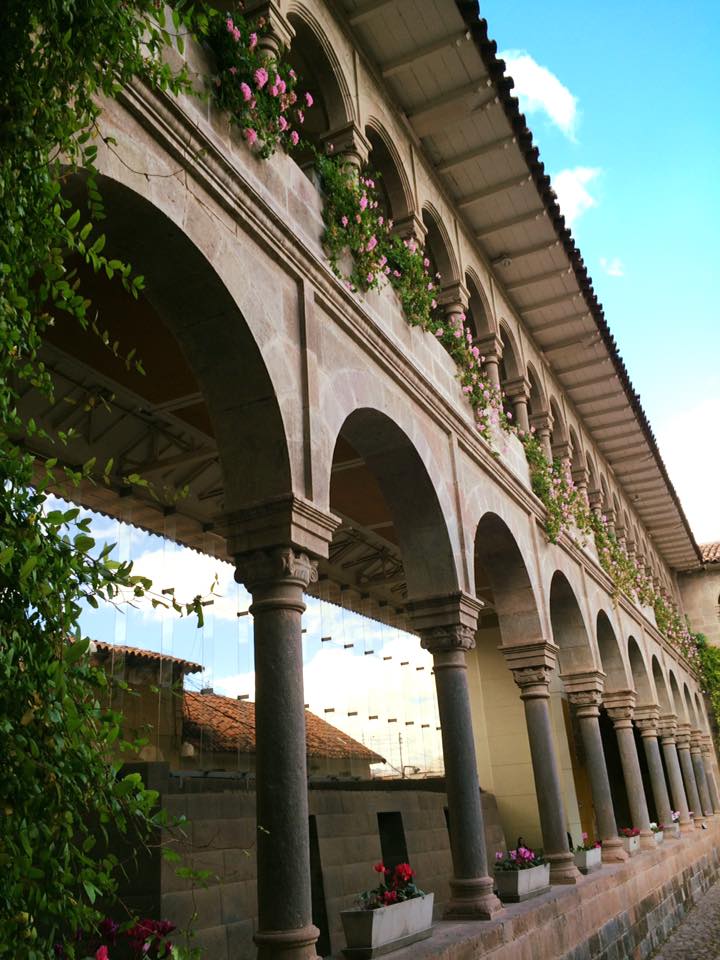
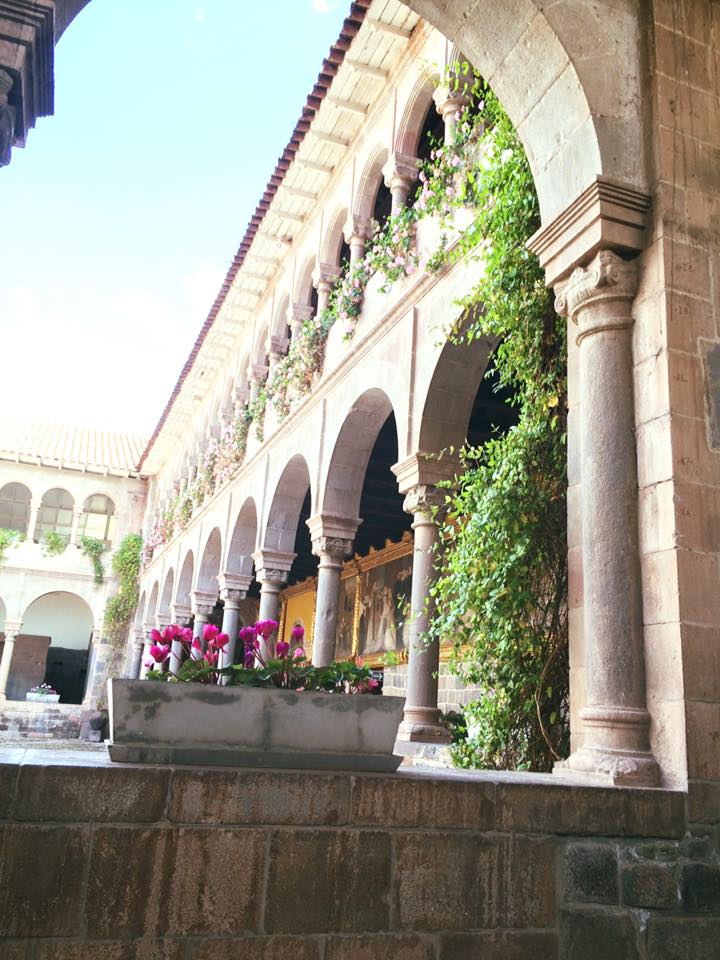
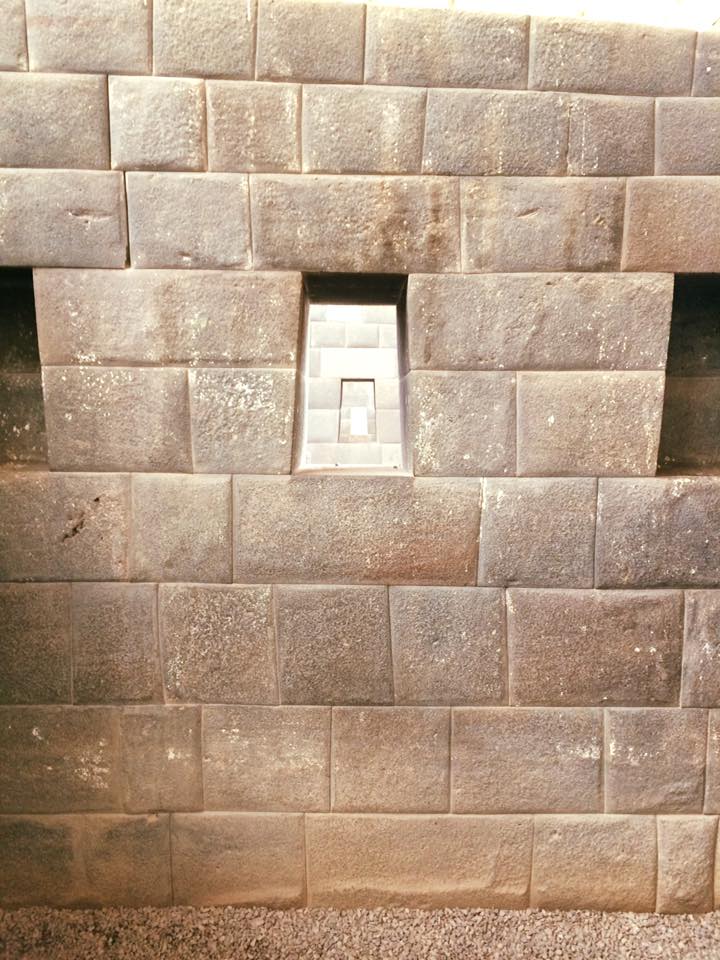
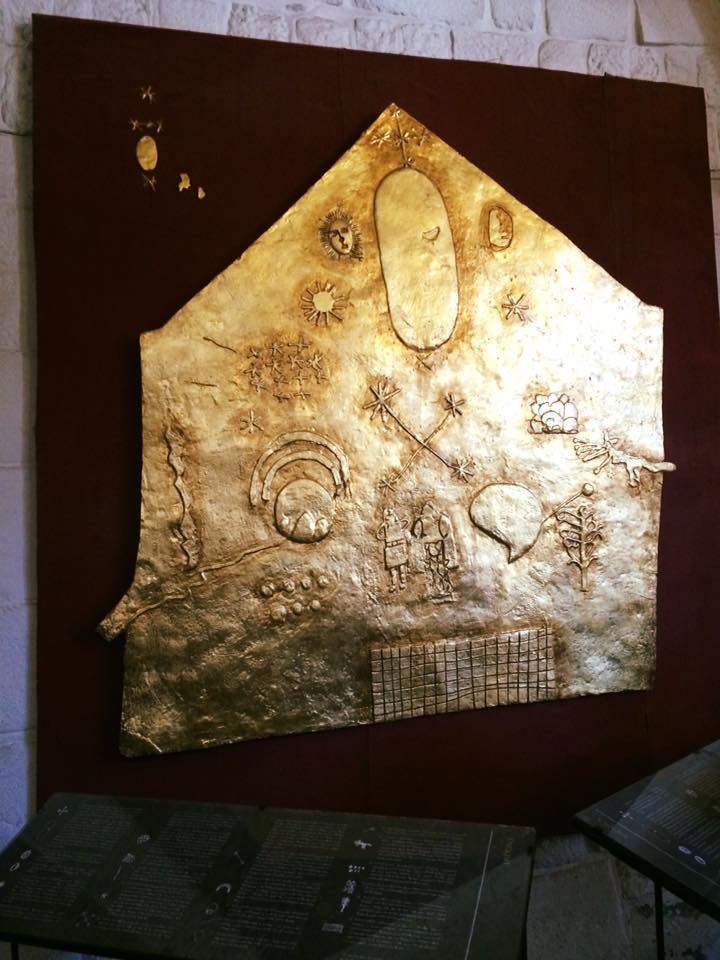
This is the temple of the sun:
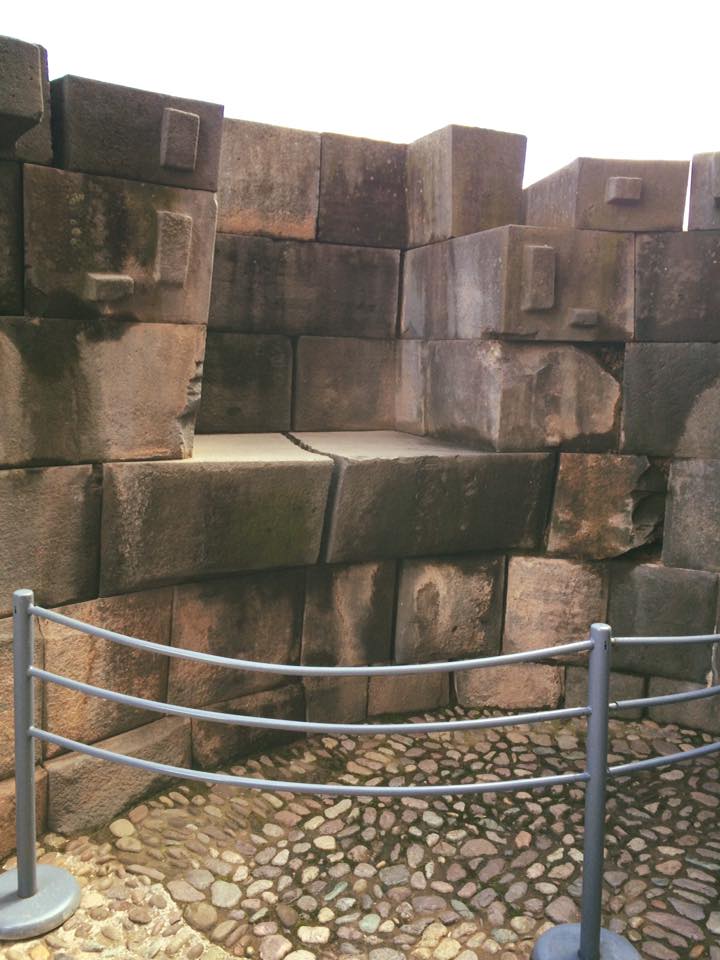
We ended our day in the city center of Cusco, where we had lunch at Limo, a fantastic restaurant owned by a group that owns many fantastic restaurants in Cusco and which had a great view of the center. We also visited the Machu Picchu museum, which is small, but tells the story of Hiram Bingham’s excavation of Machu Picchu.
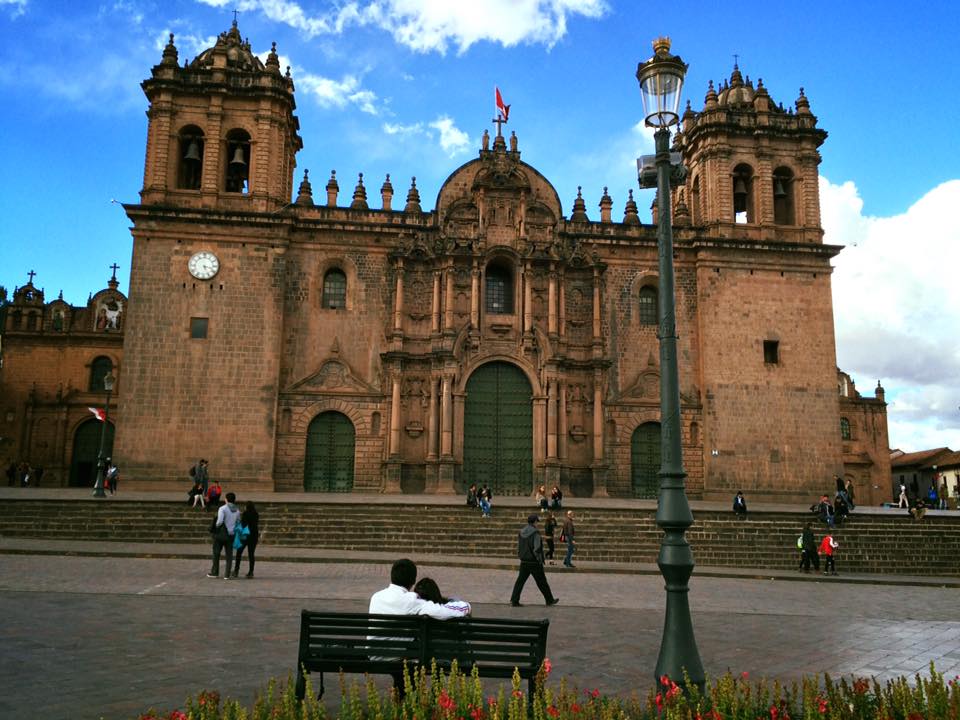
Limo is located to the left of this church above as you face the church. You have to walk through an almost hidden corridor before you reach an atrium that has a staircase that leads you to the restaurant. I wish I had food spotted our lunch because it was beautiful and amazing, but we were so hungry, we just dug right in!
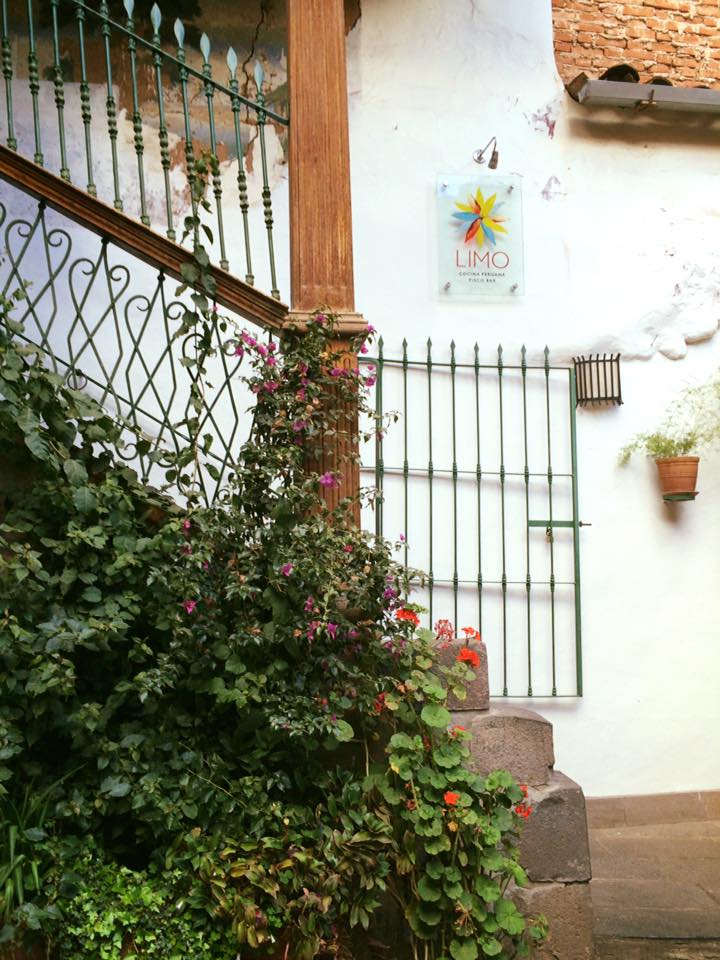
One last pisco sour, and this one infused with Chad’s new favorite fruit, the golden berry.
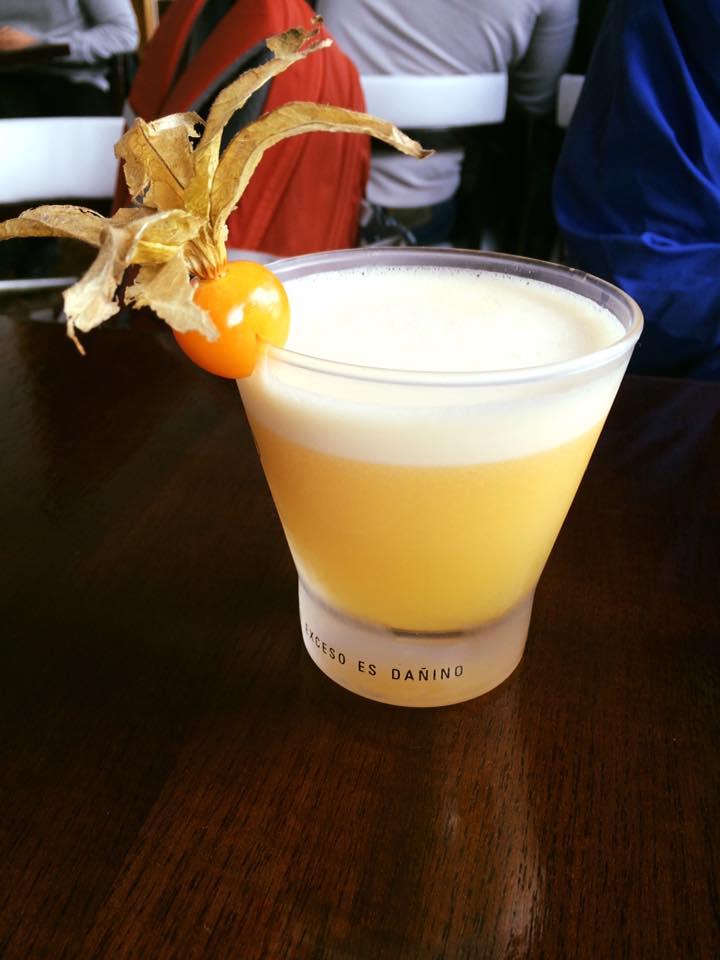
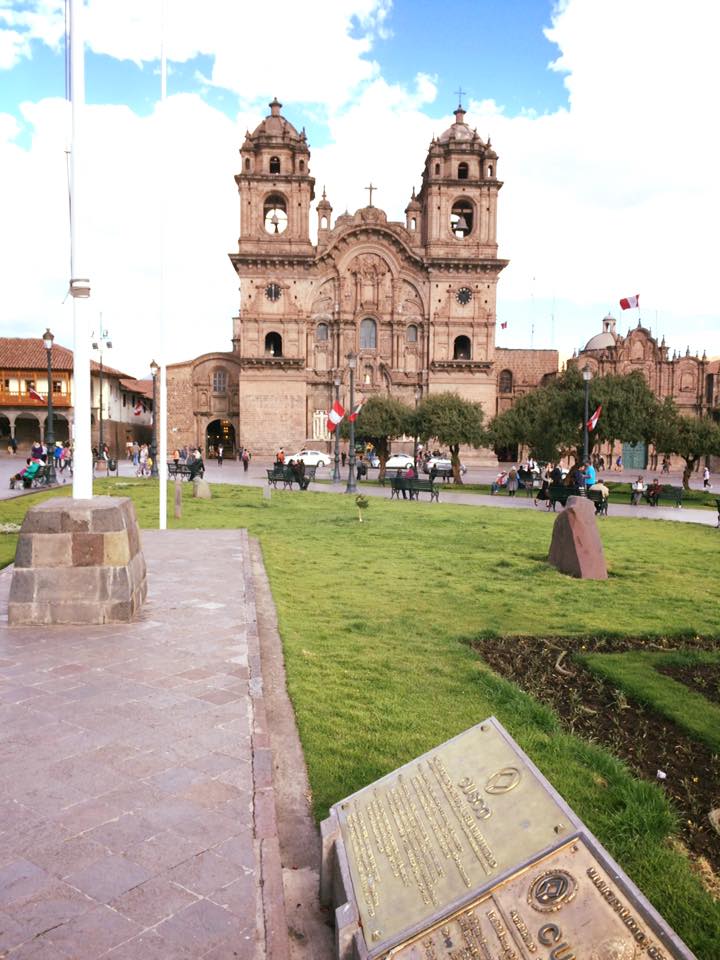
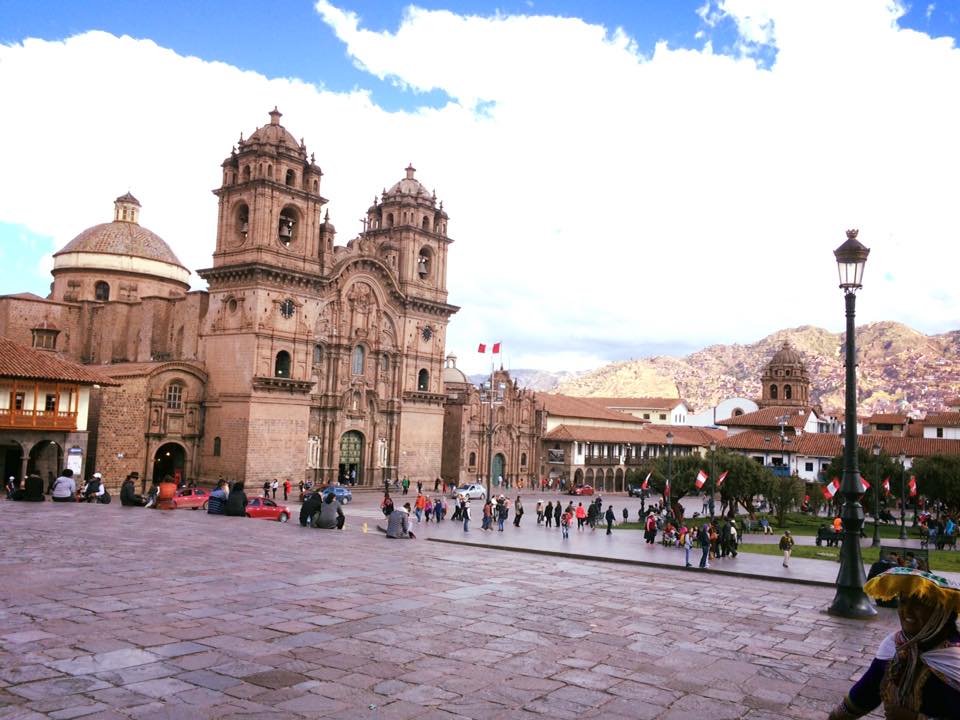
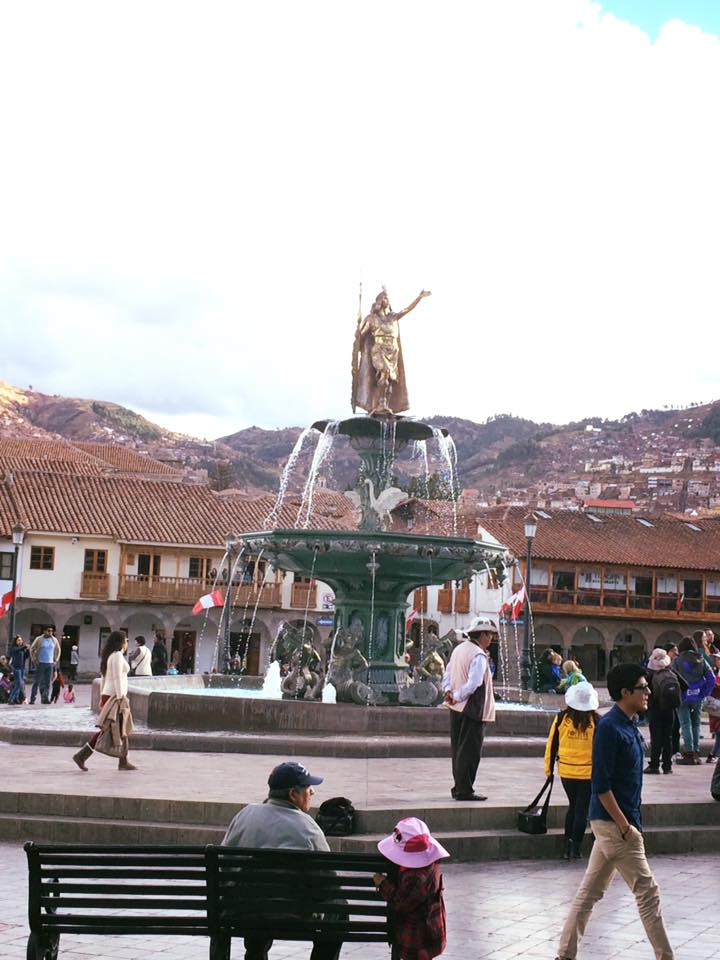
If you are planning to visit the Sacred Valley, and Cusco especially, start training by setting your treadmill’s elevation on high!
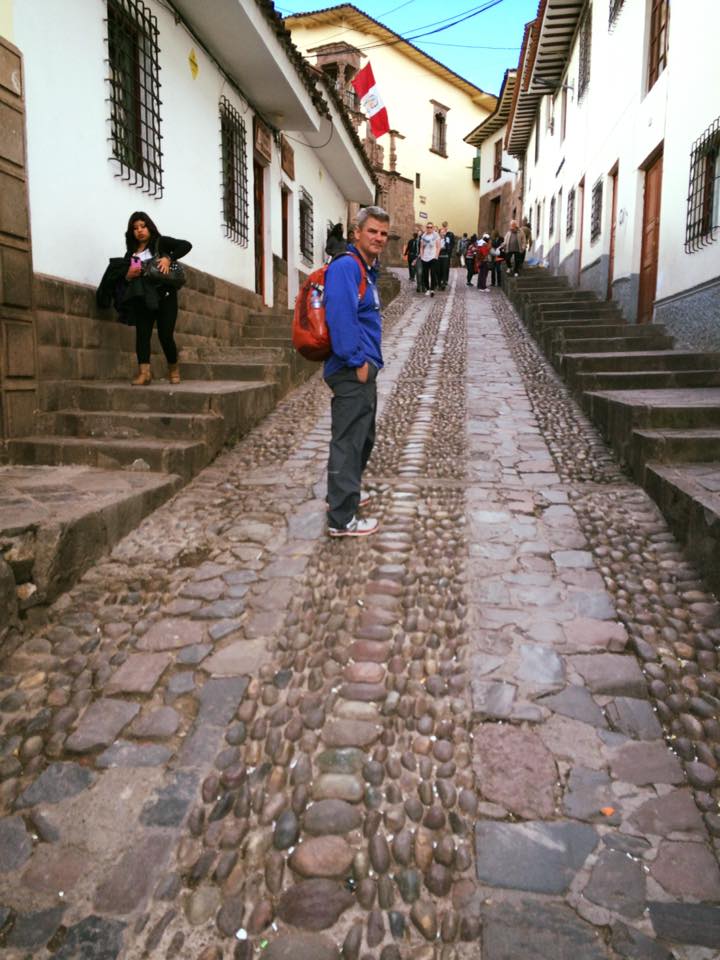
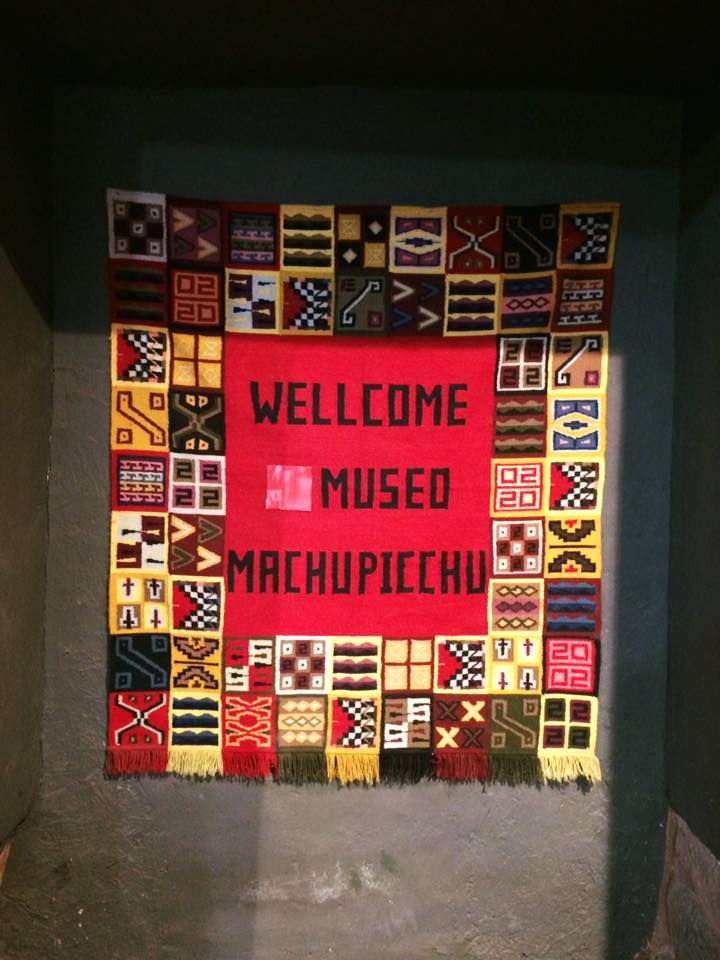
The night flights out of Lima are no joke! Our flight left after midnight, as most flights do, and behind us was the economy line at 9:00 p.m.! Chad is all smiles because, if you read my post on Lima, you know that we got a GREAT deal on first class tickets which allowed us to avoid this mess!
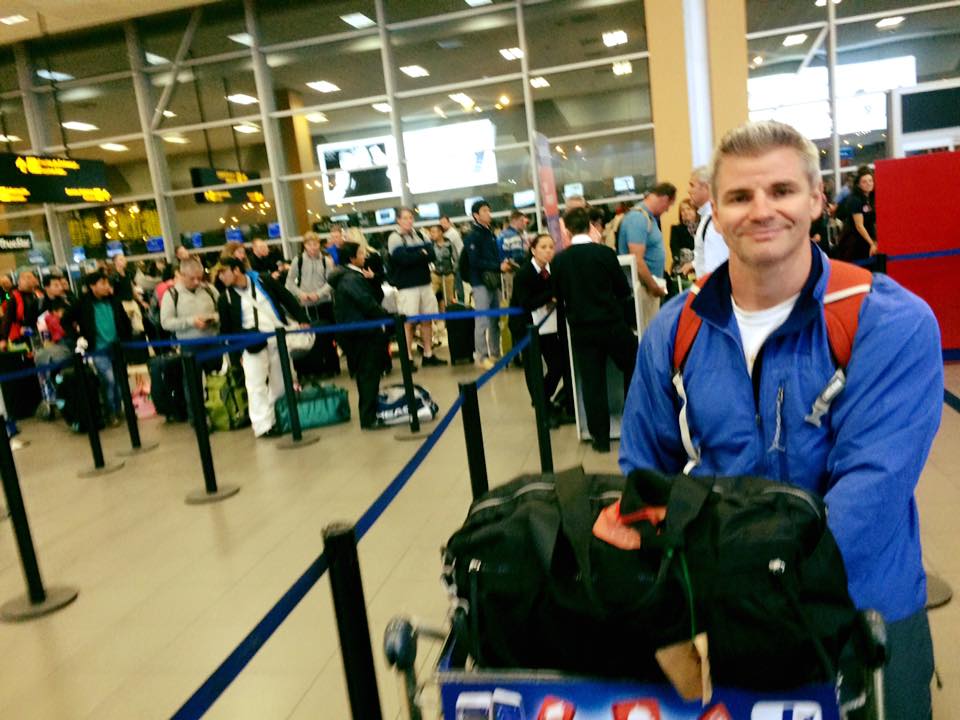
And, we got to relax inside this lounge, which apparently serves first and business class for all flights out of Lima. It has an indoor and outdoor seating area, with food and beverages, as well as a lounge of massive recliners. It is also packed!
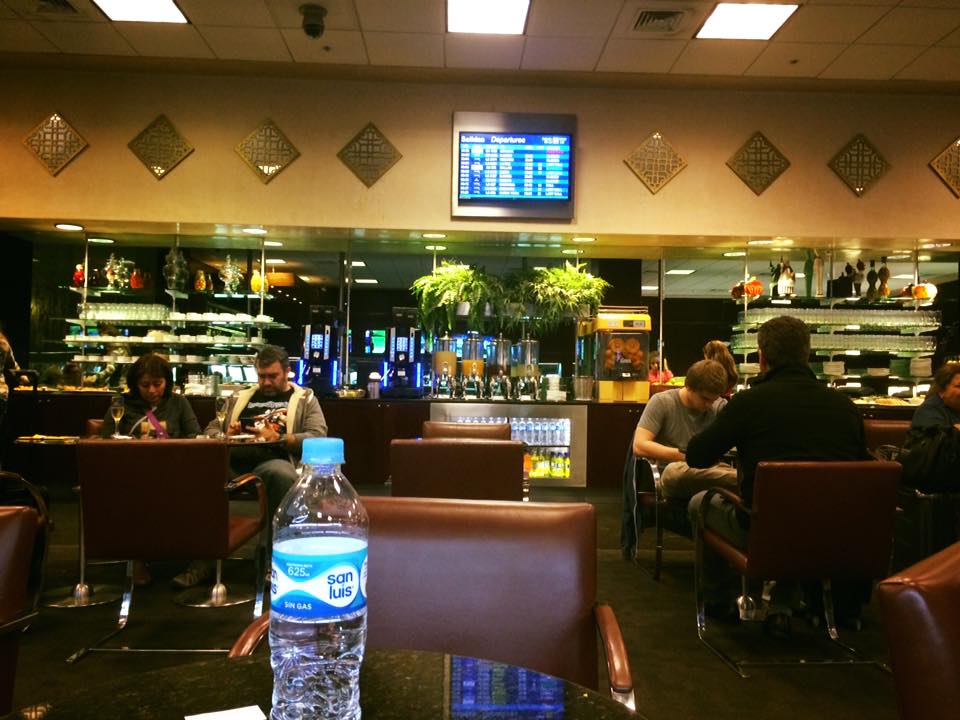
After the day we had, all I was looking forward to was this:
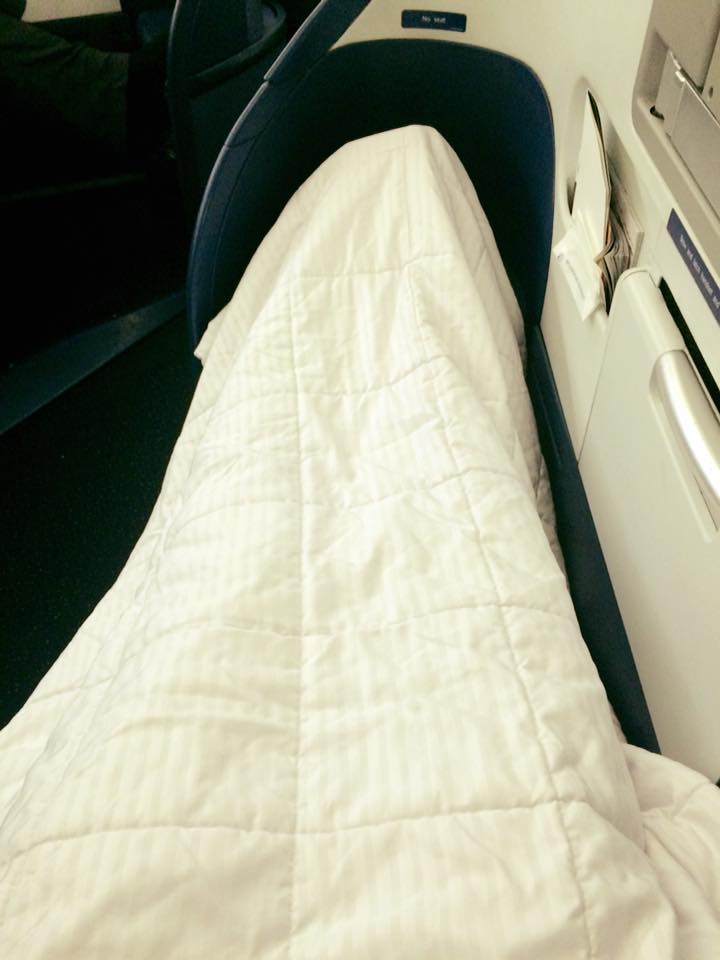
Most people do not end their trip in Cusco like we did. Most go on to visit the Amazon for a couple of days. In hindsight, I wish that we had added that to our itinerary, but I guess we left something for next time!
When it was all said and done, we paid approximately $6,000.00 for the land-based portion of the trip, which included all hotels, all private transfers, all domestic travel by plane, train, and bus, all breakfasts, two lunches, one dinner, all privately guided excursions with driver and bilingual guide, and all entrance tickets to all sites. The price did not include international flights, the remaining meals, gratuities, the donation to the orphanage, and items we purchased in-country. This was an eight-day adventure, but we only missed four work days!
I hope you found this post helpful in planning your own Peruvian Adventure! I would love to hear your feedback and suggestions so leave me a comment below or send me an e-mail. Until then, adios y viajes seguros!

Speak Your Mind